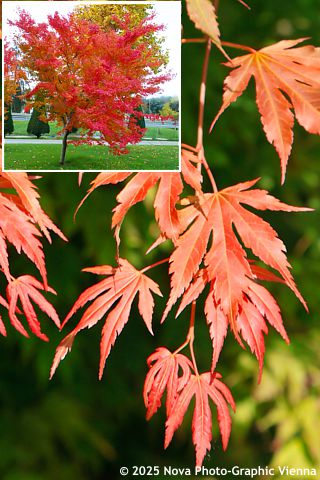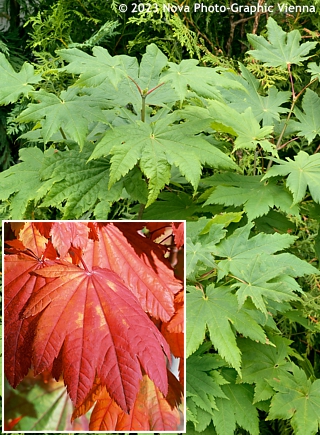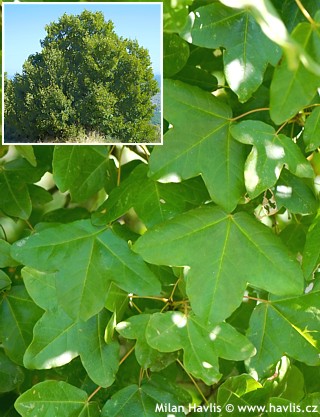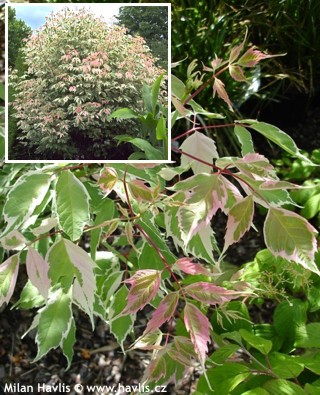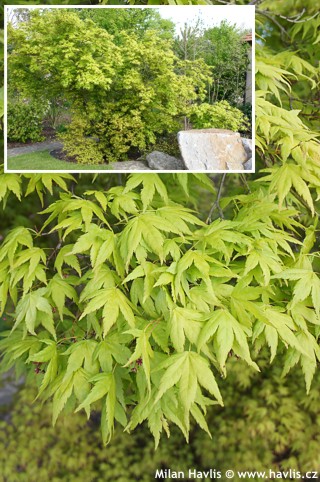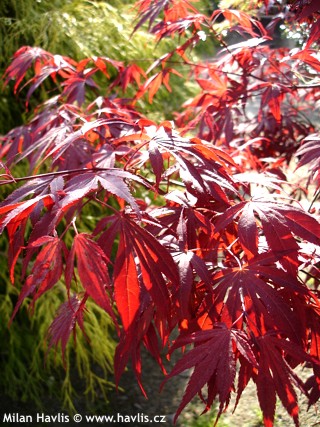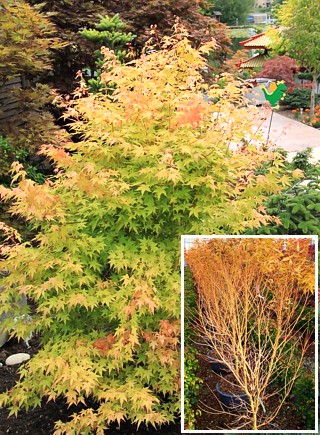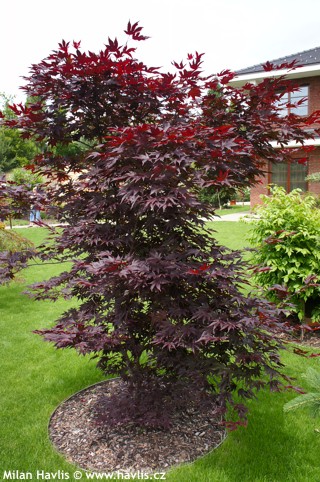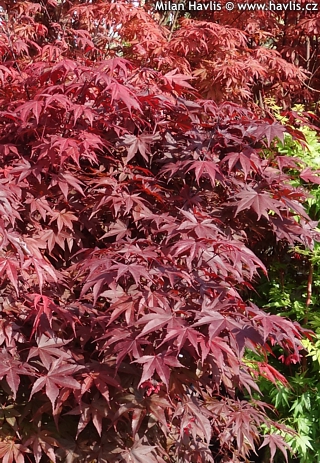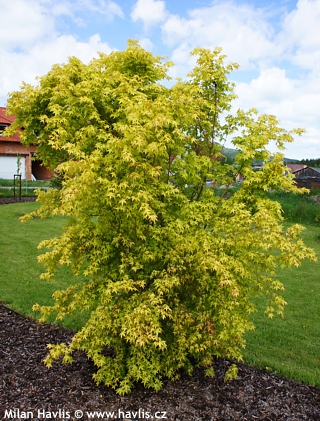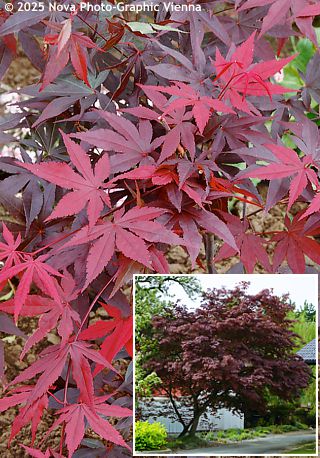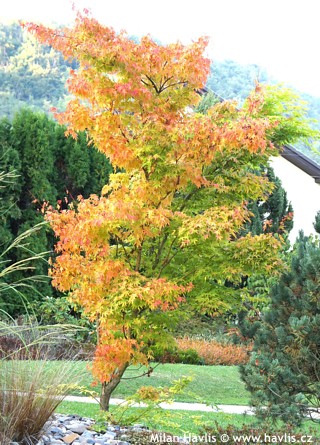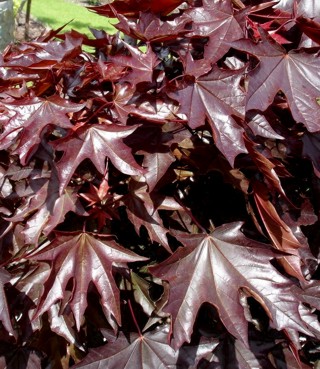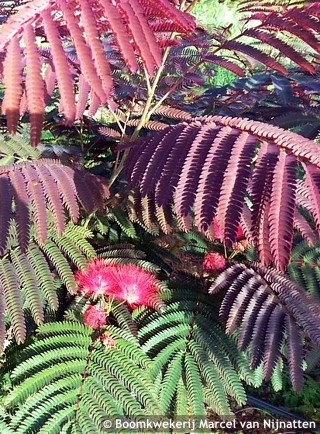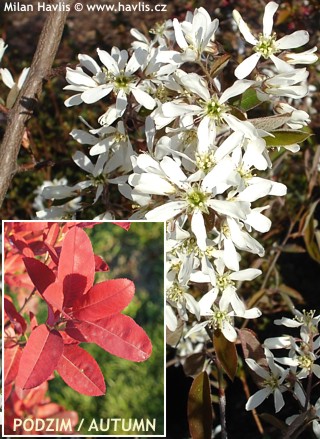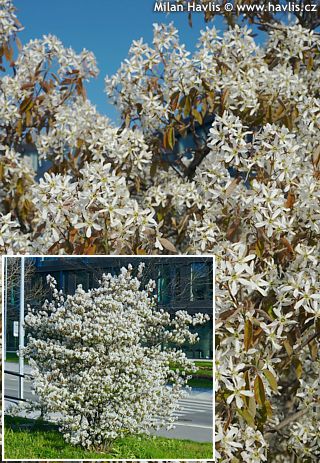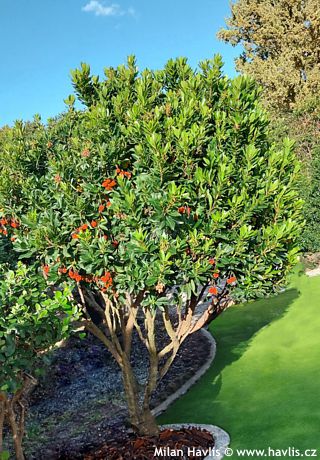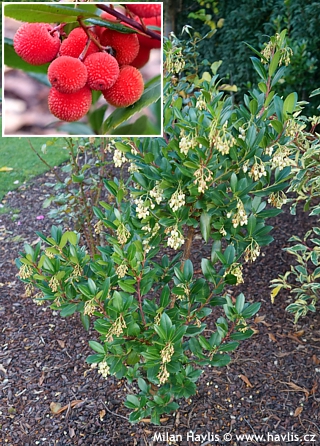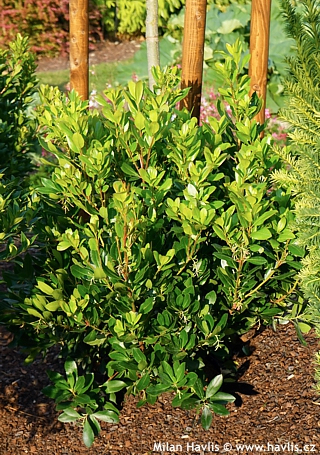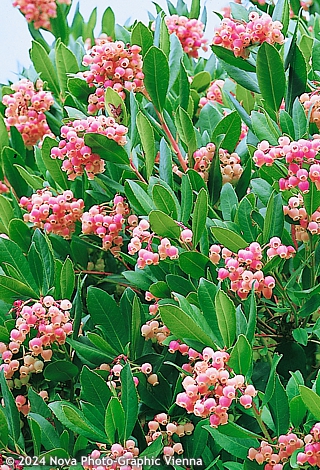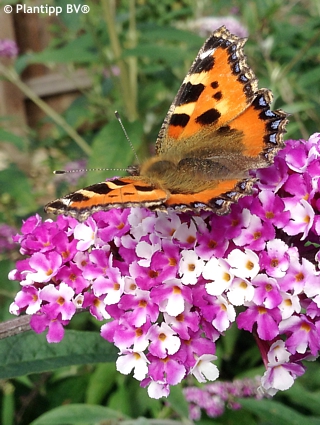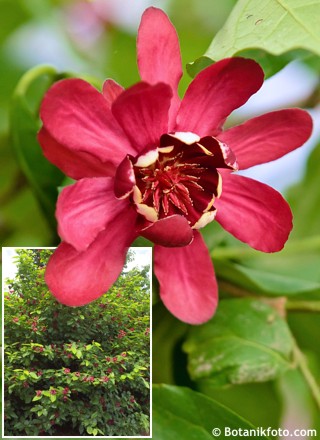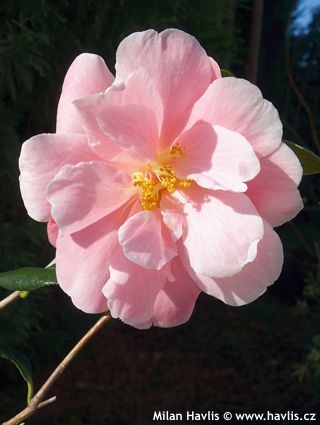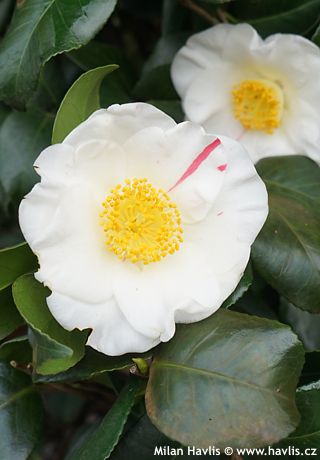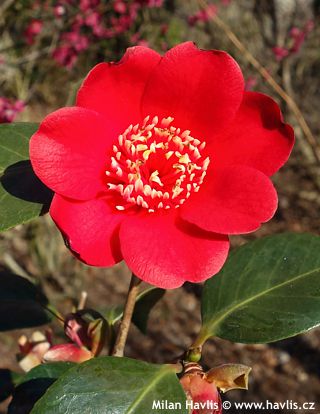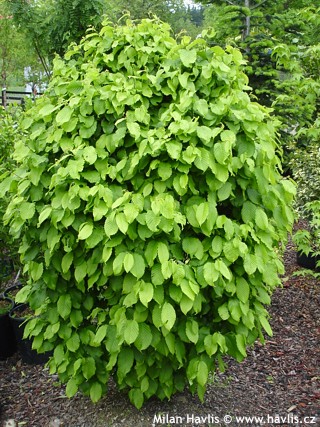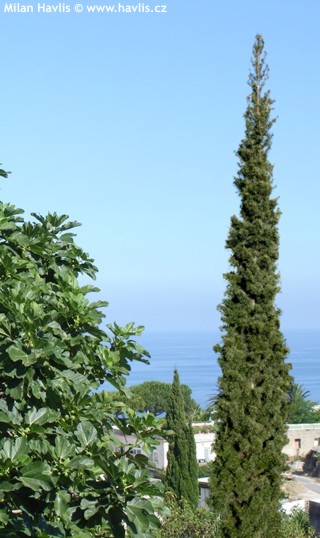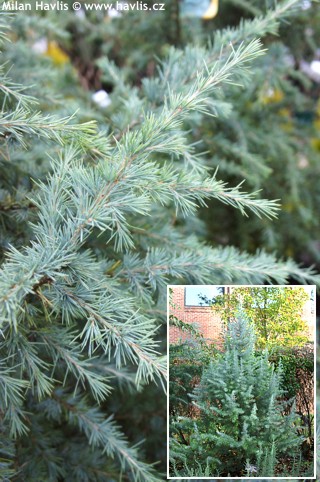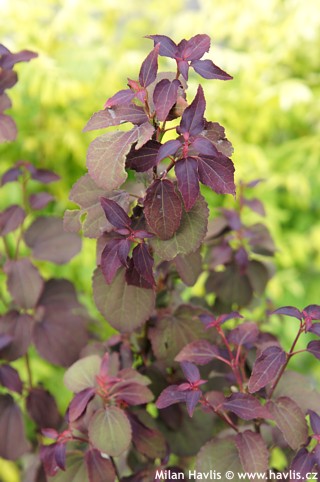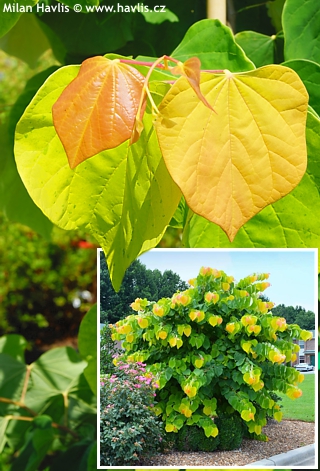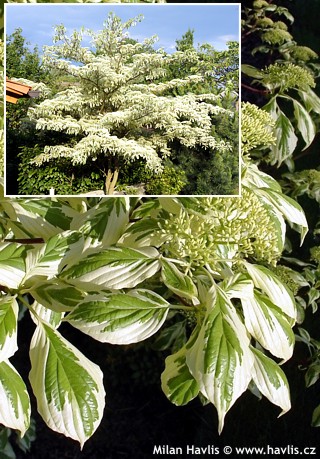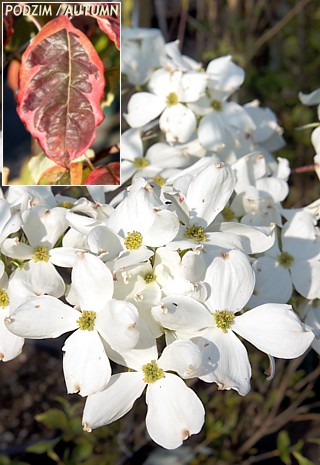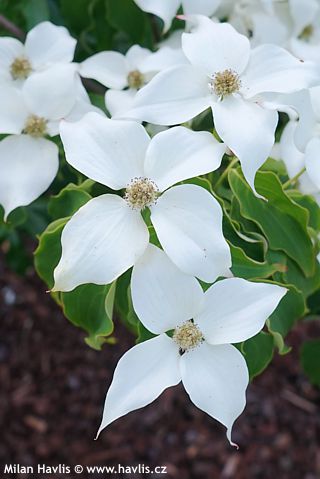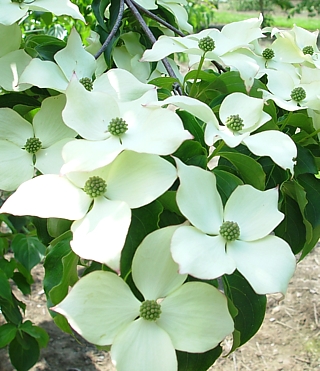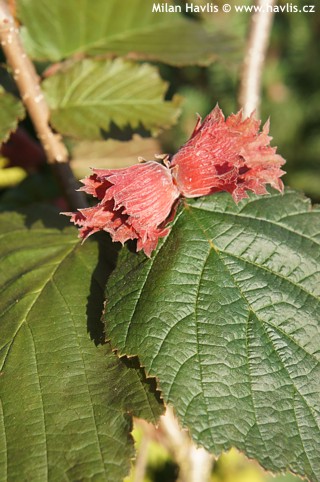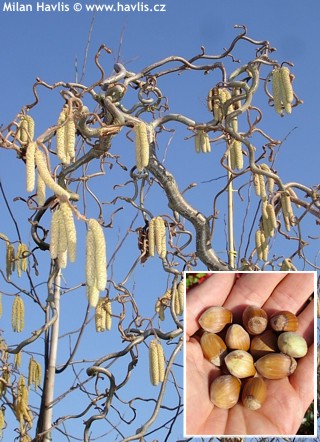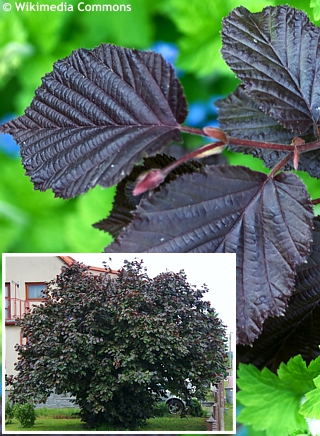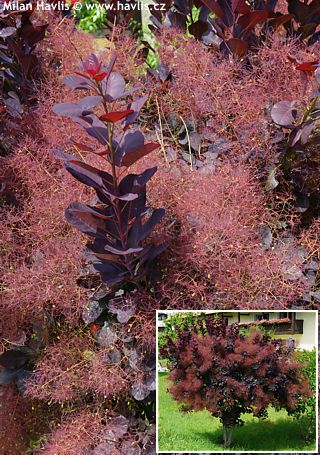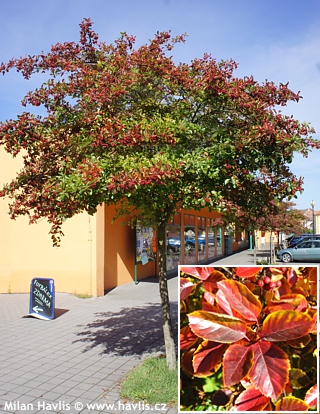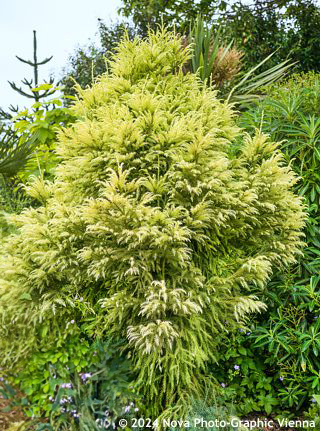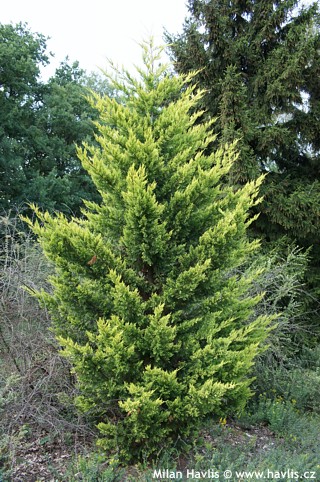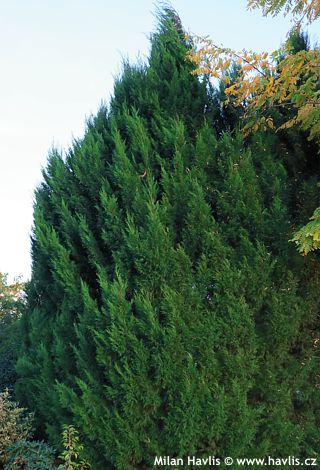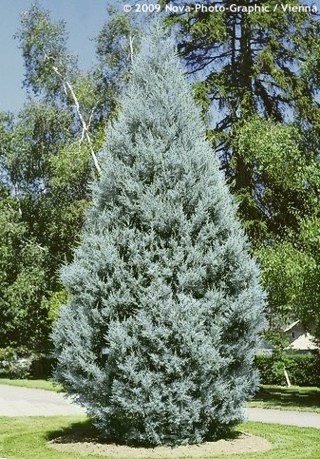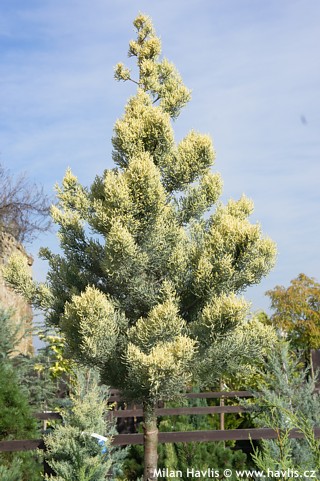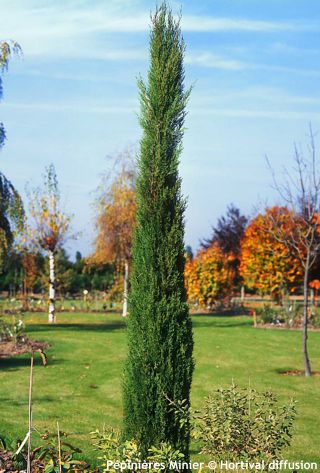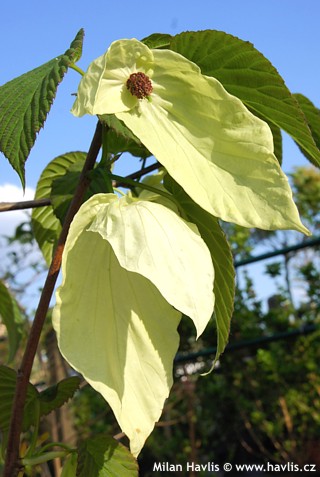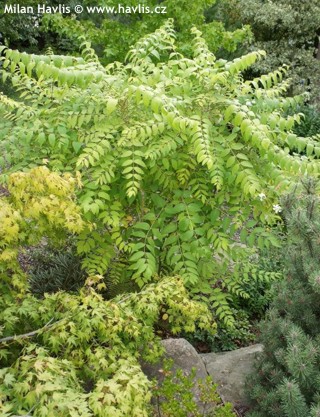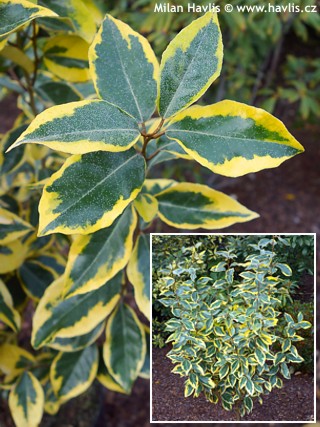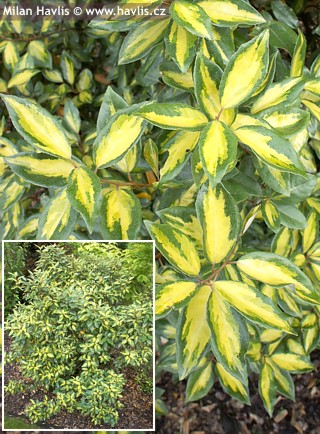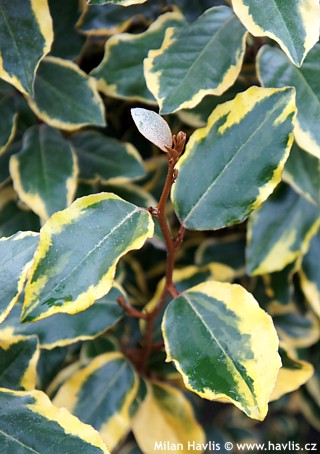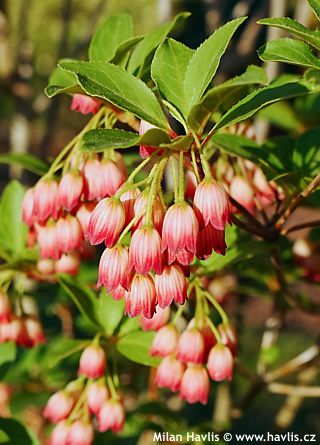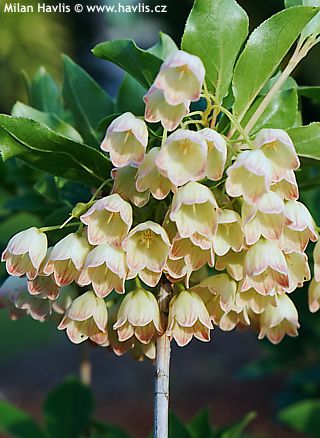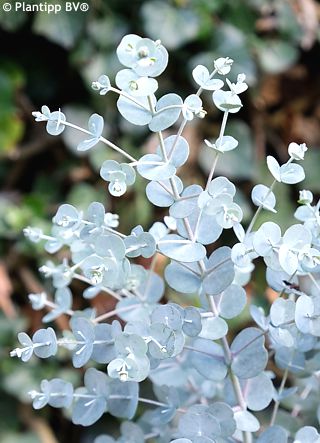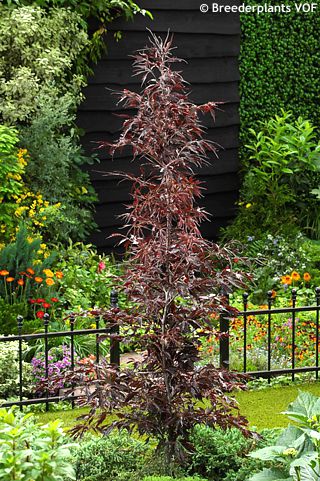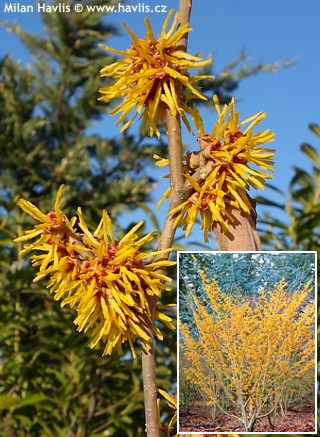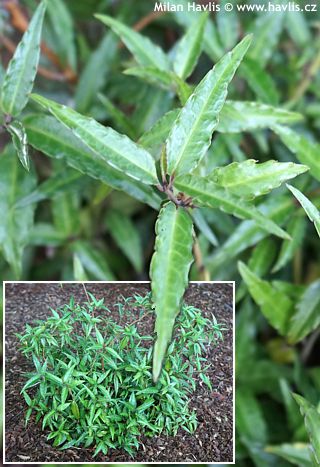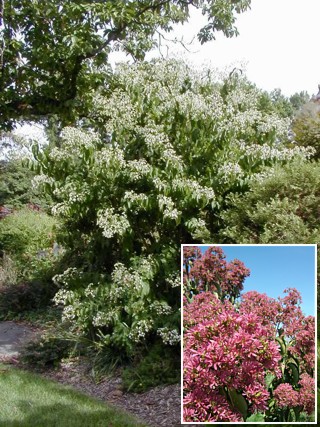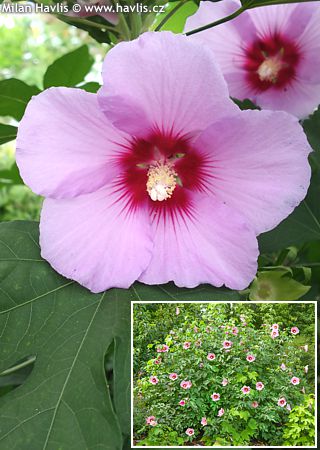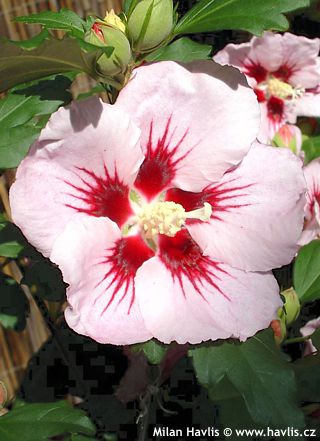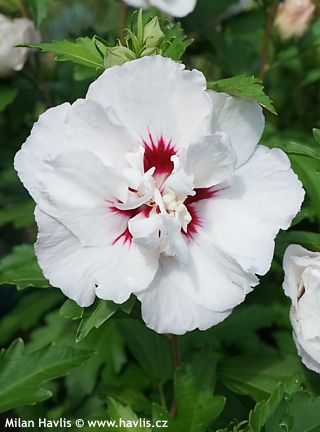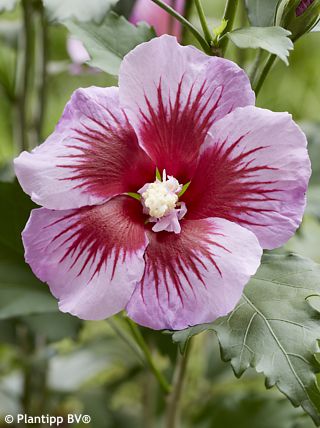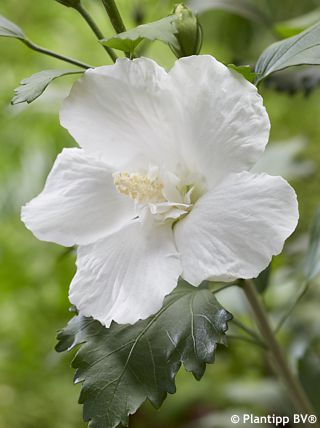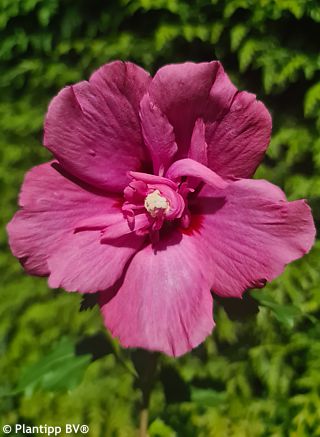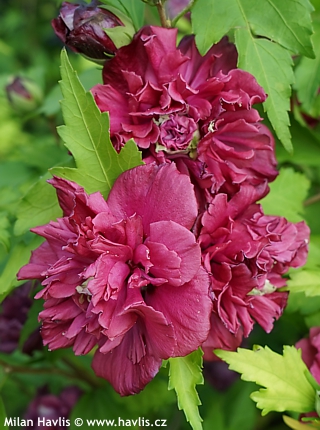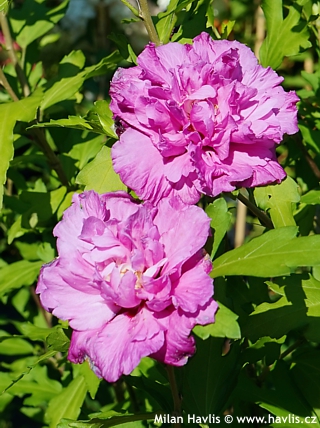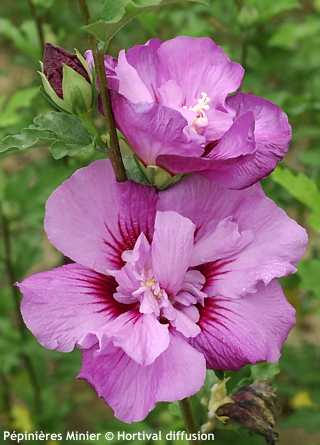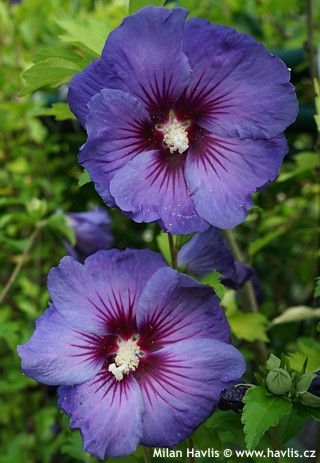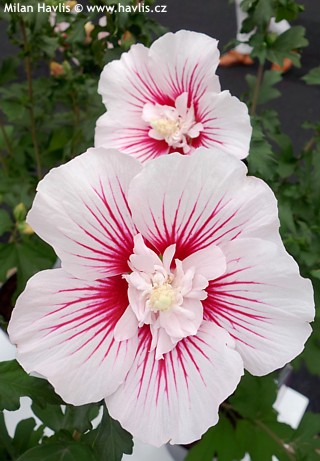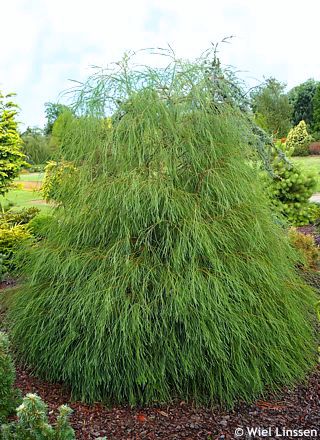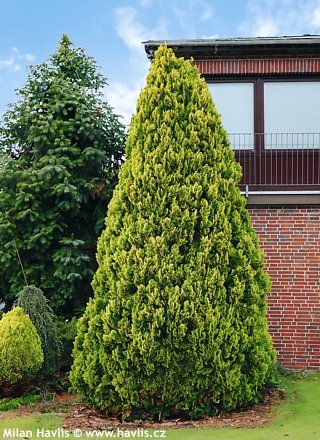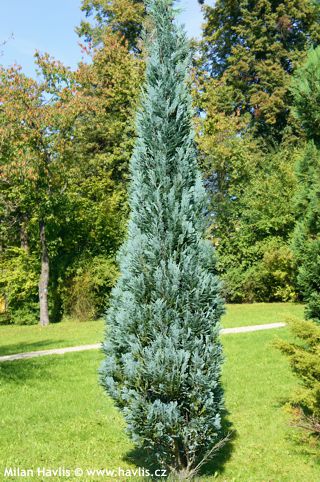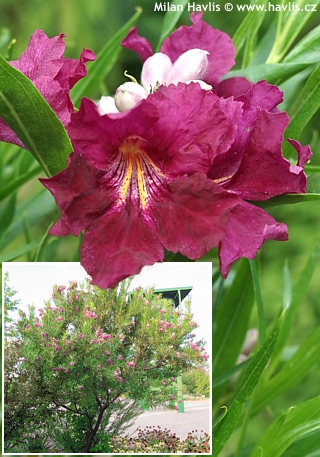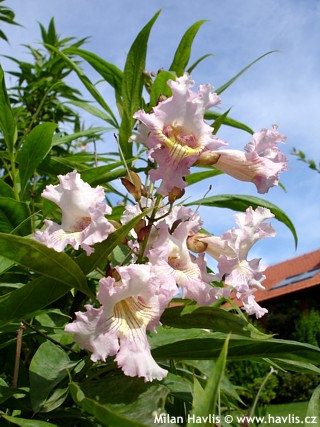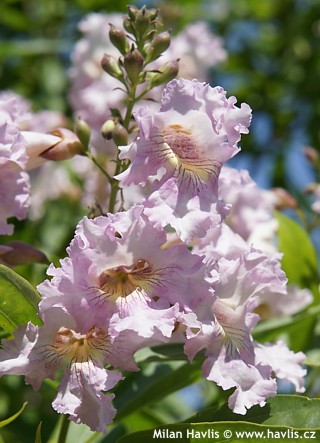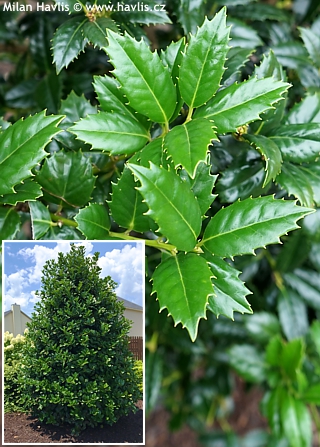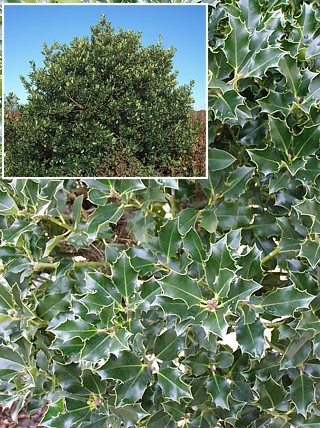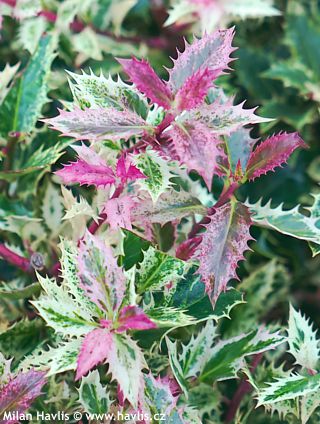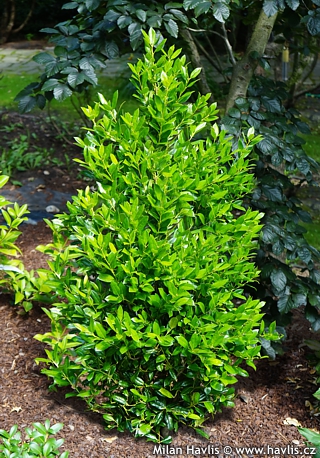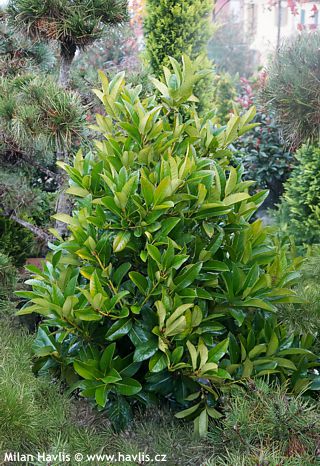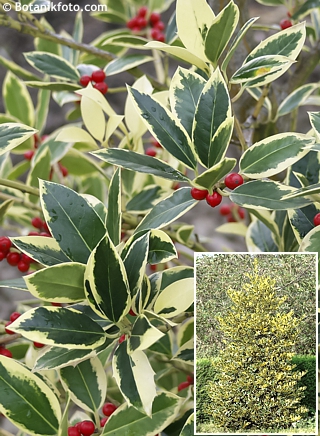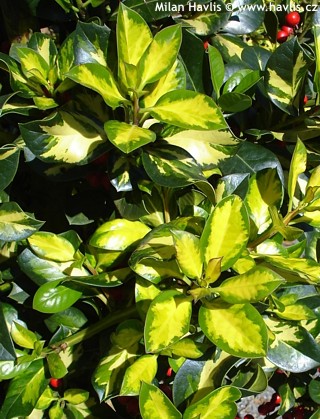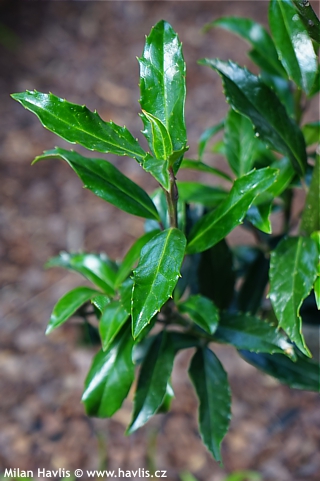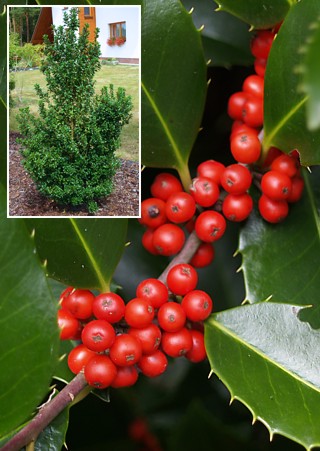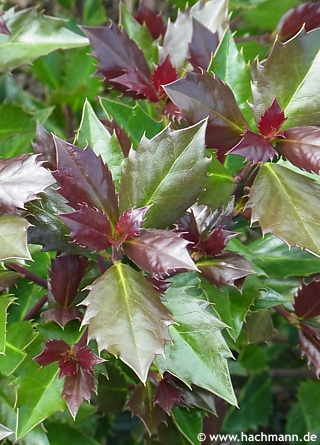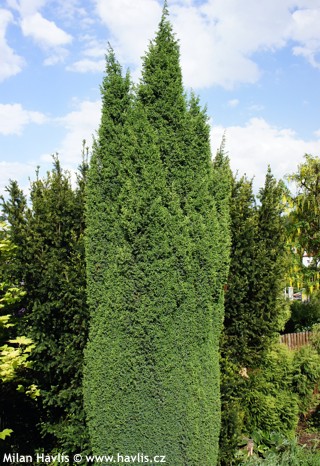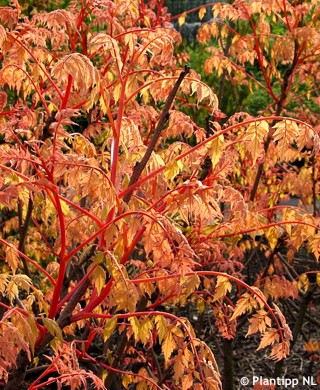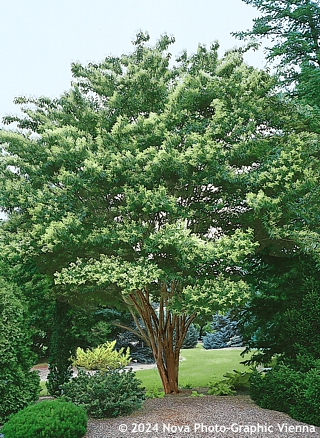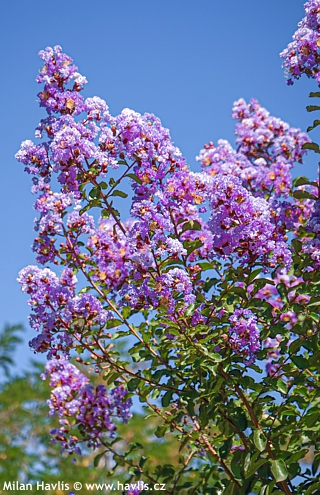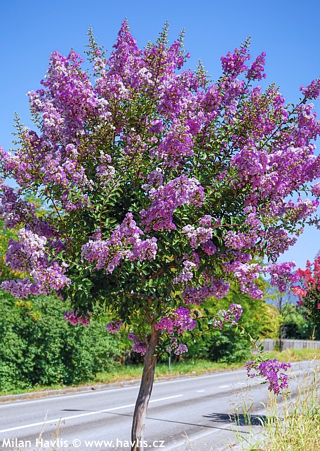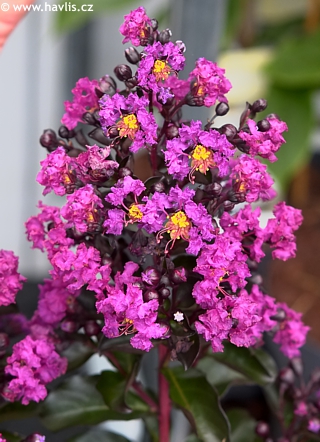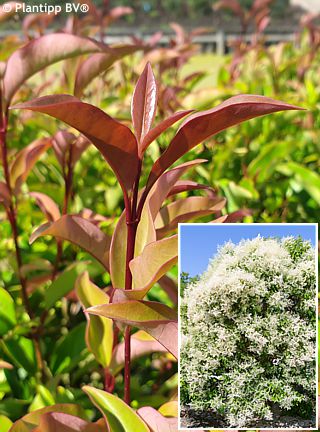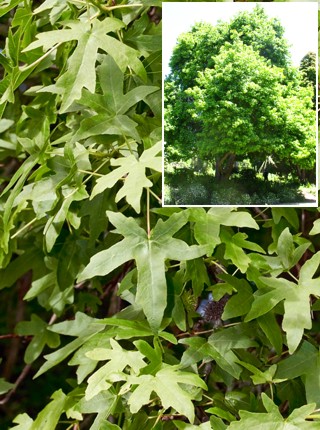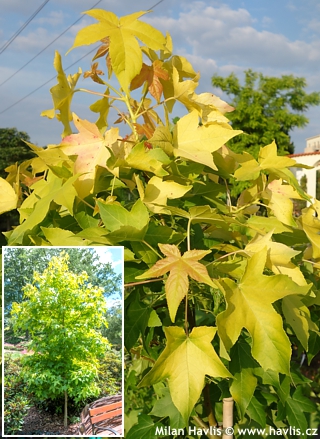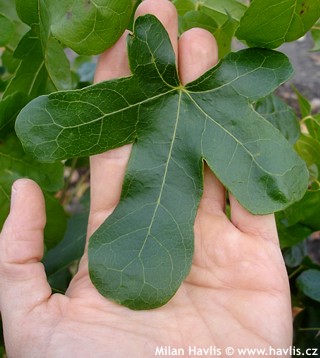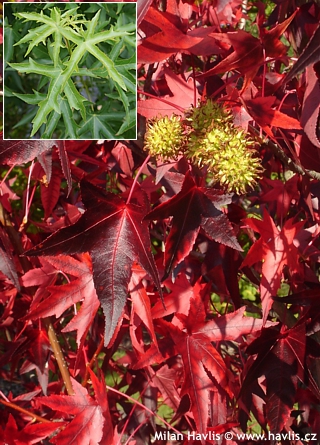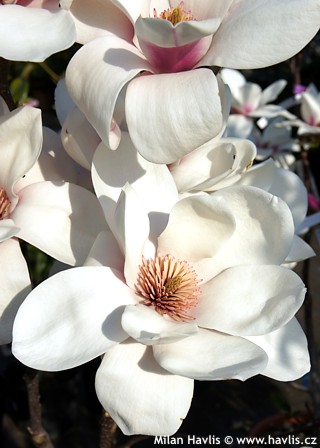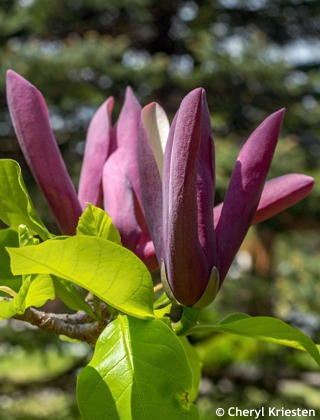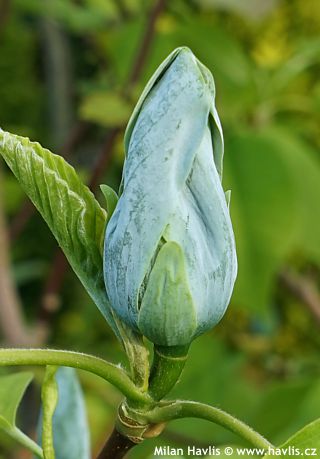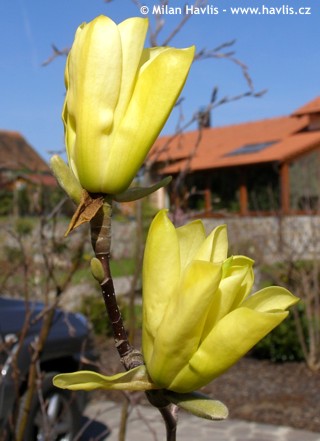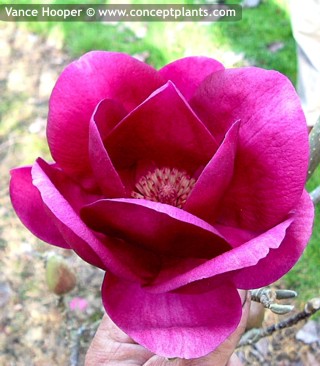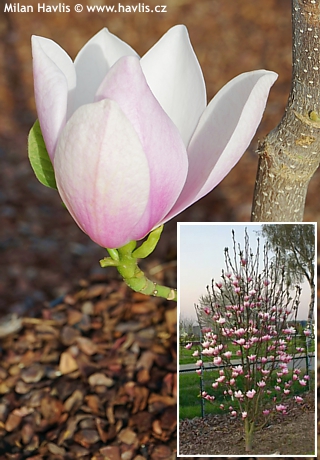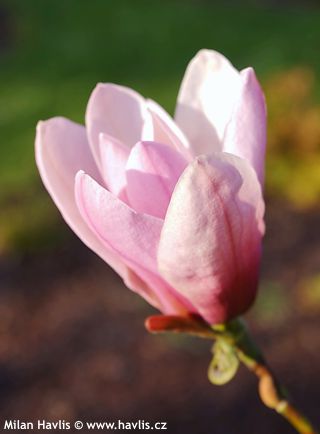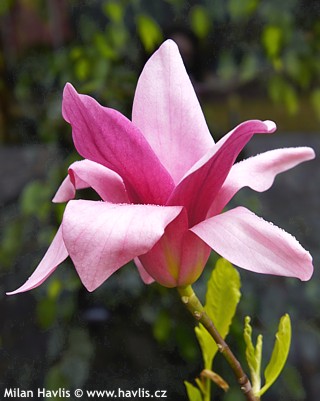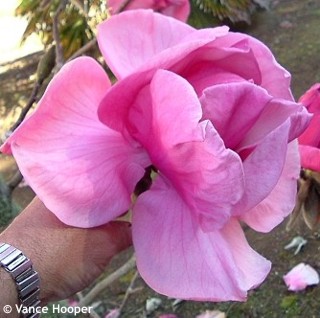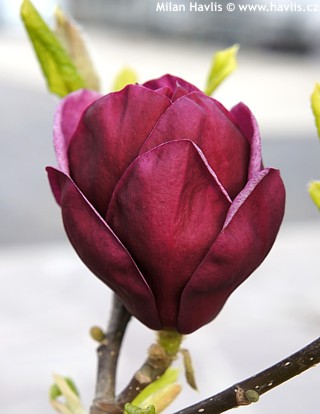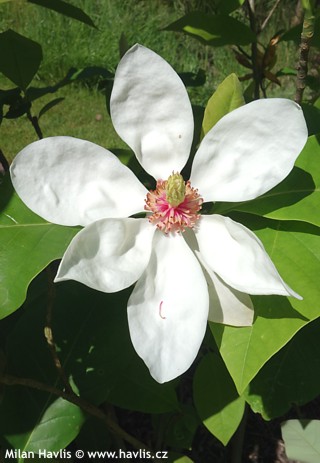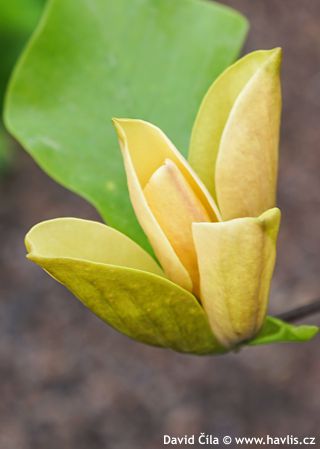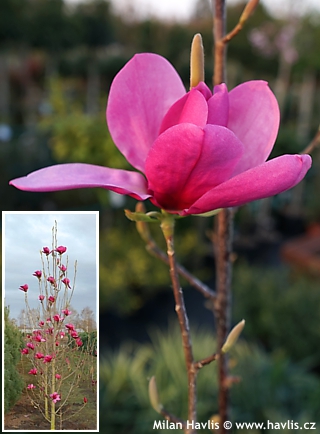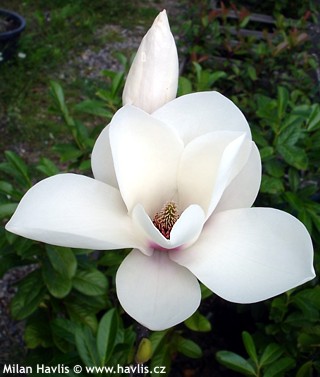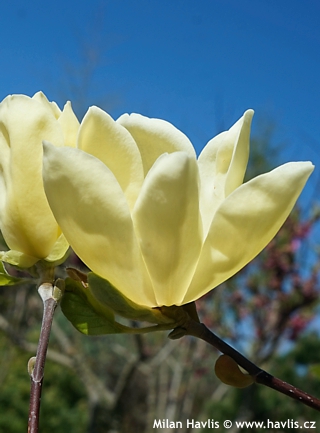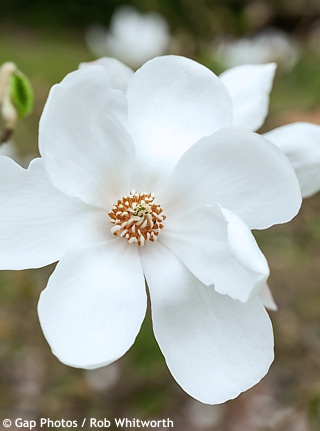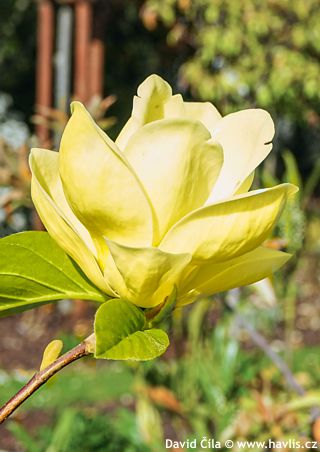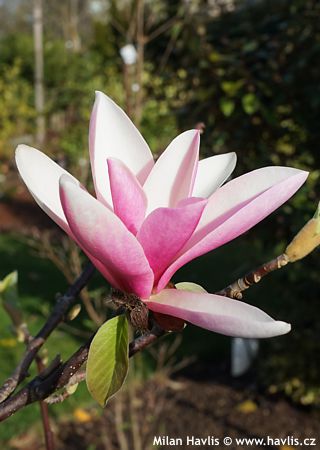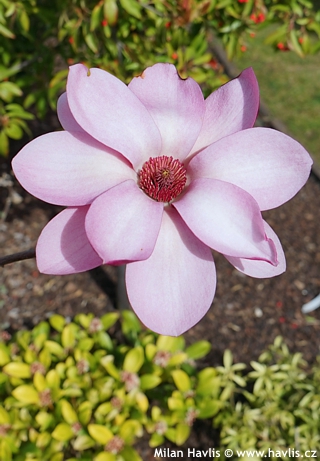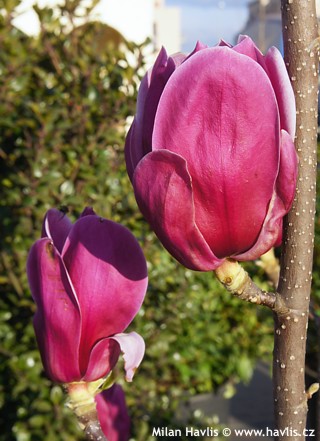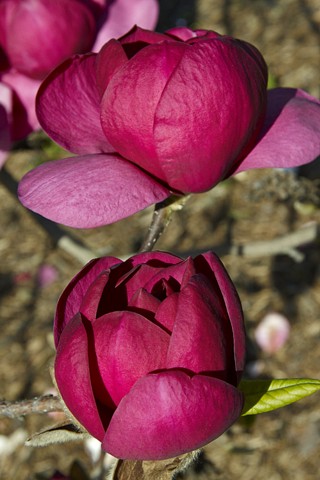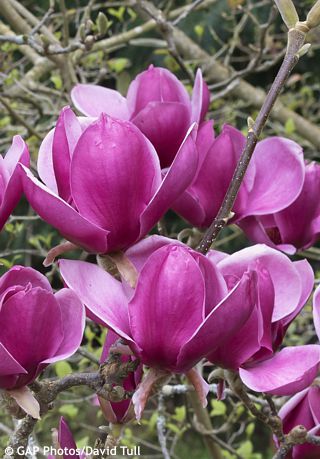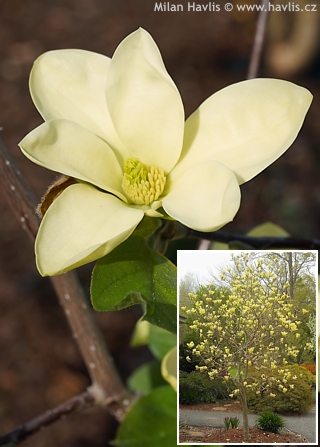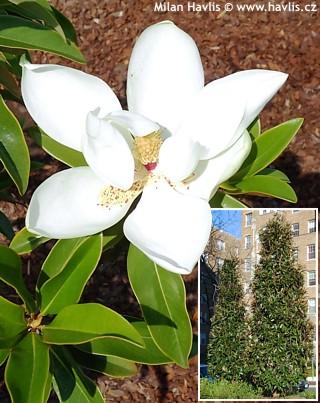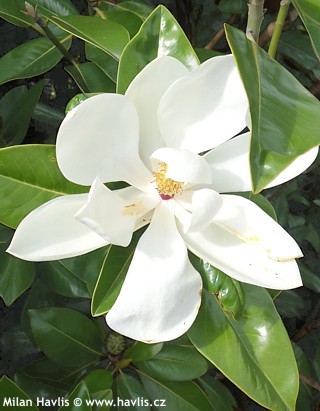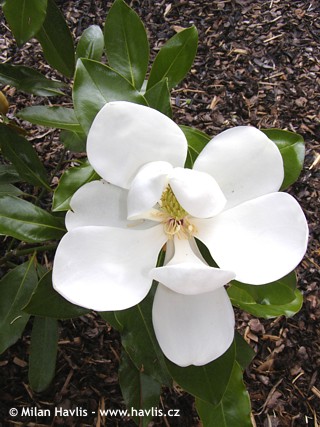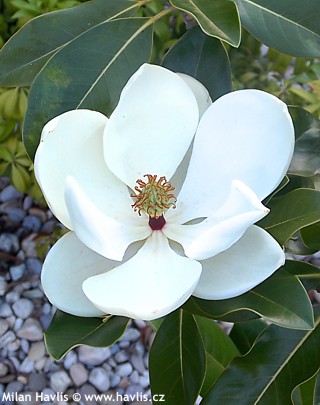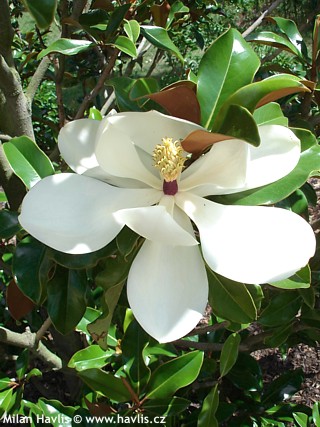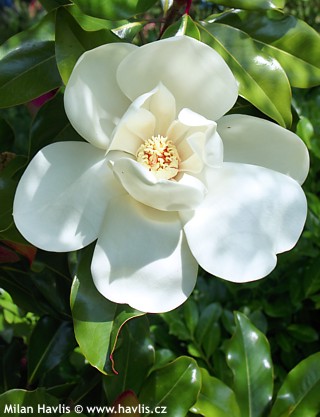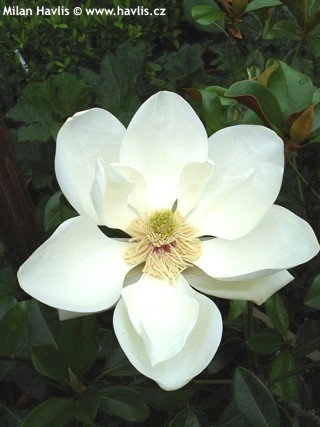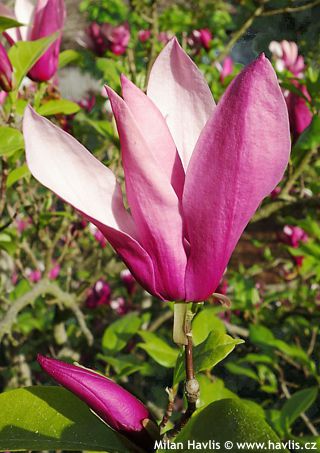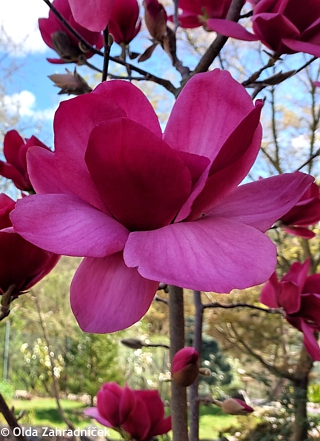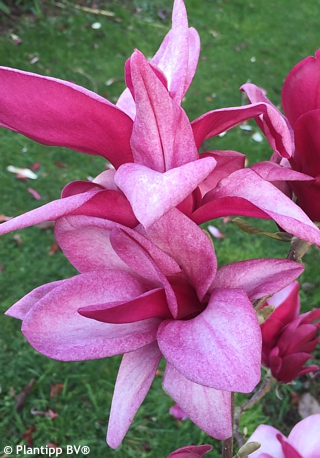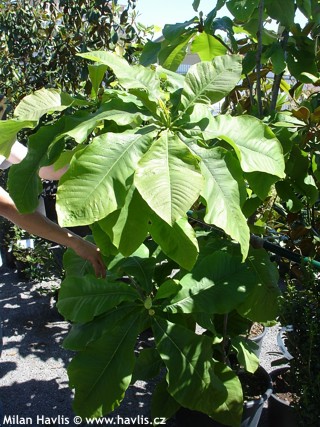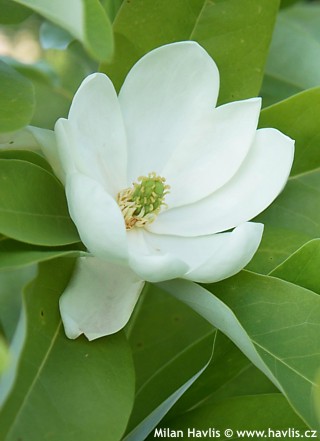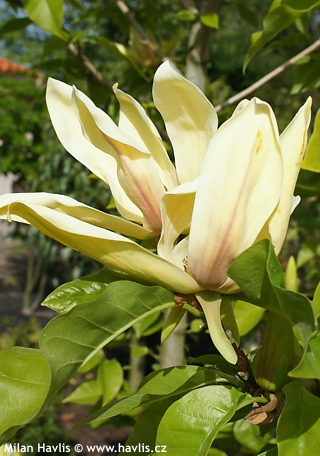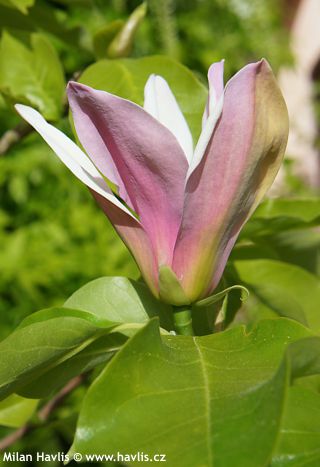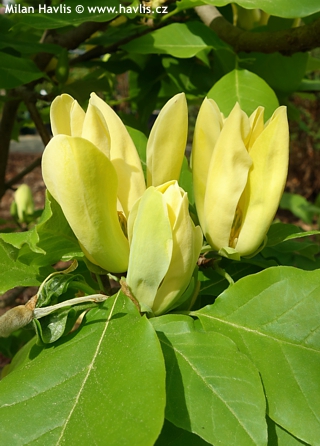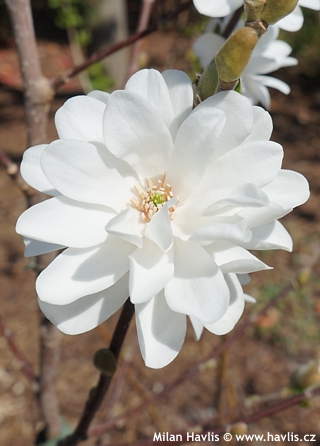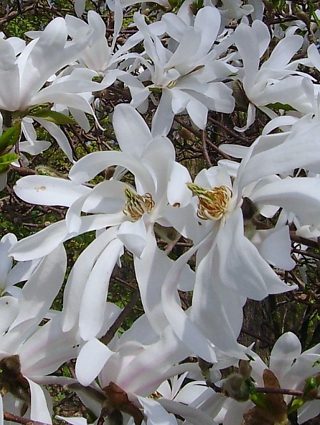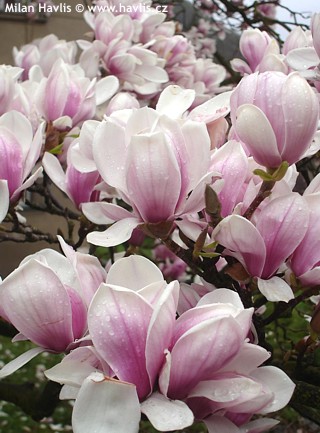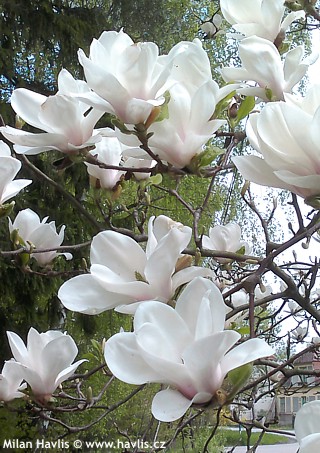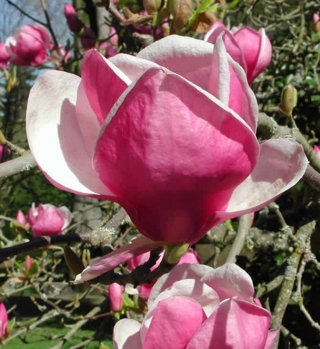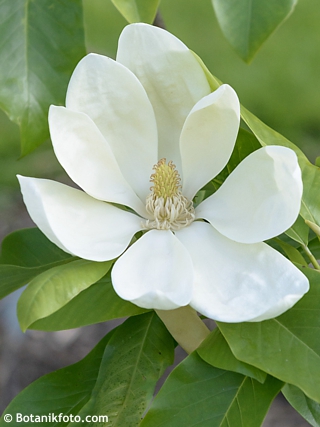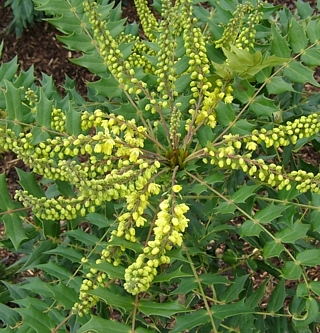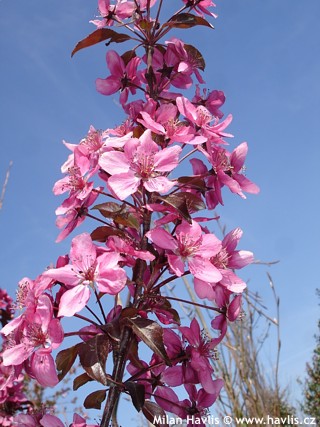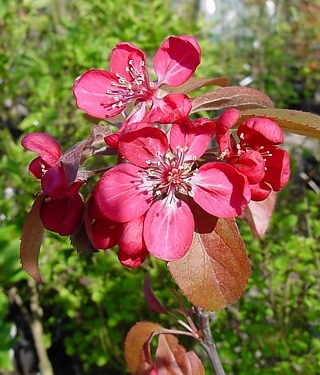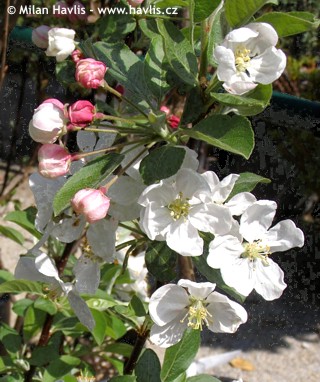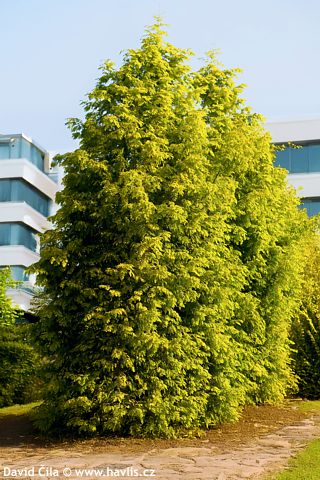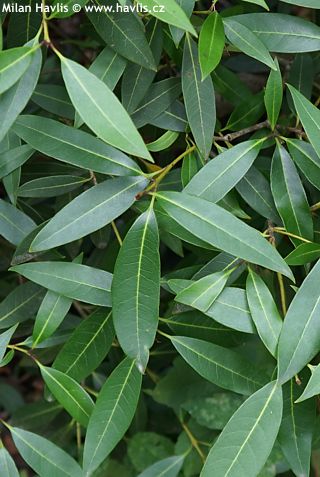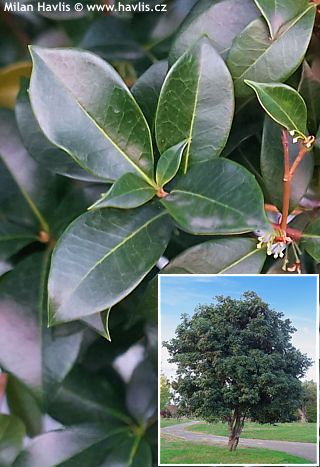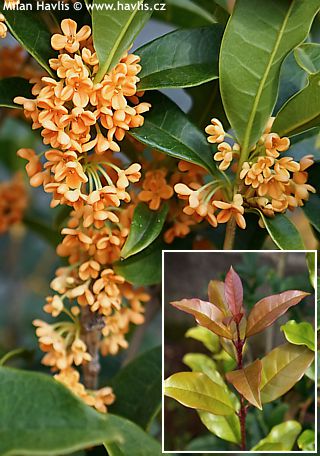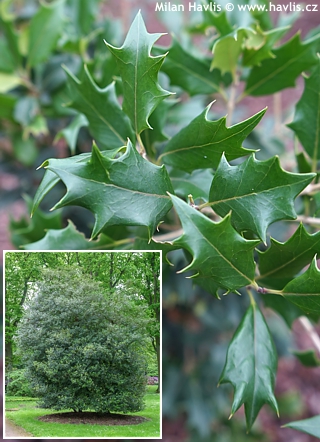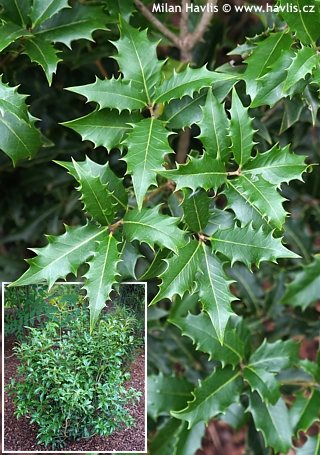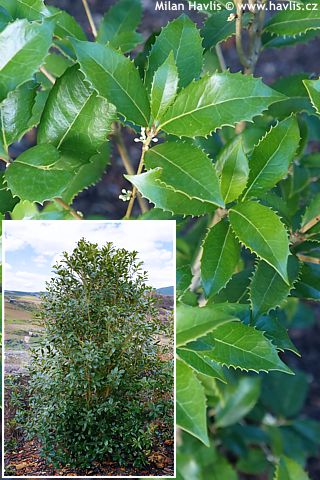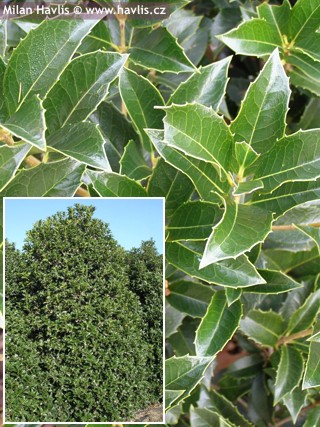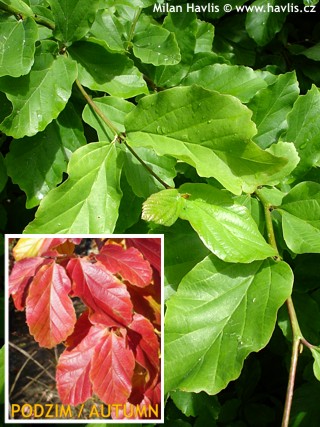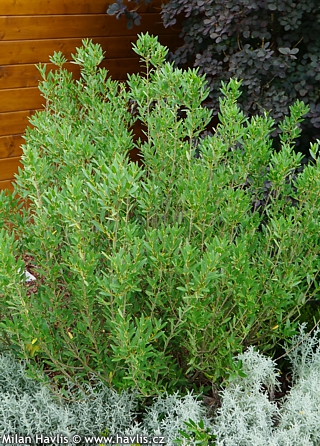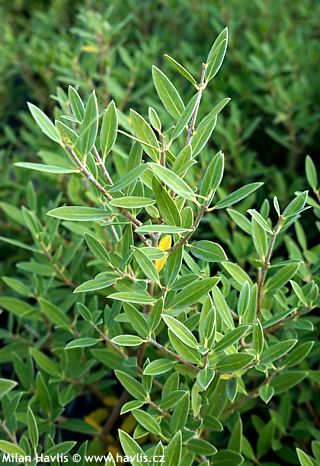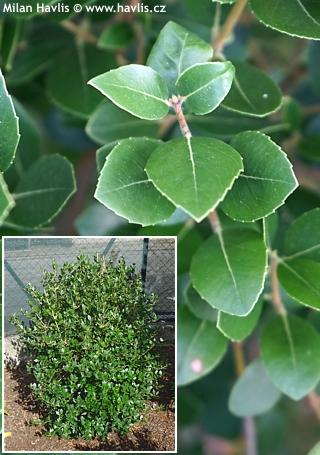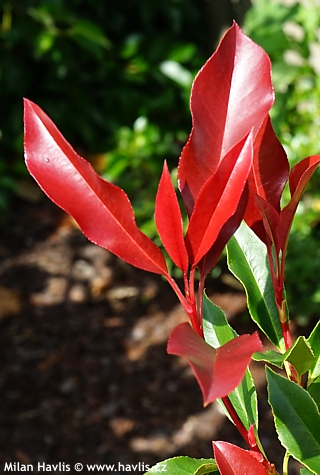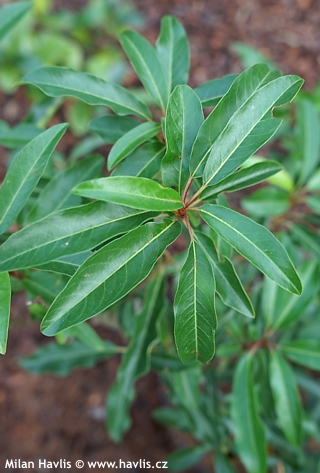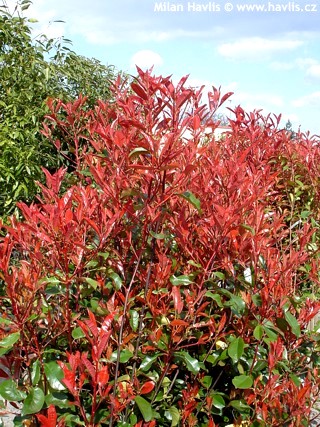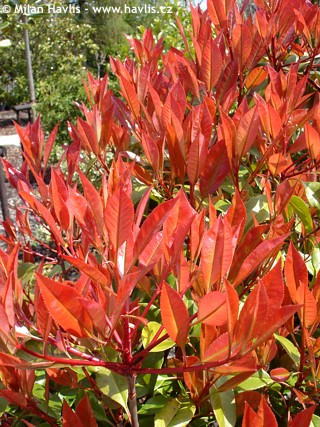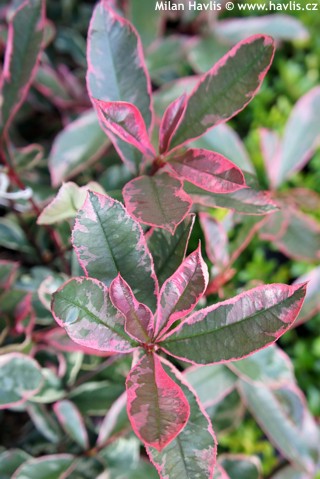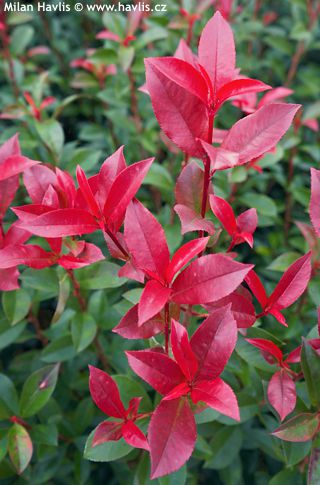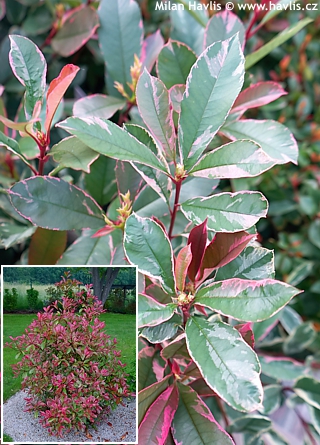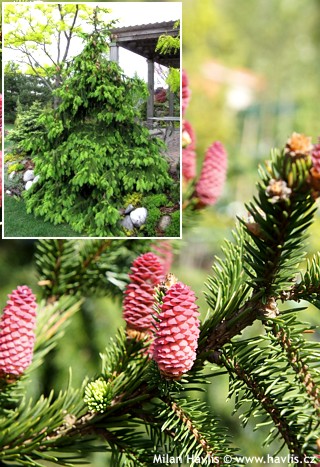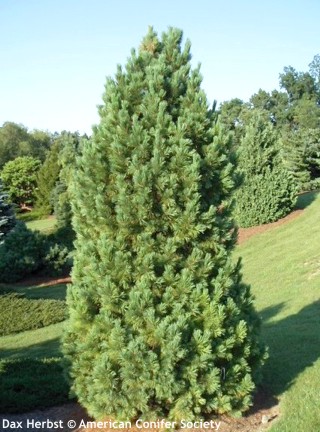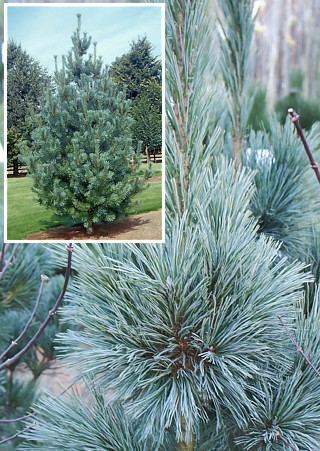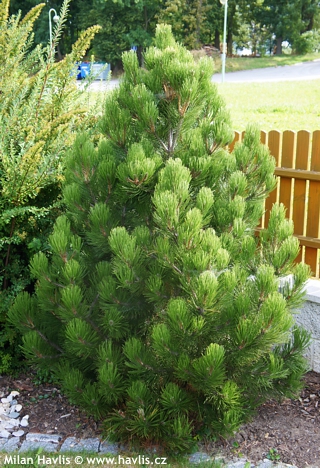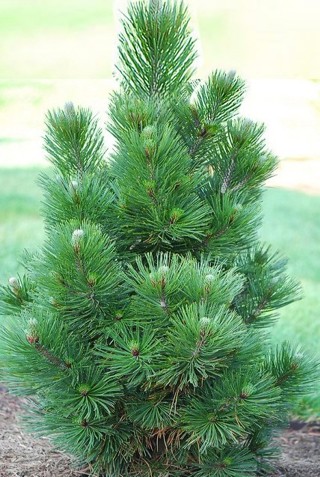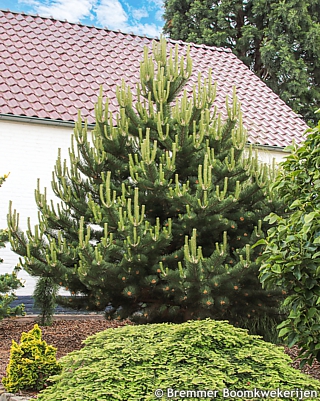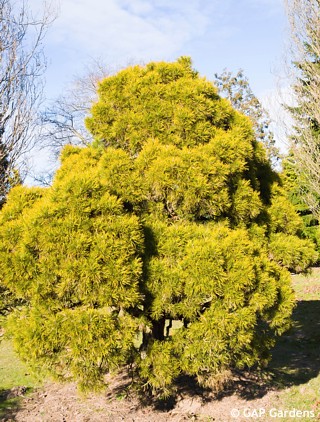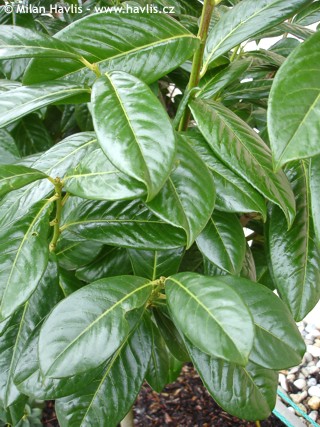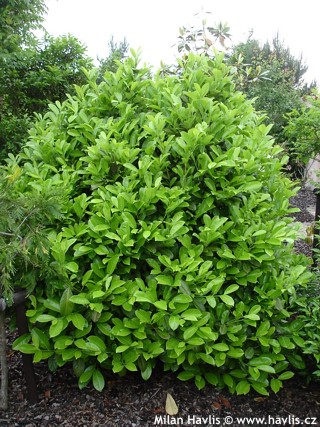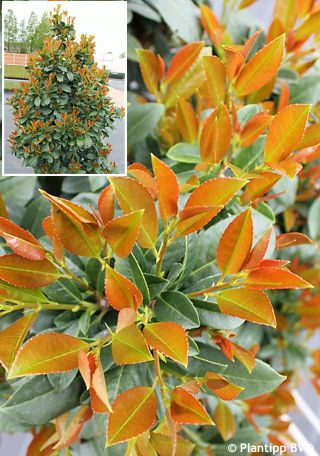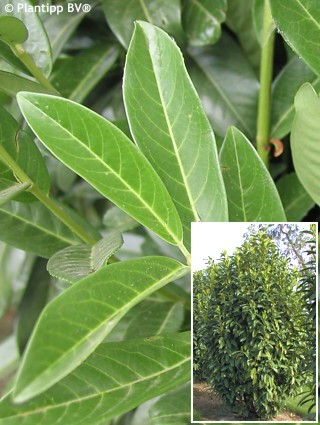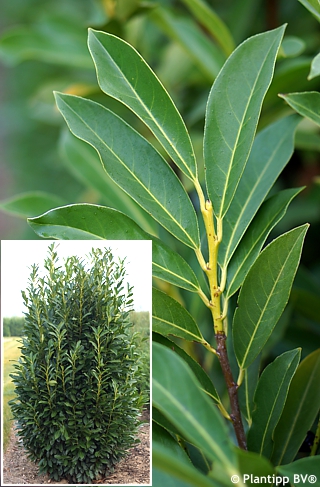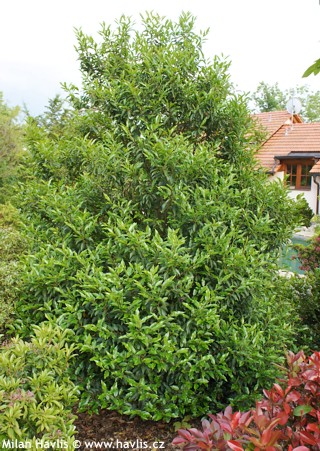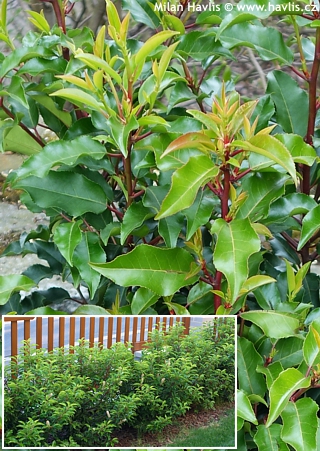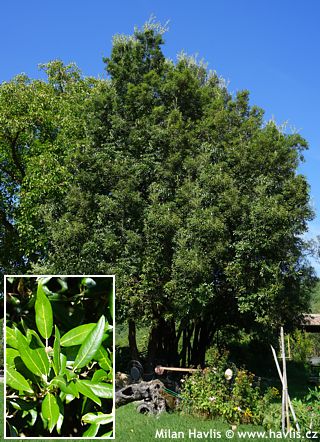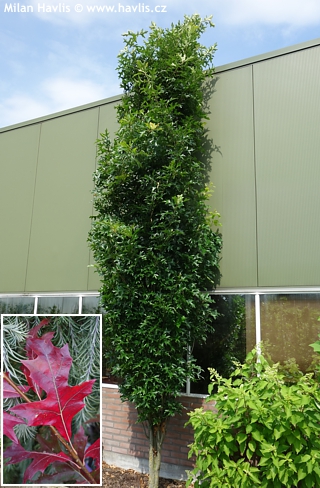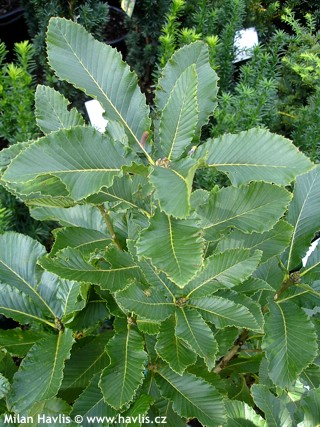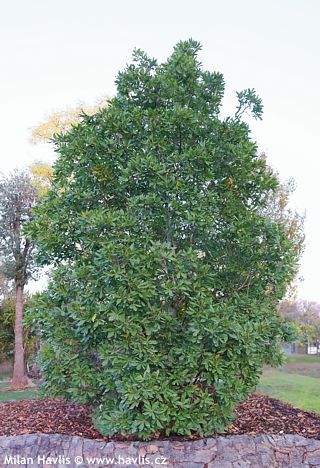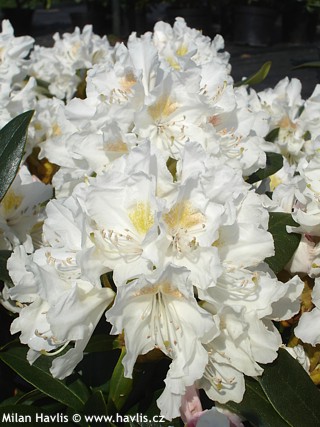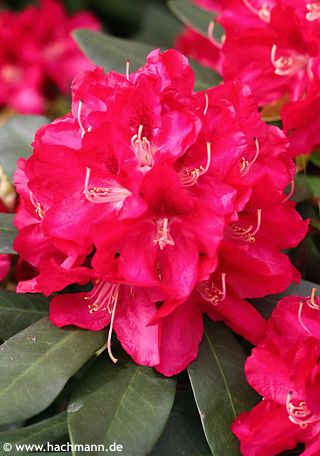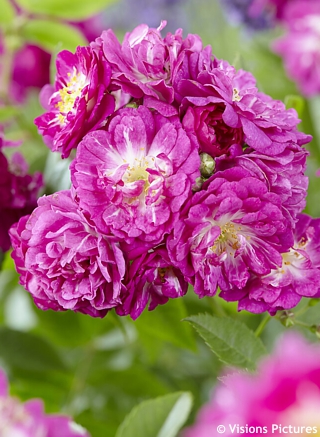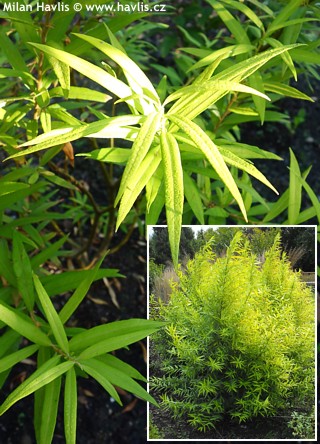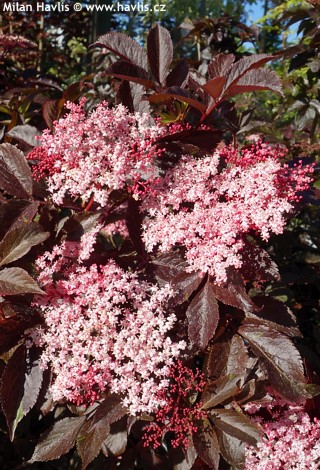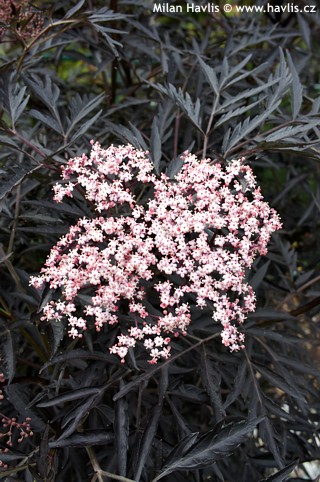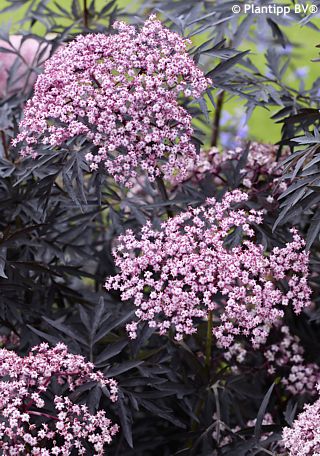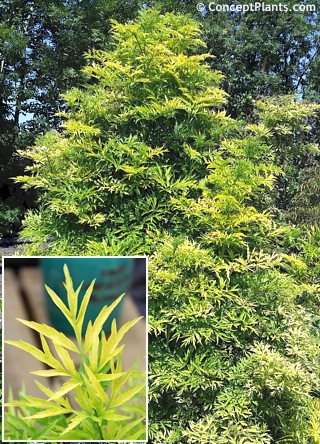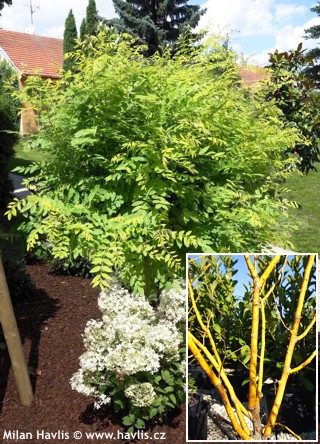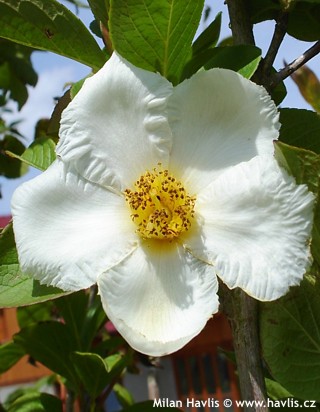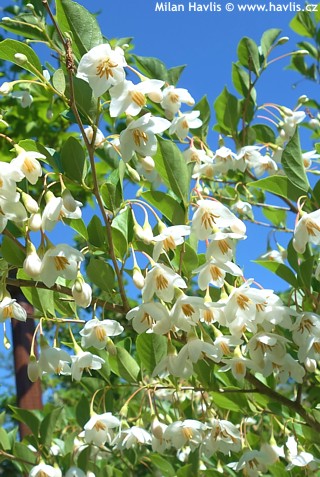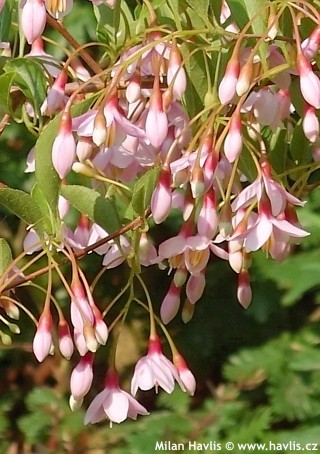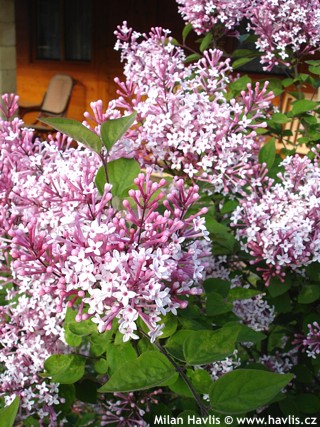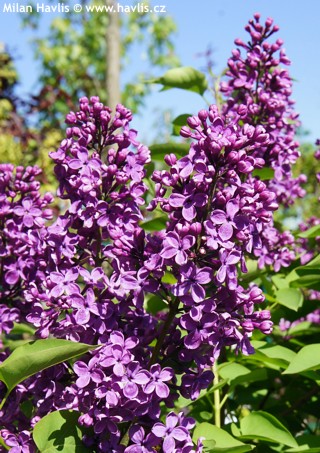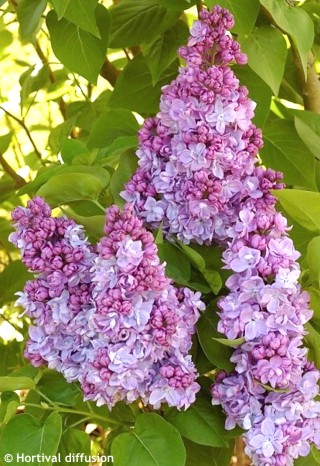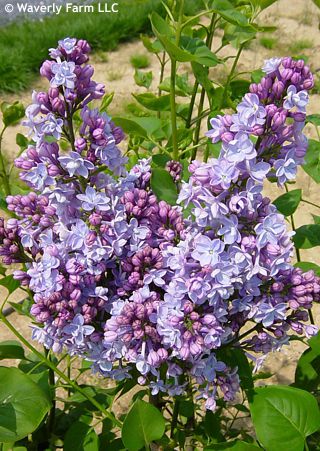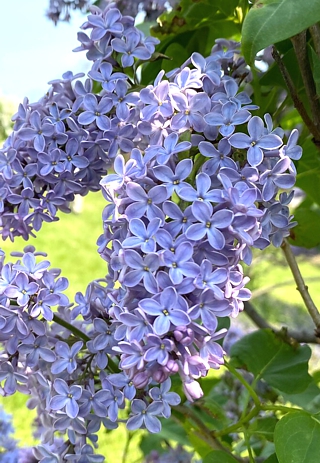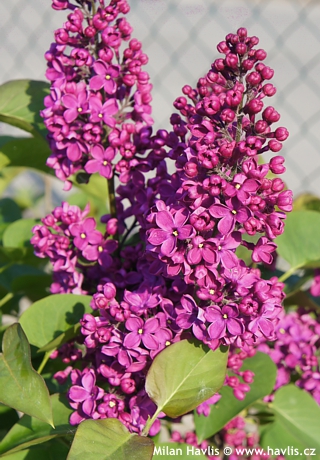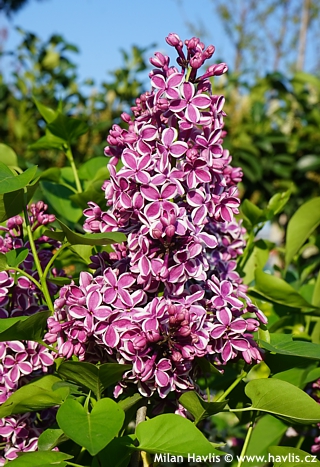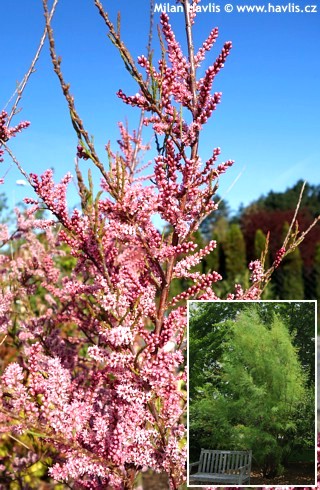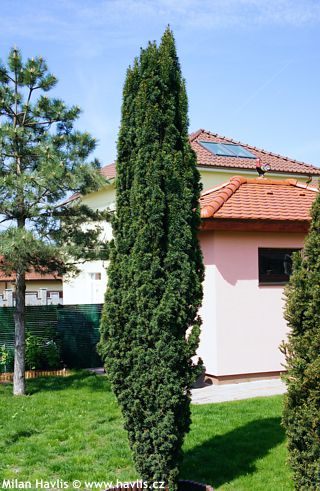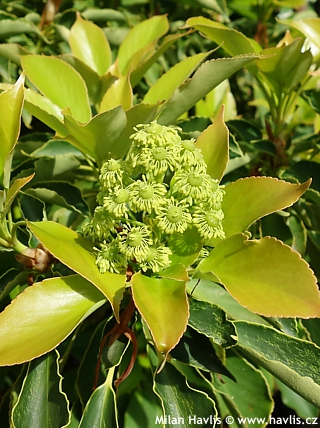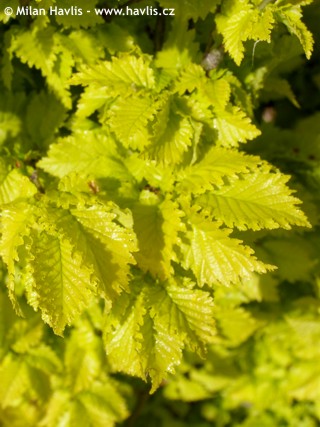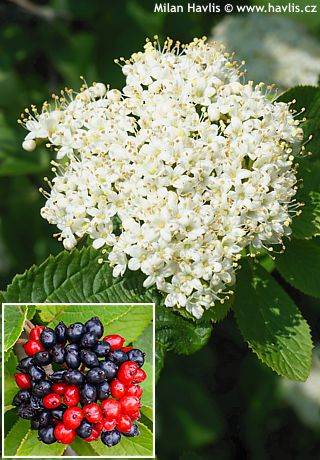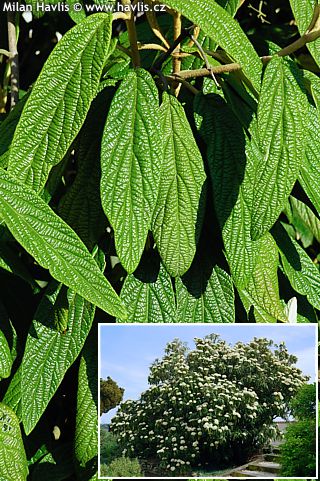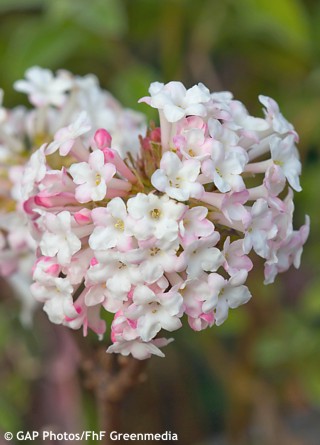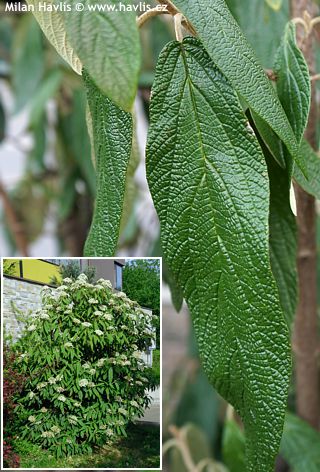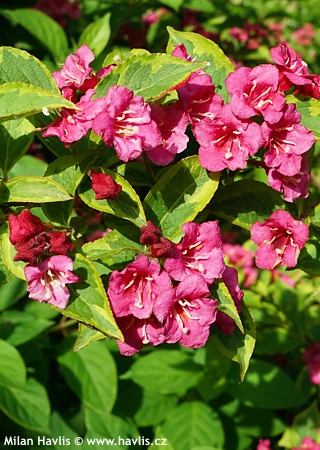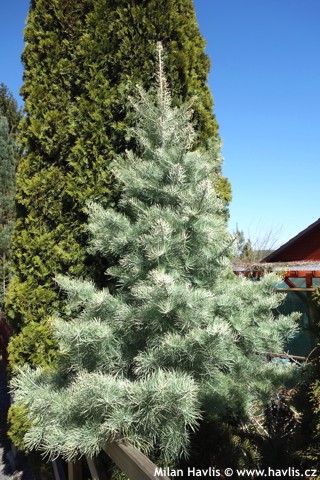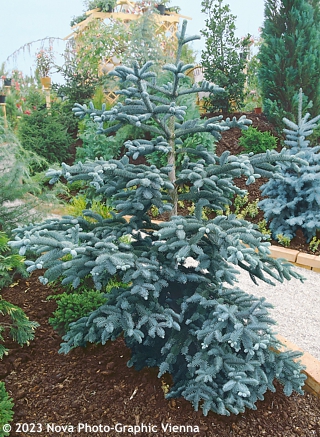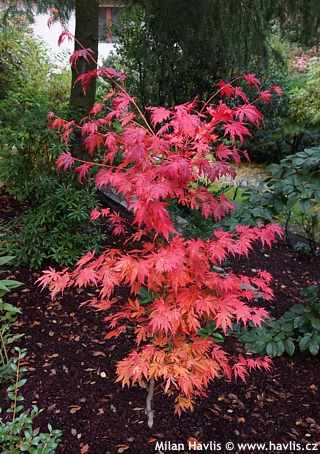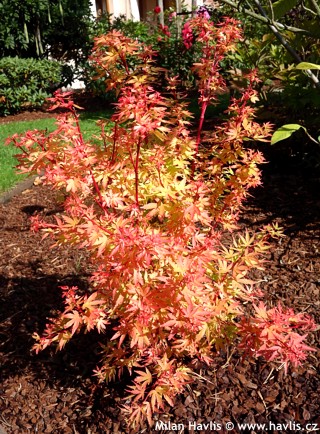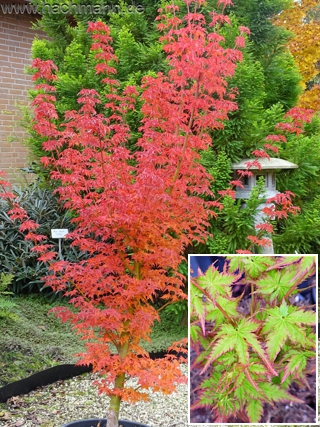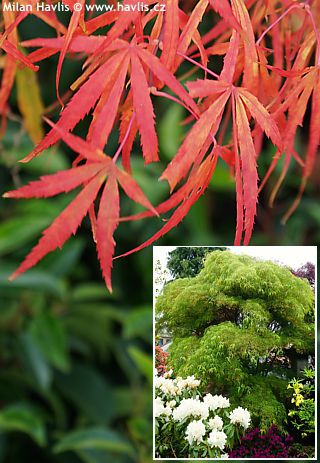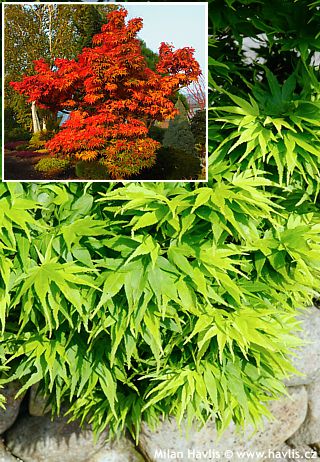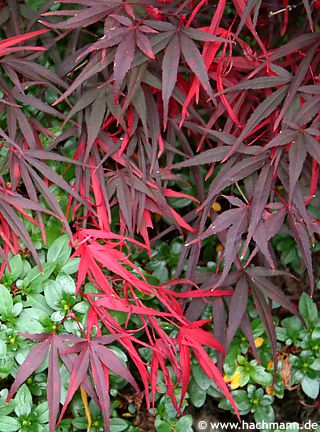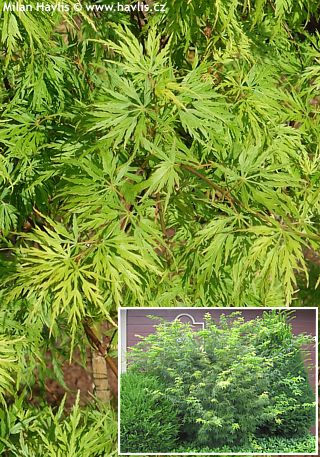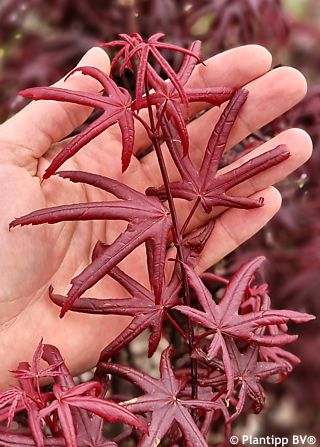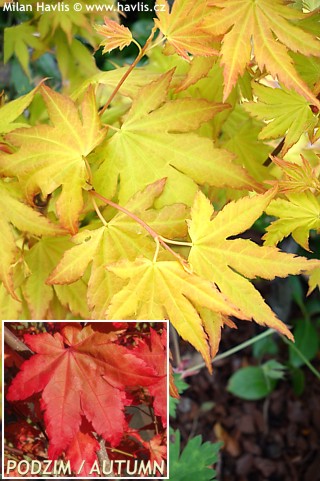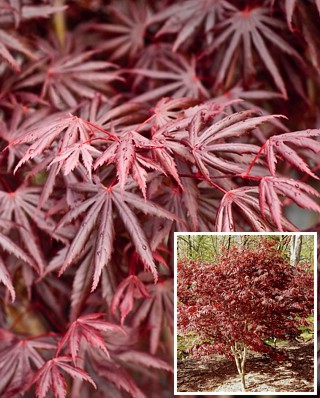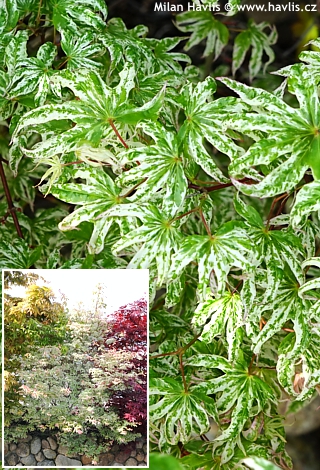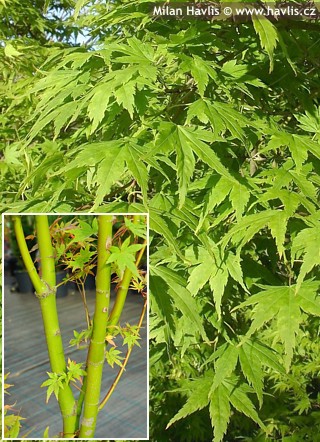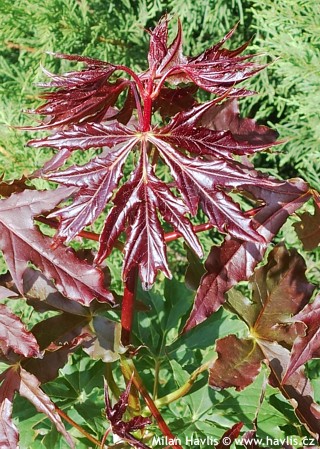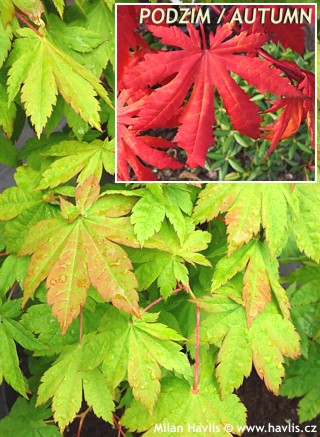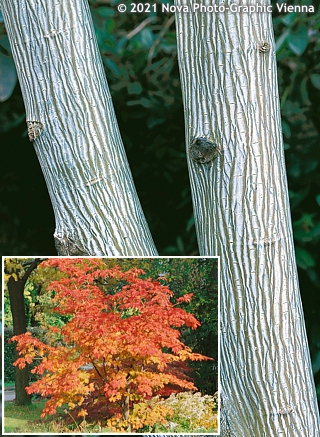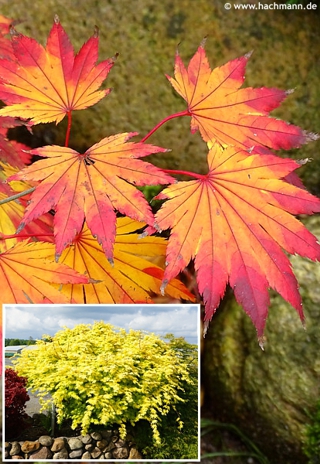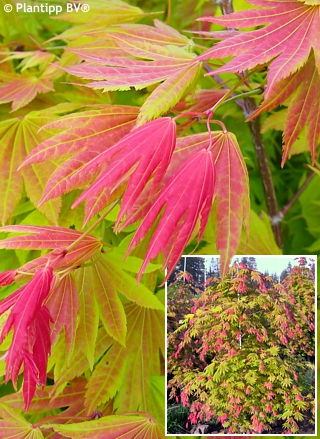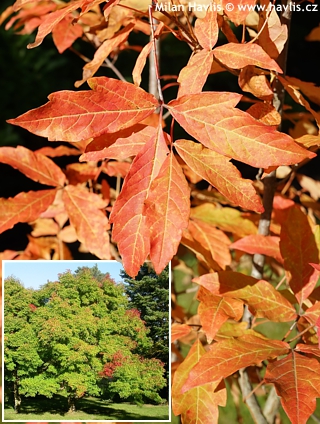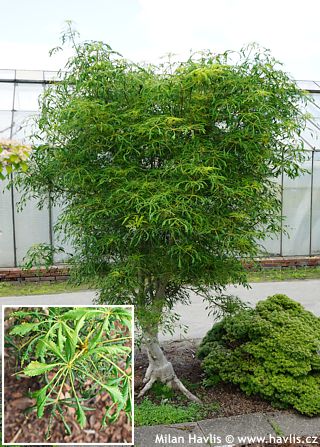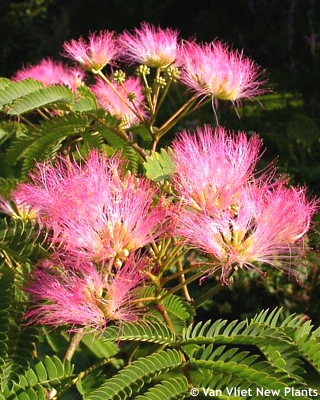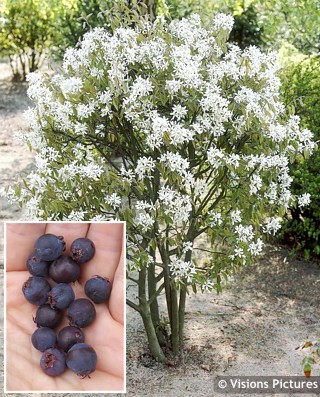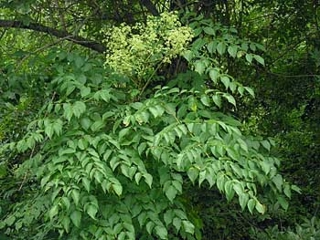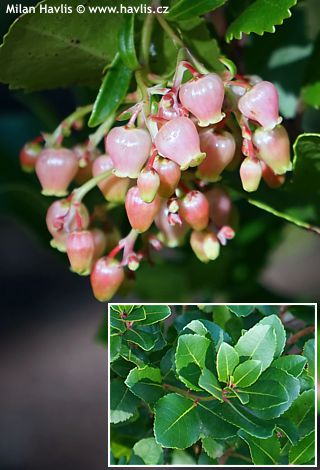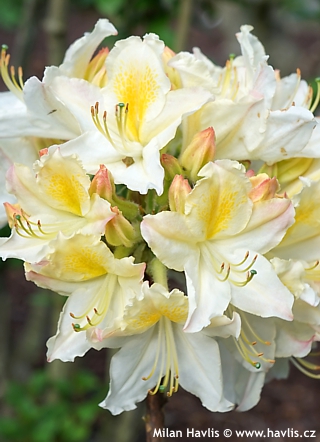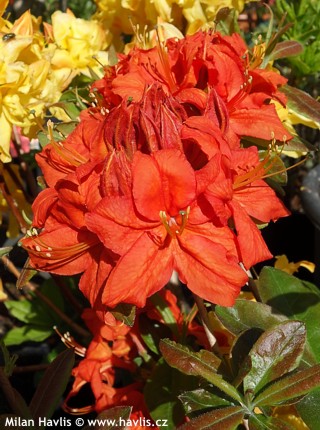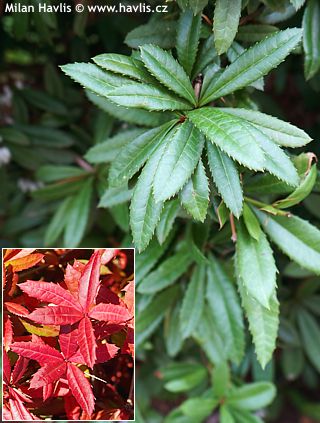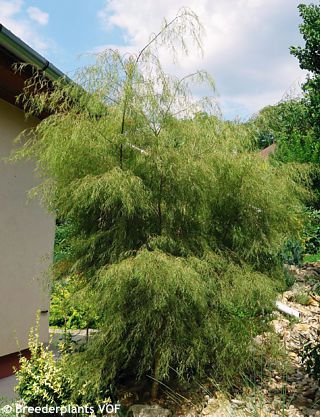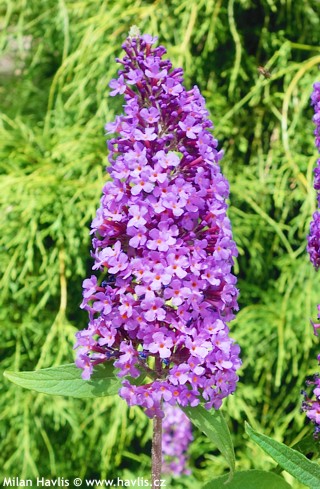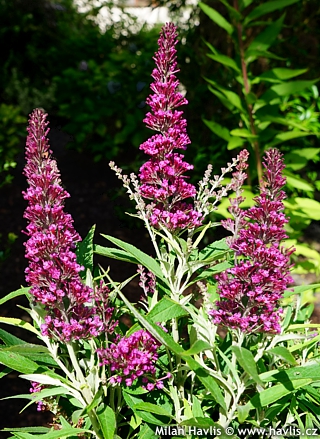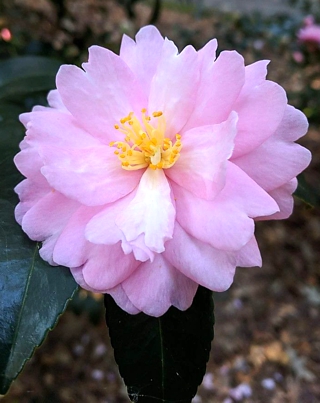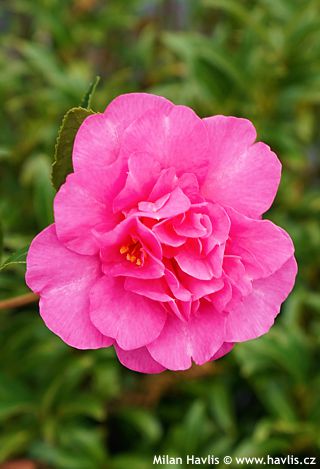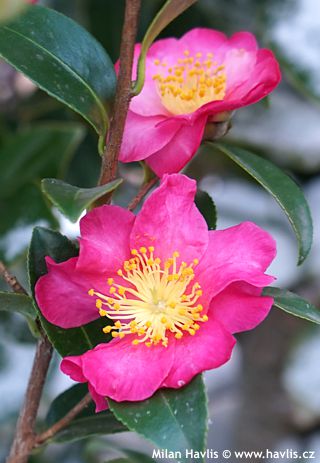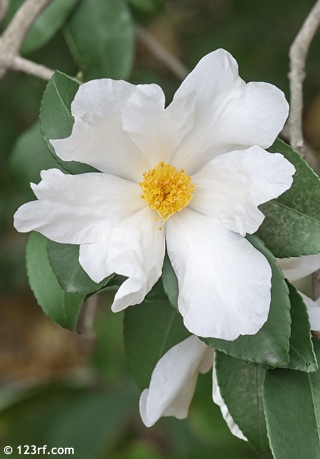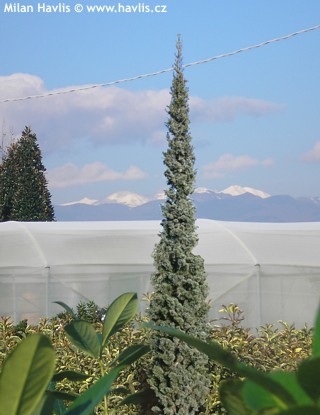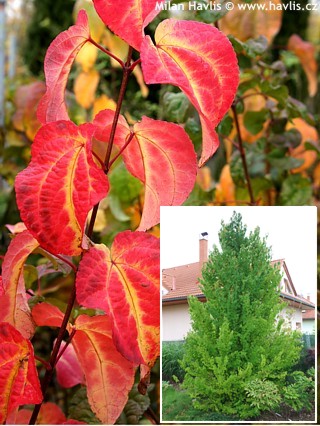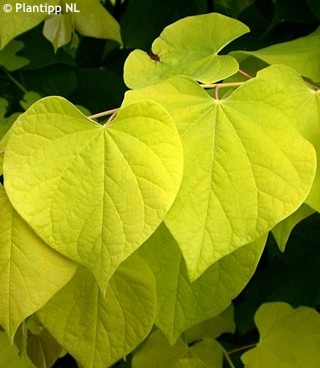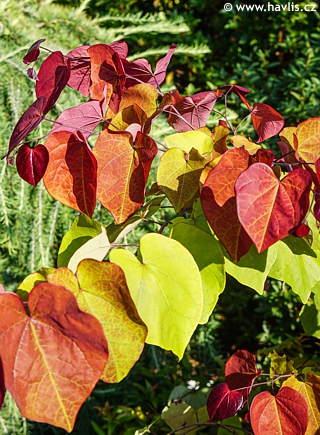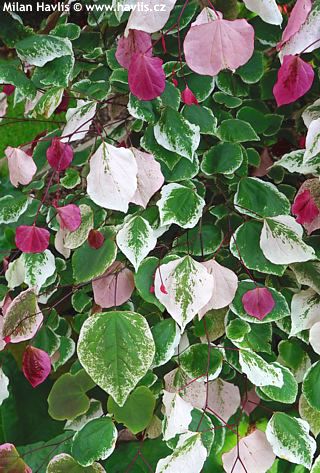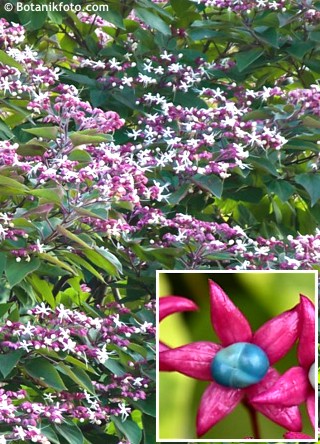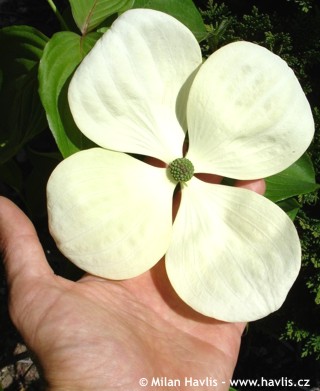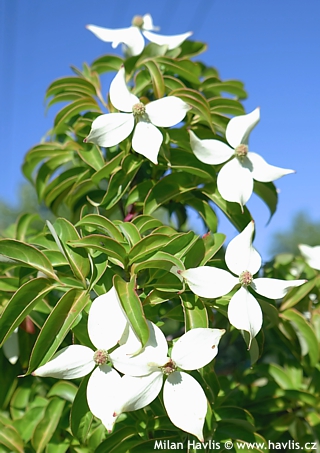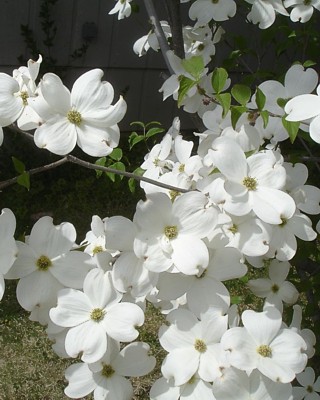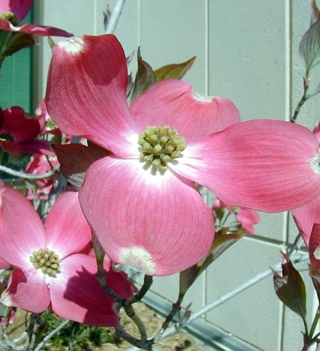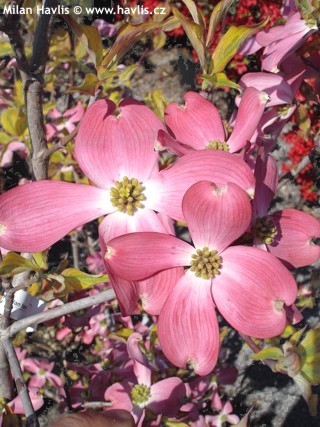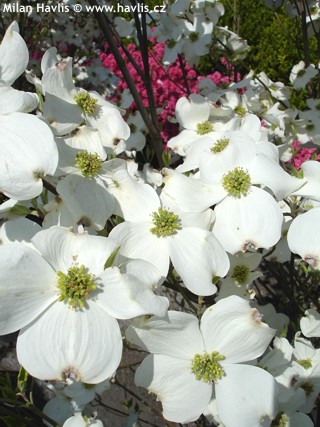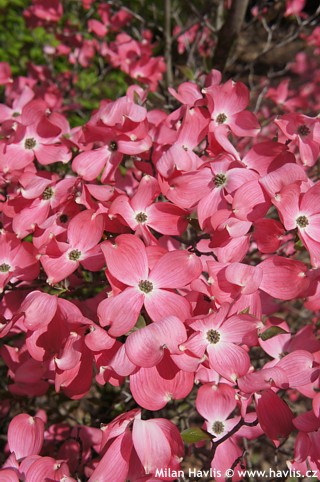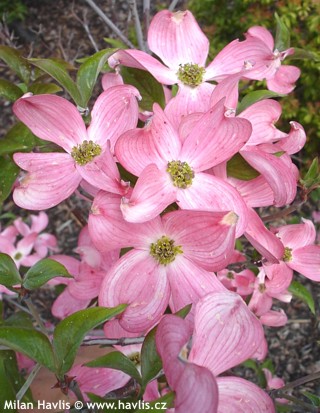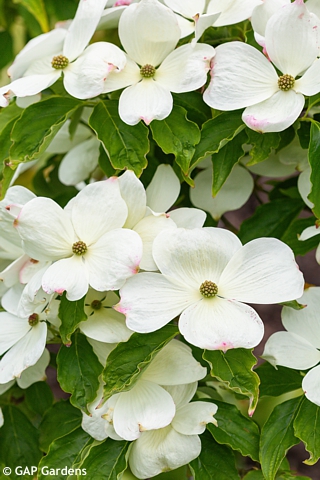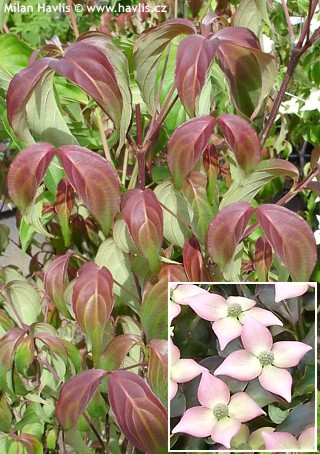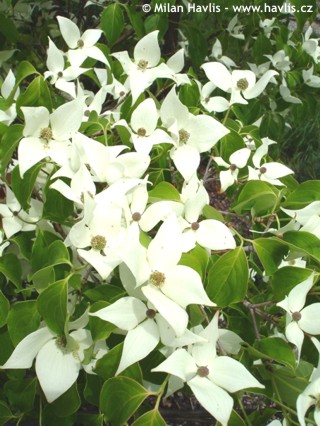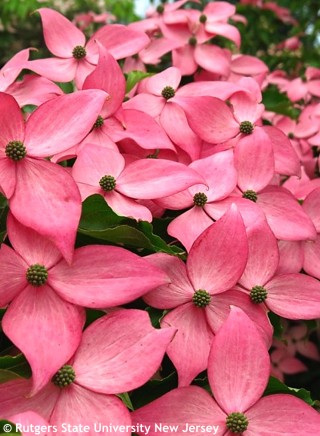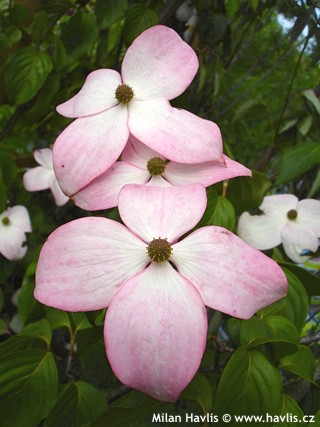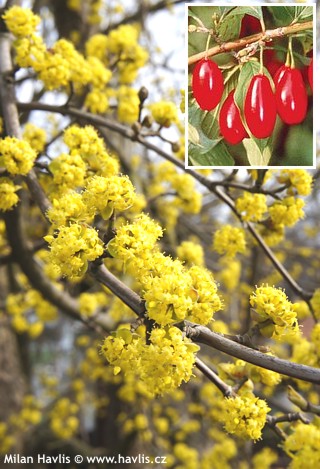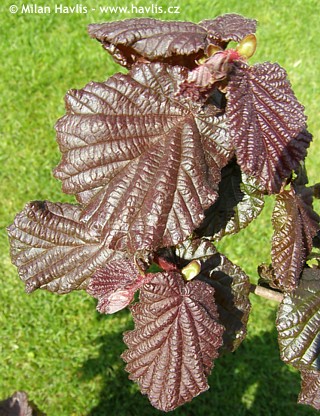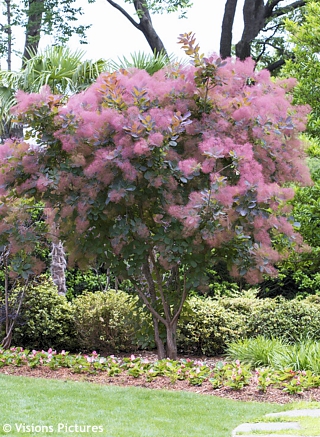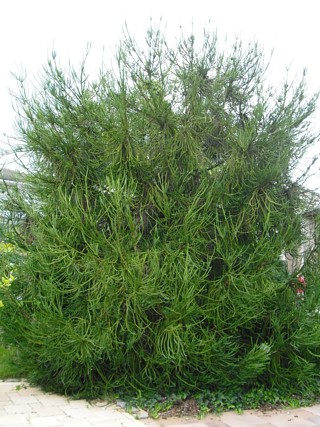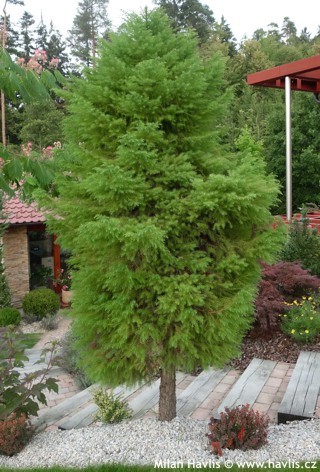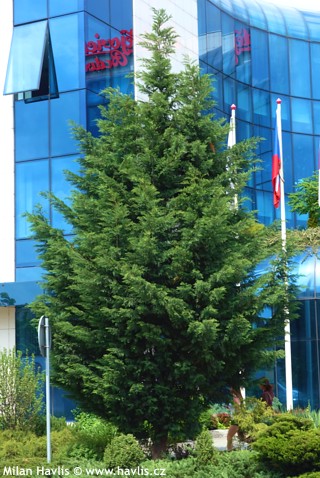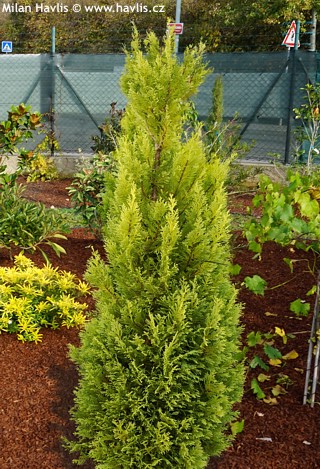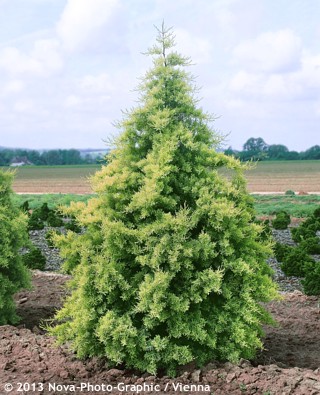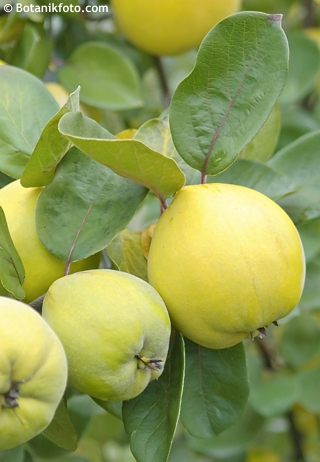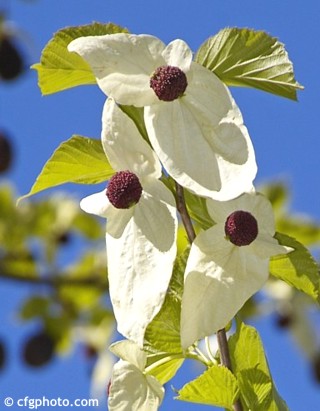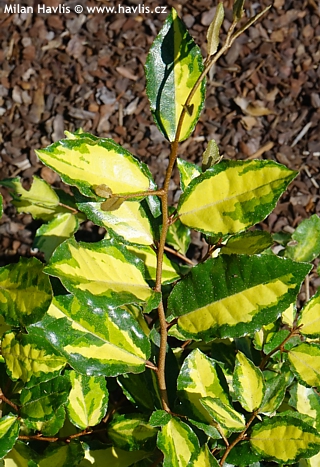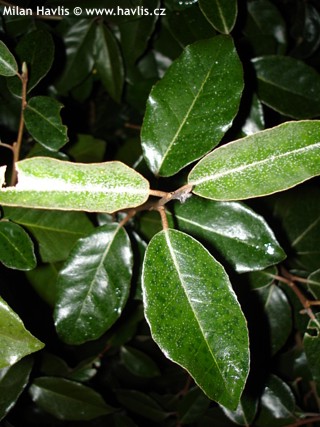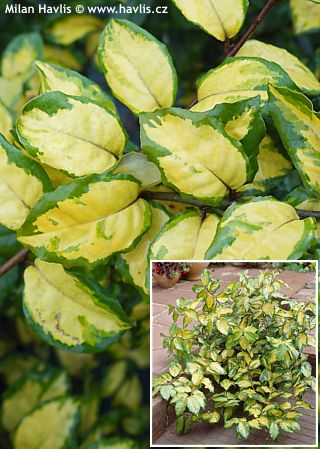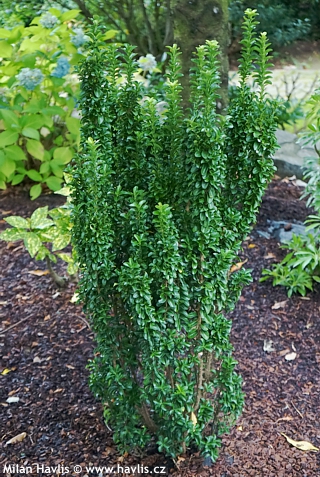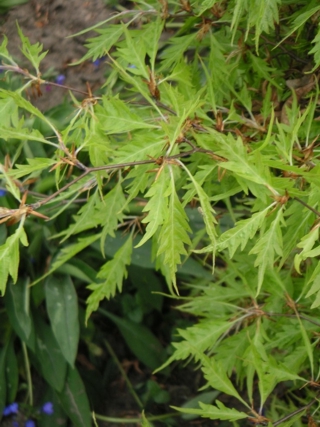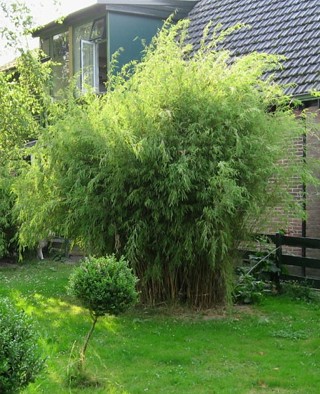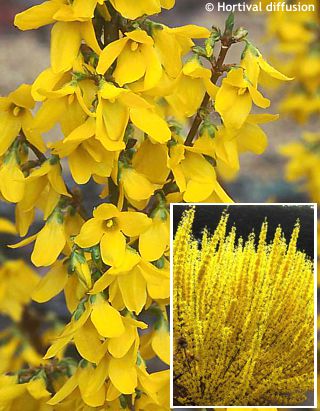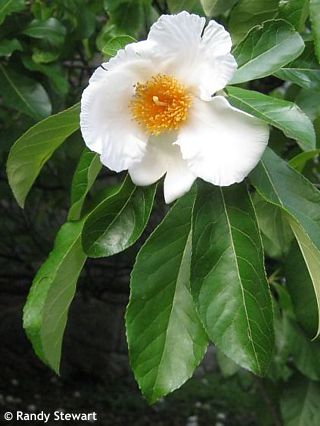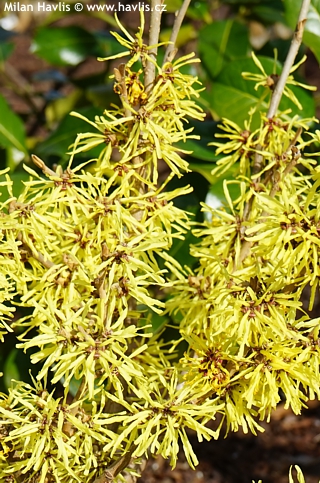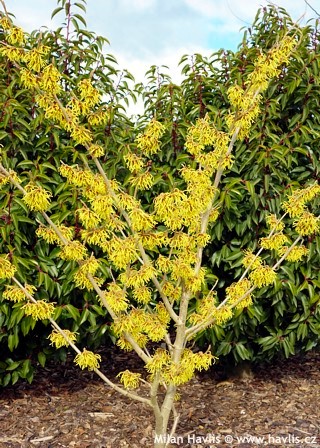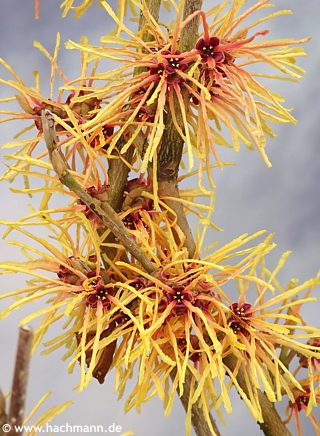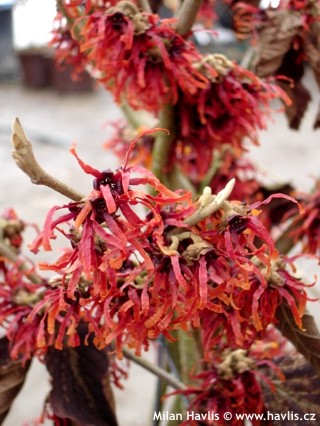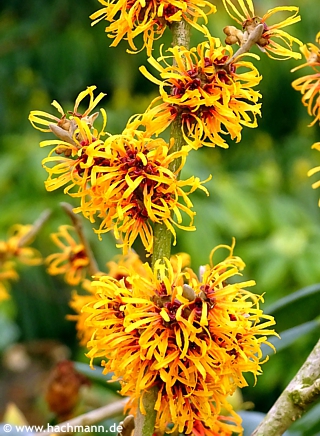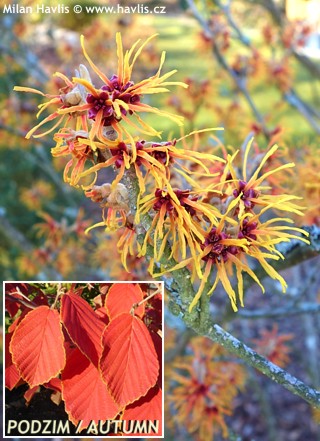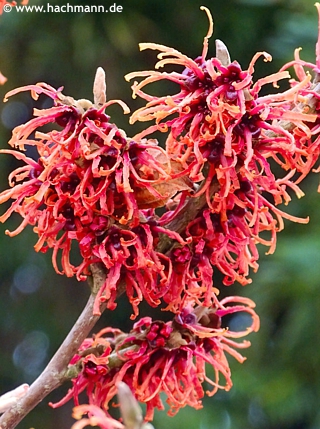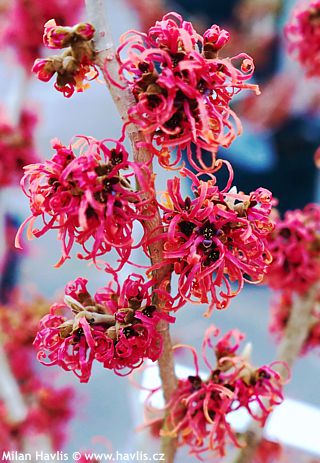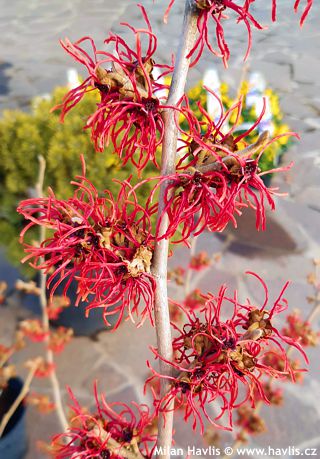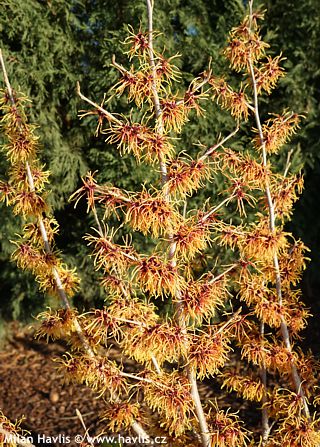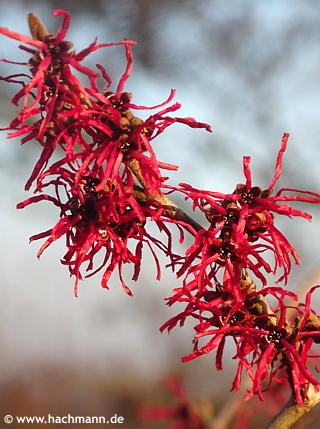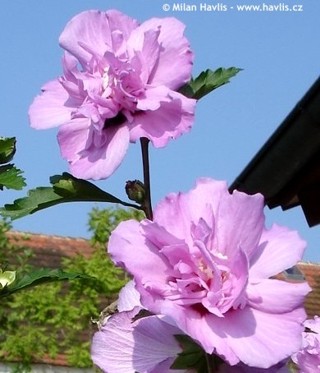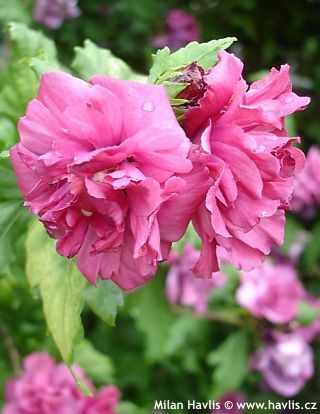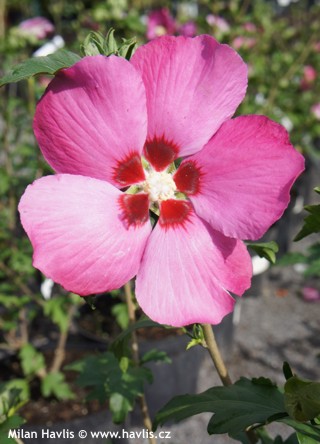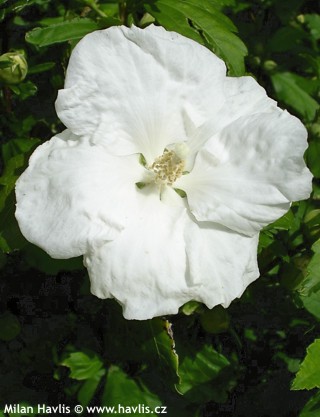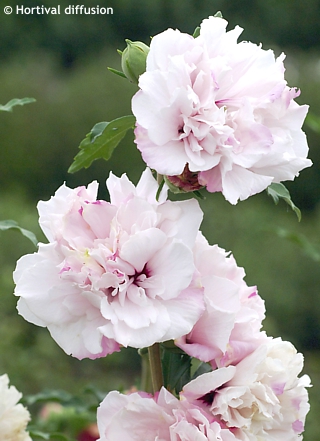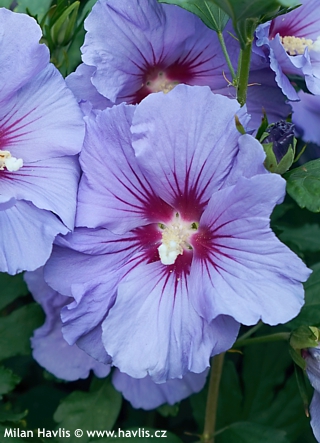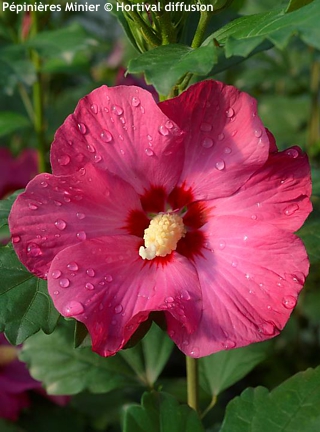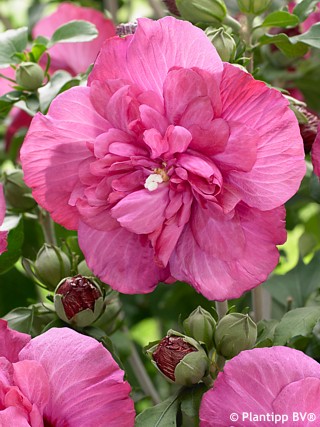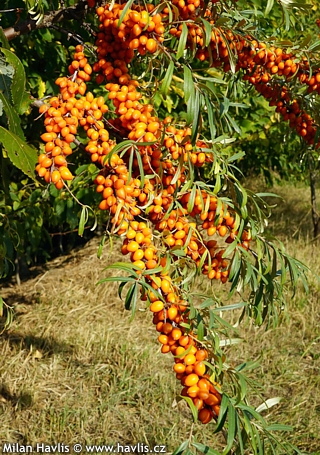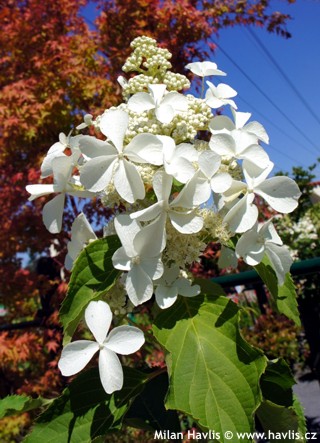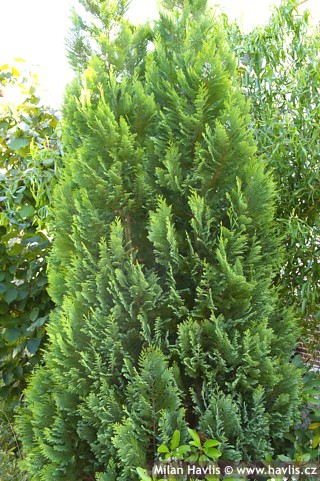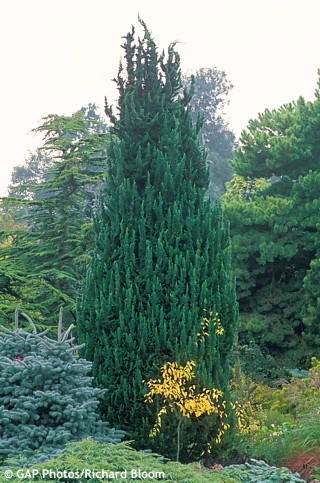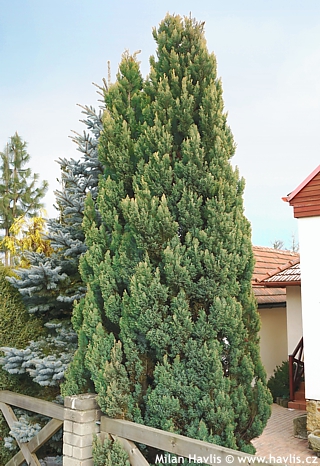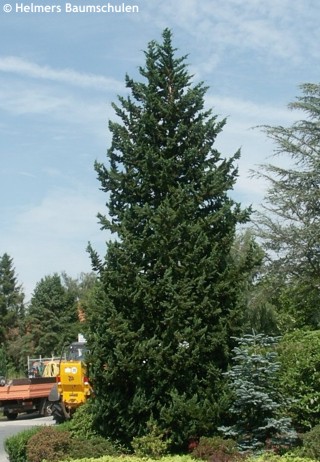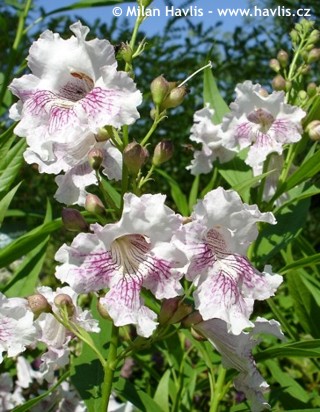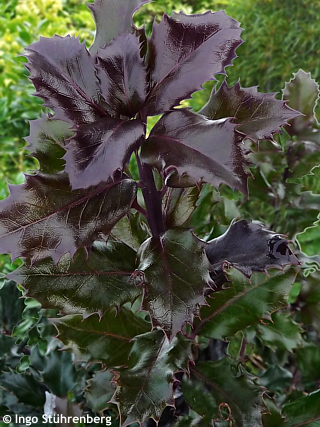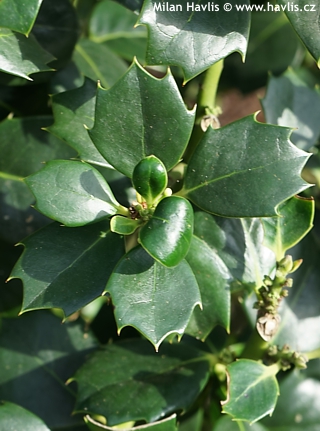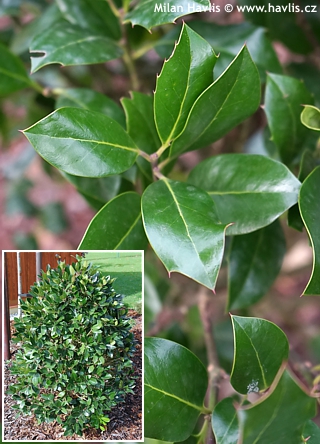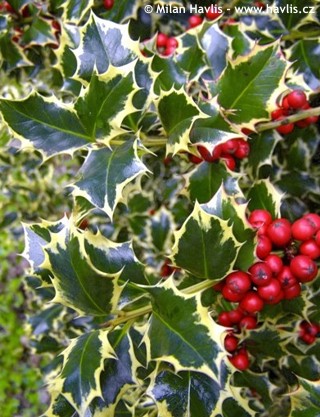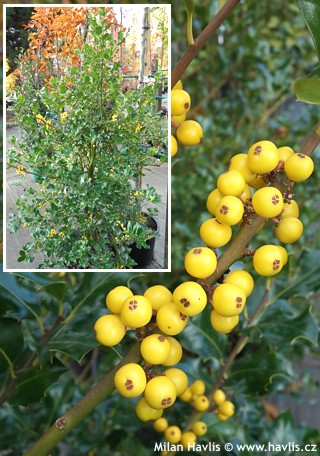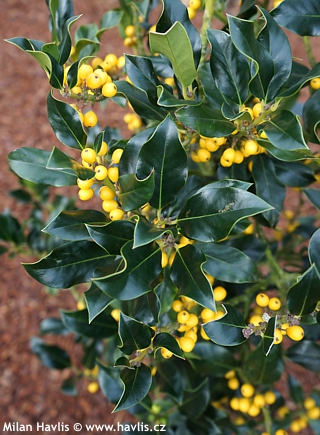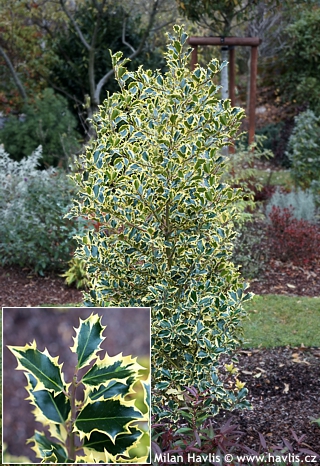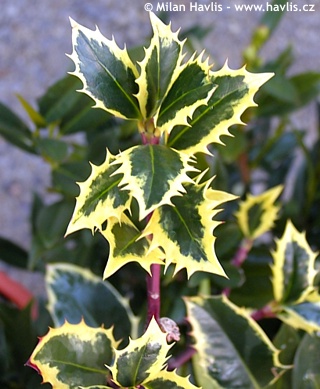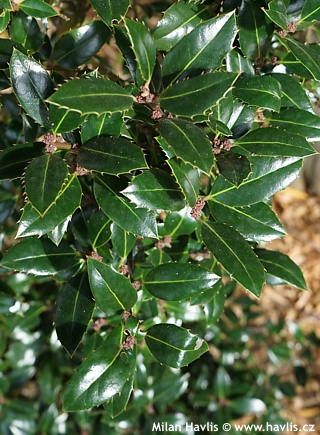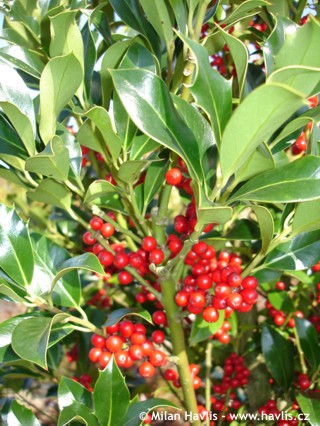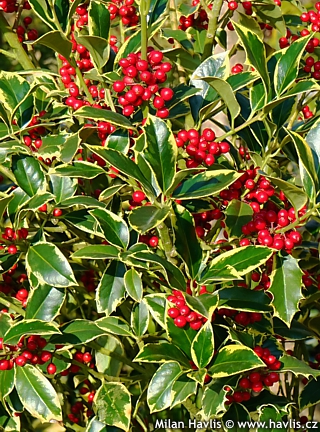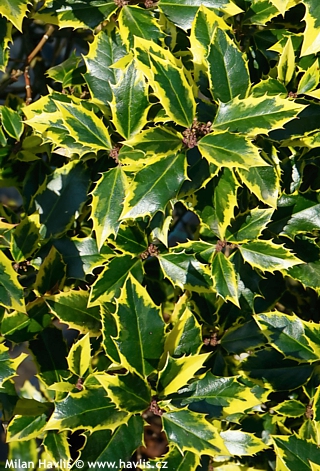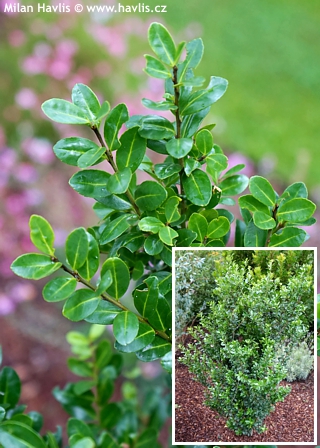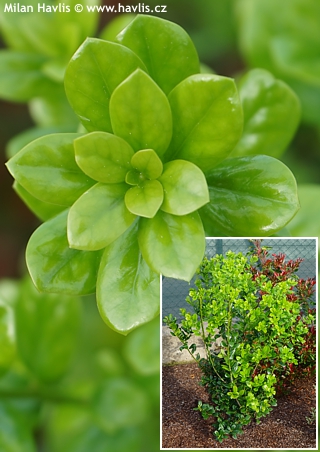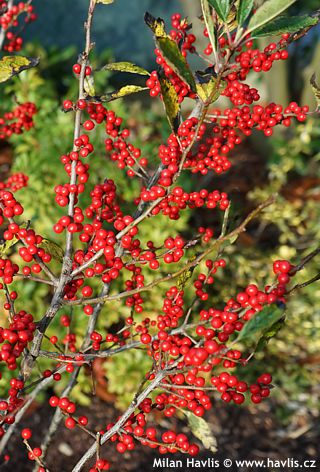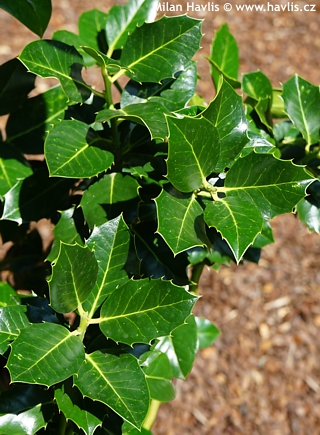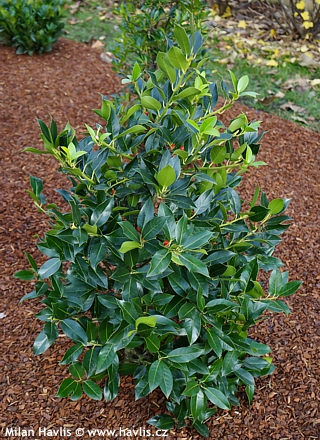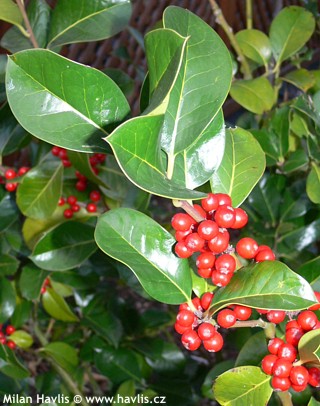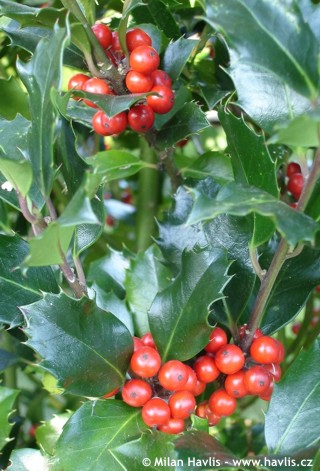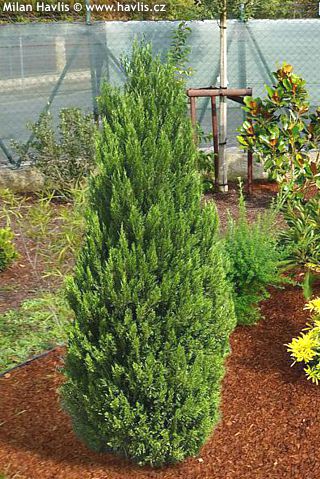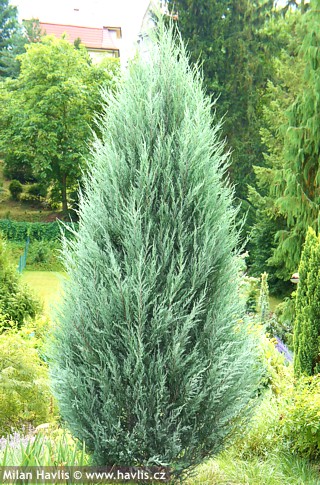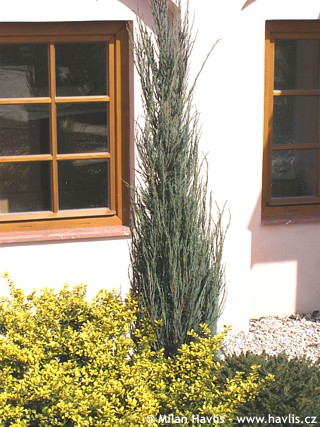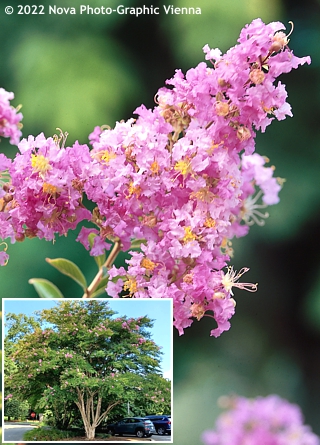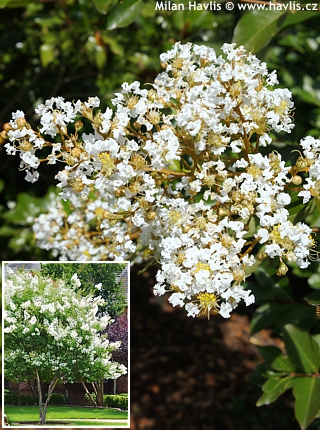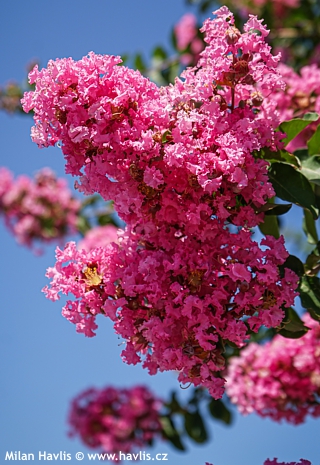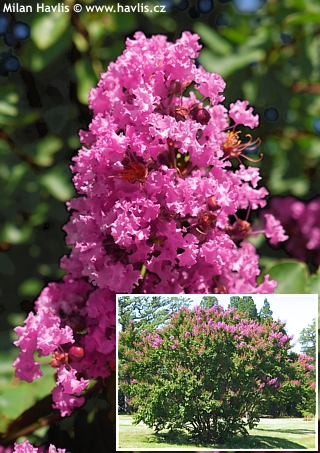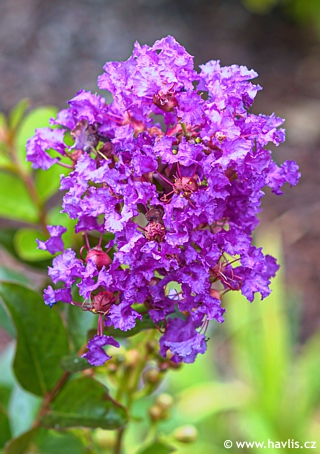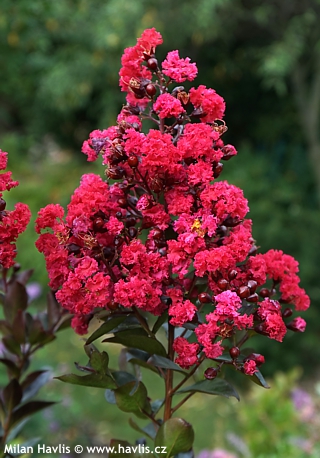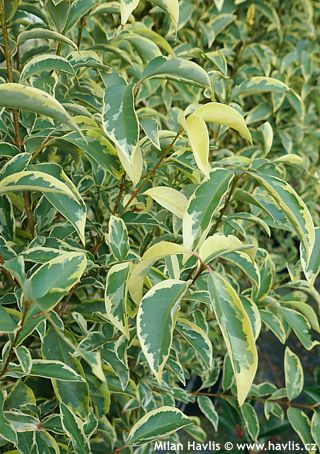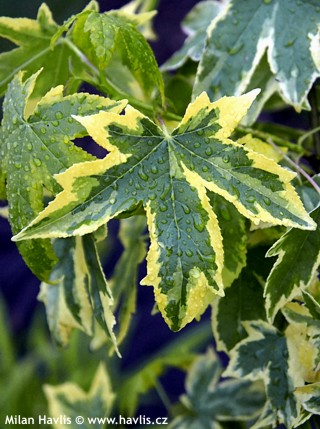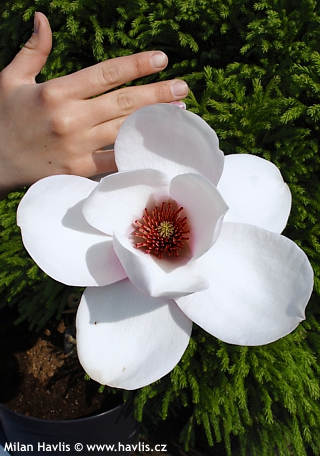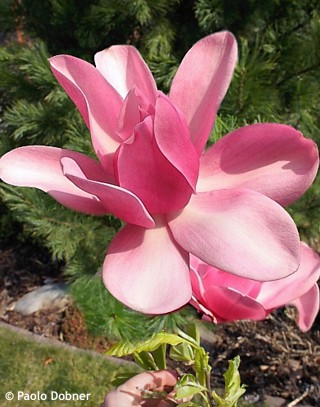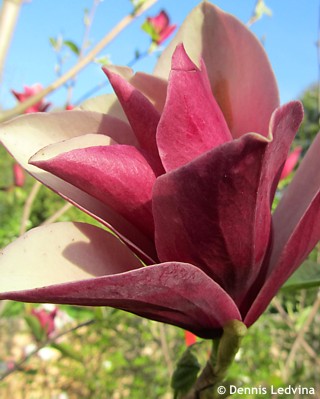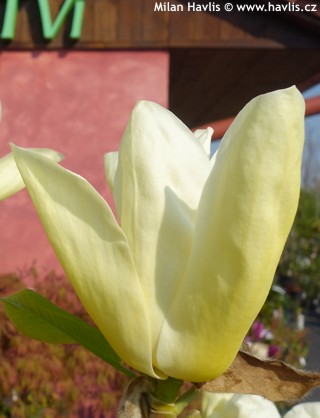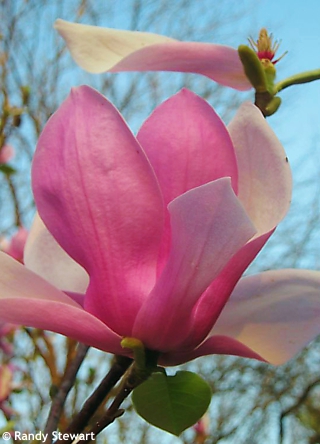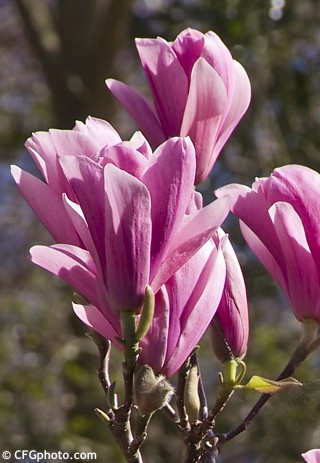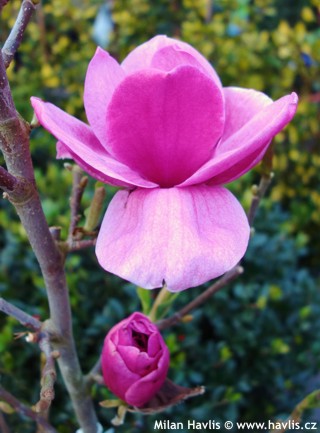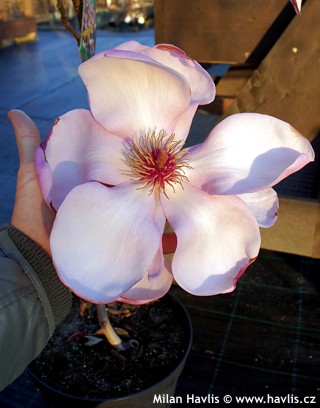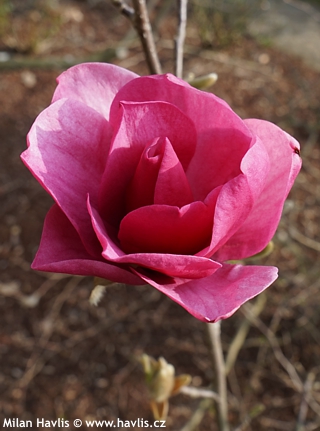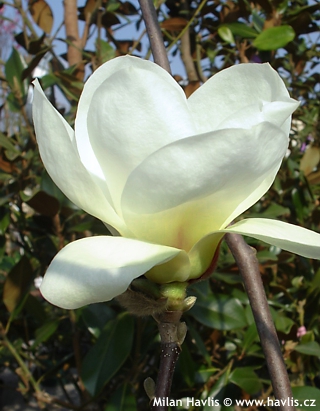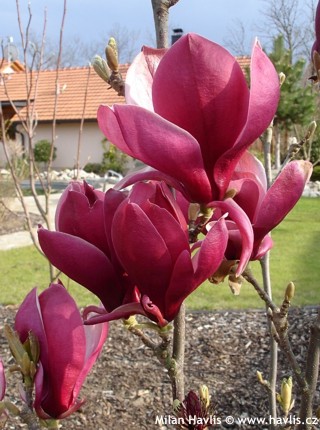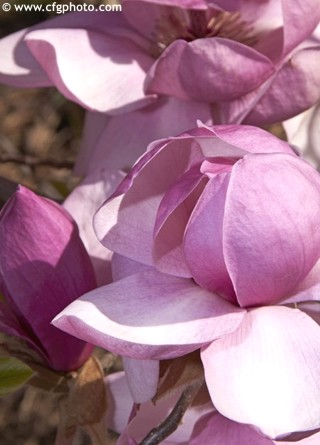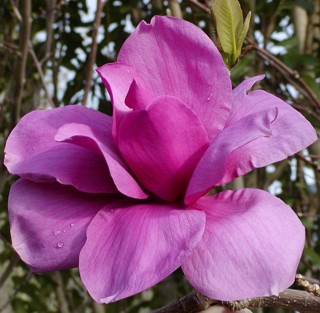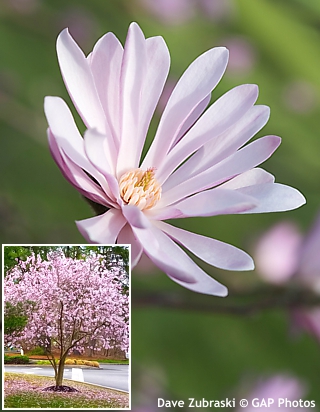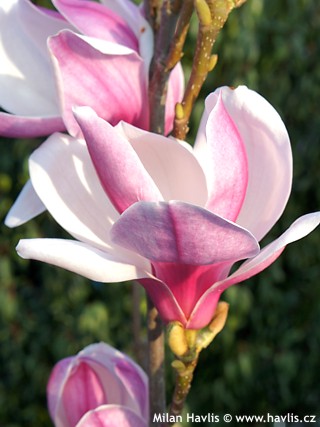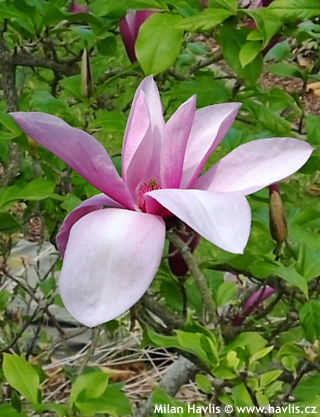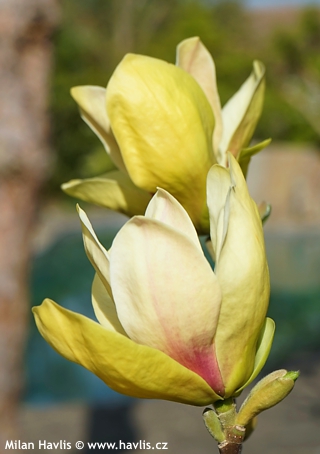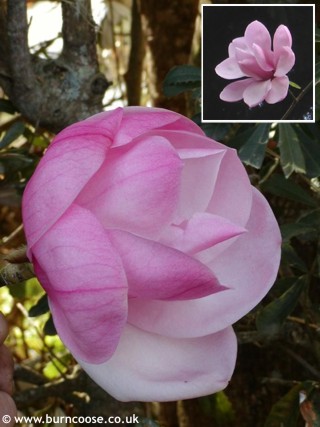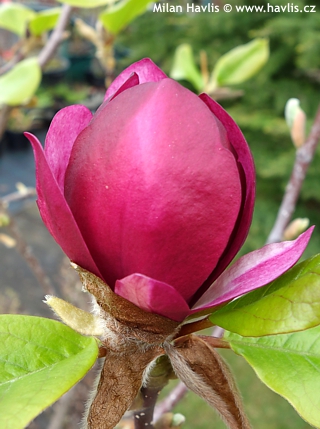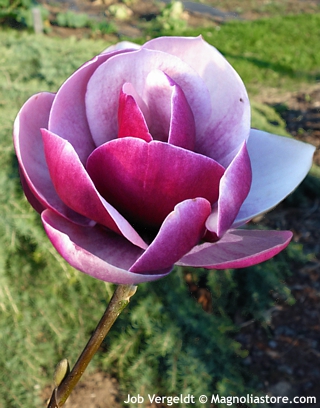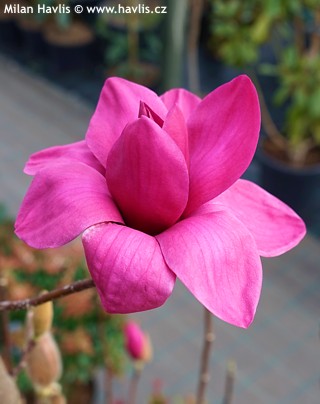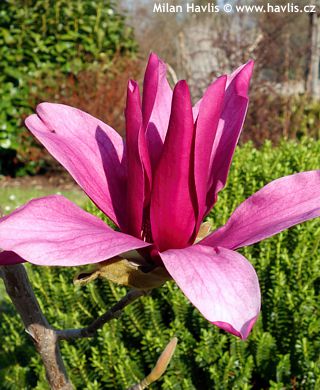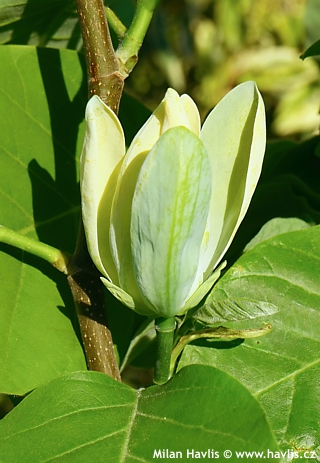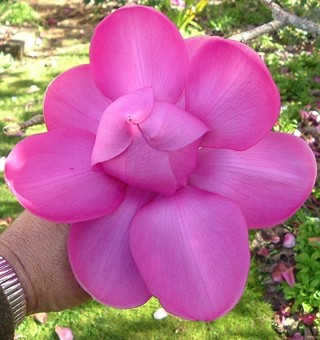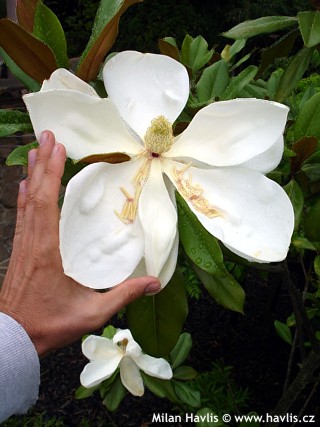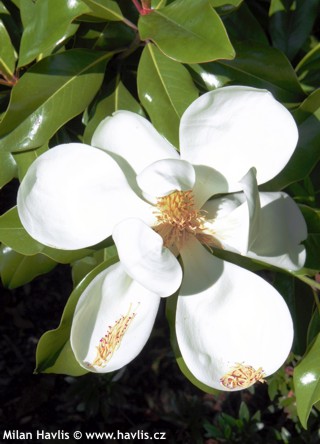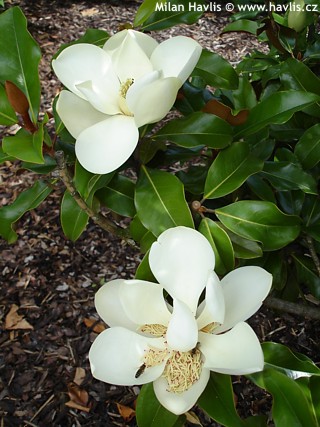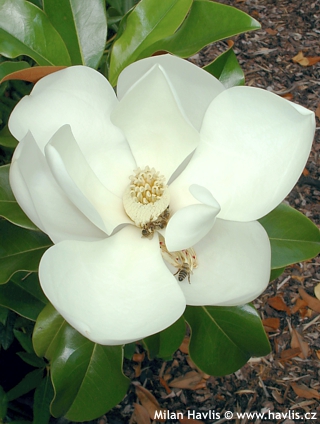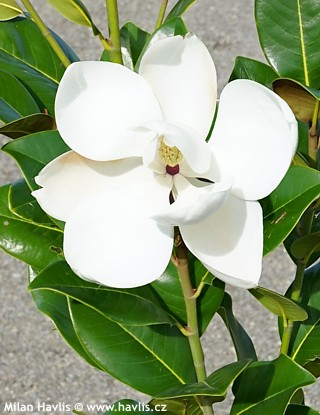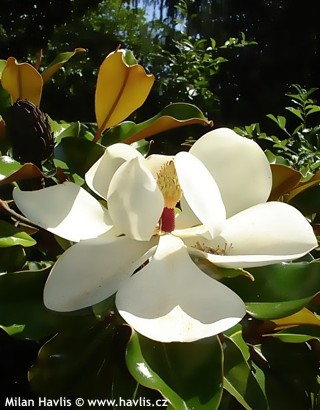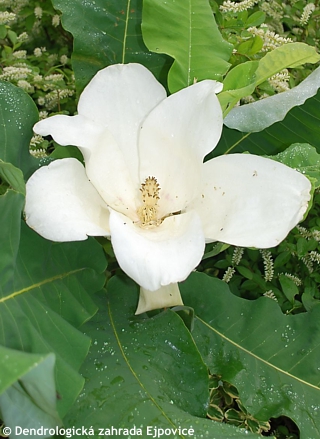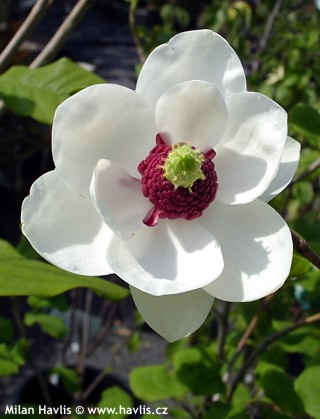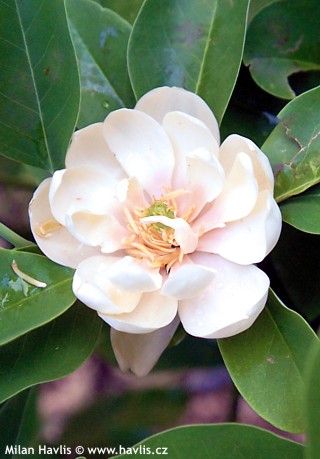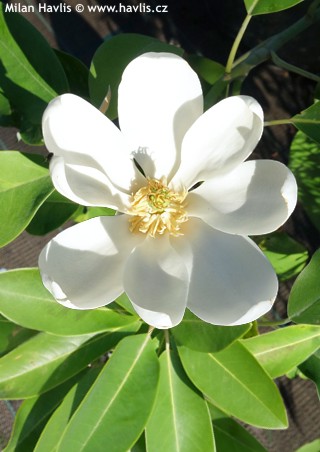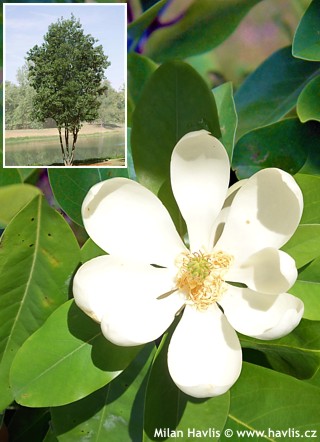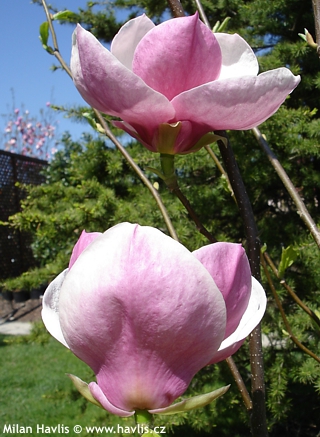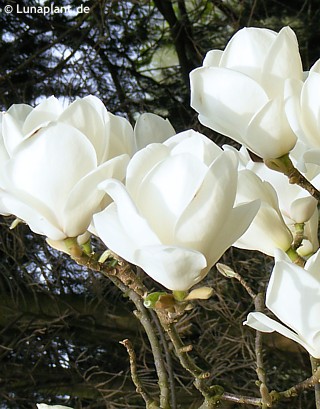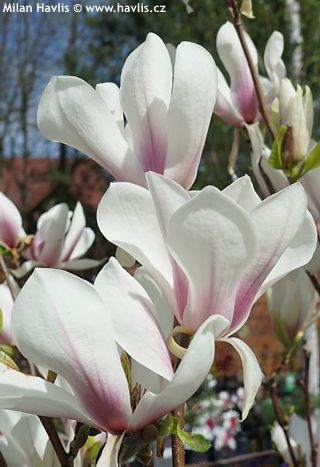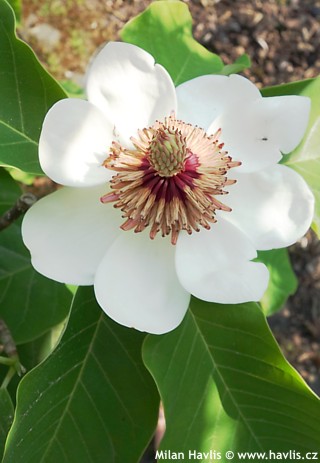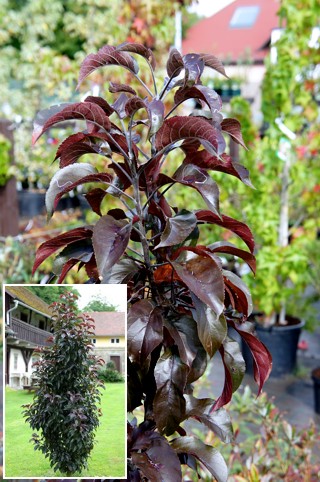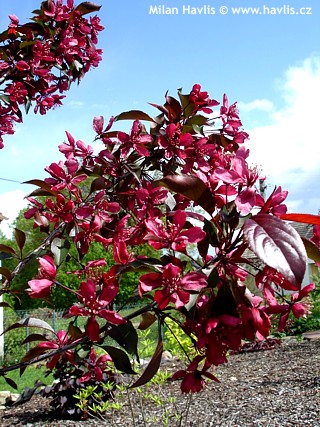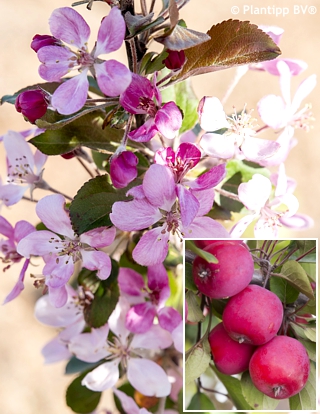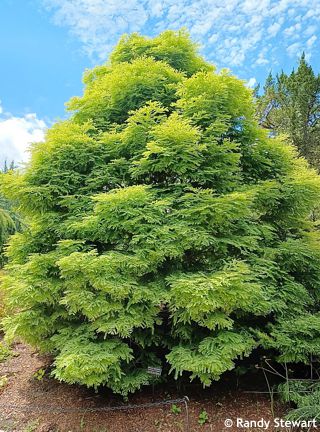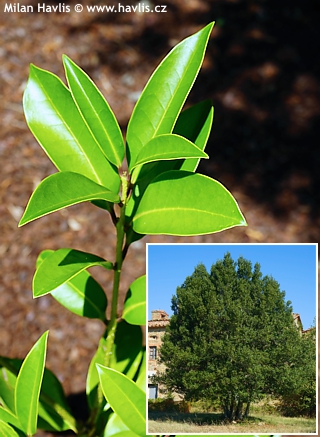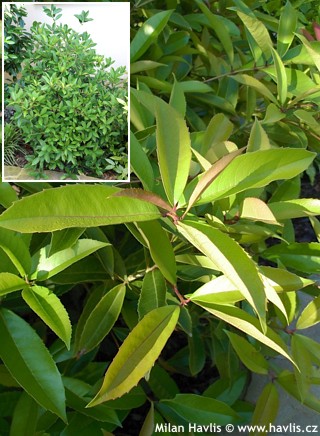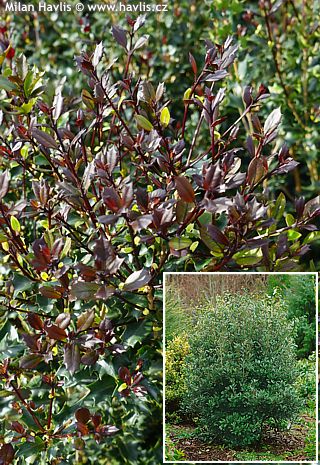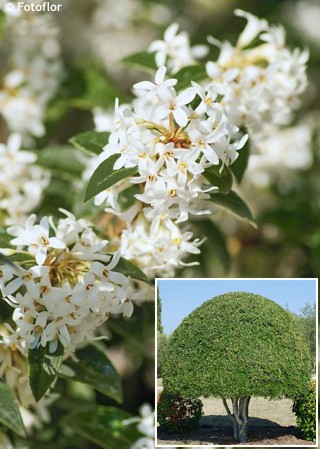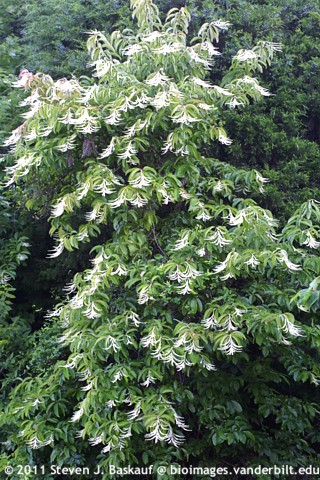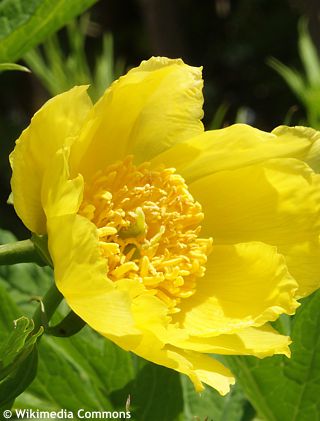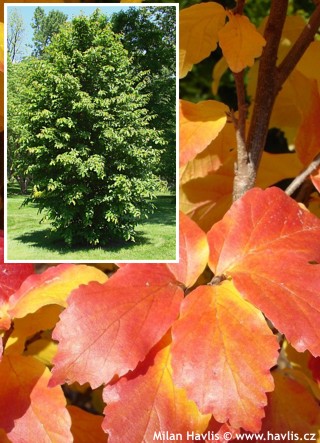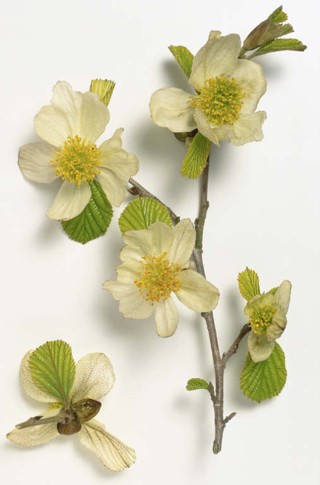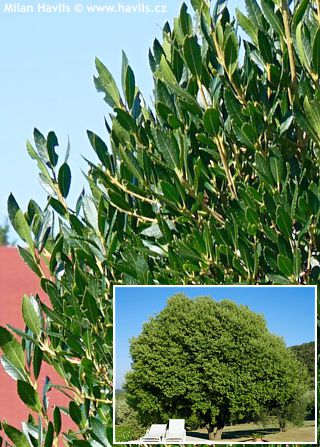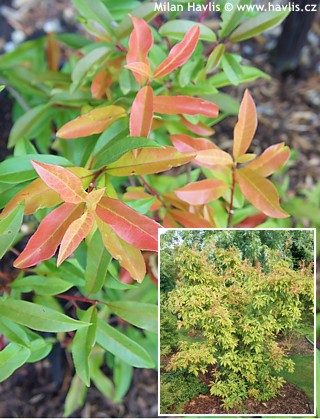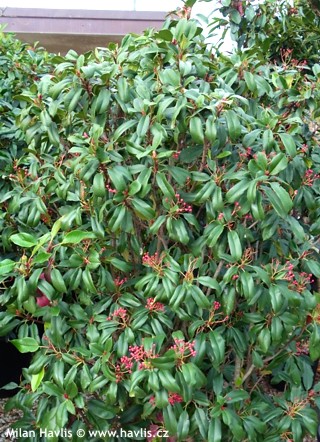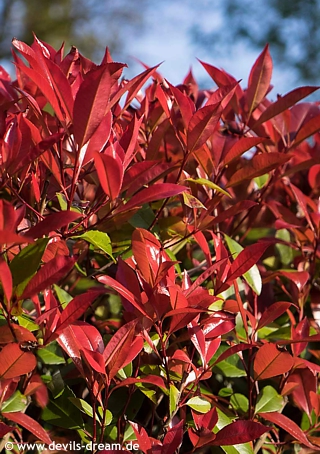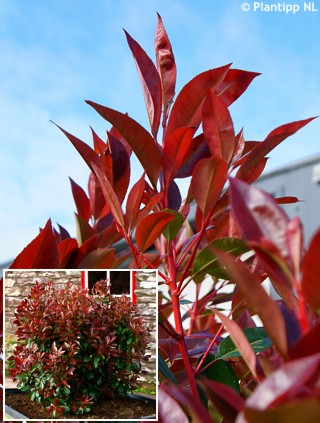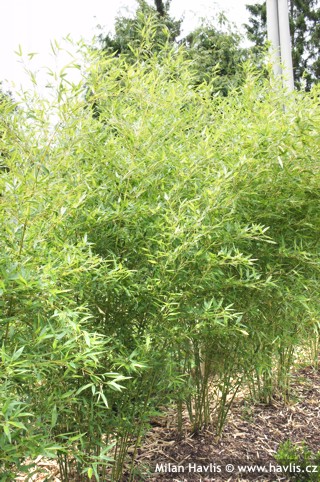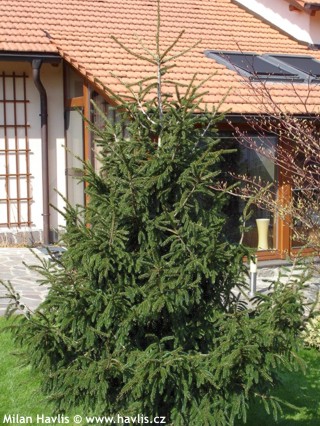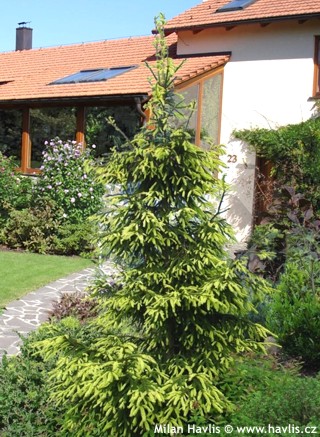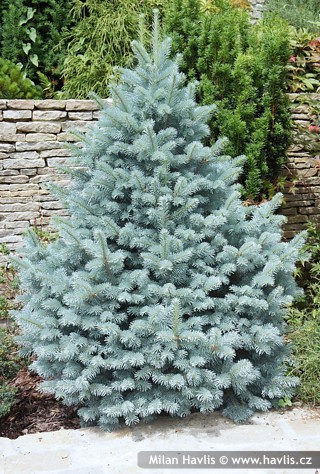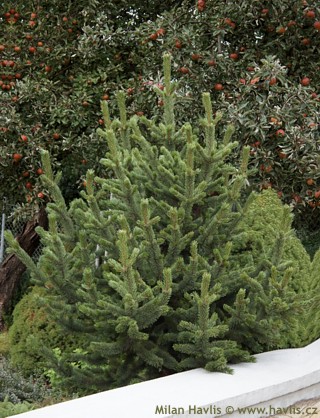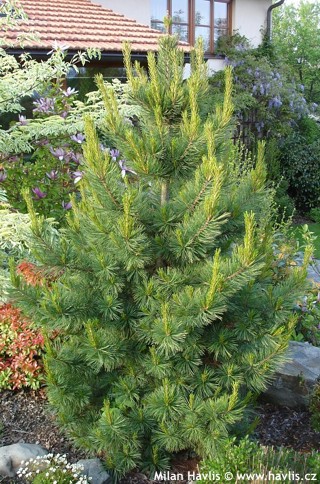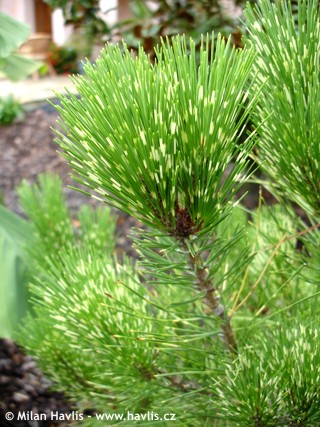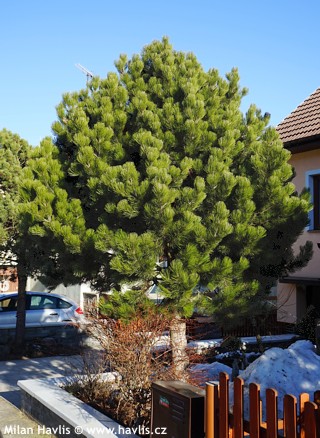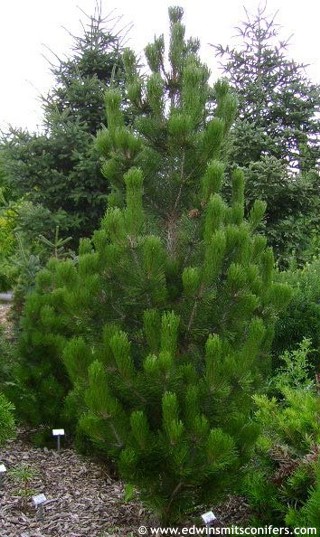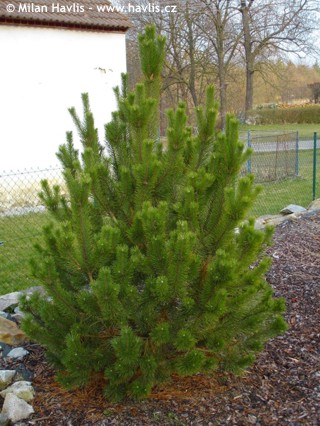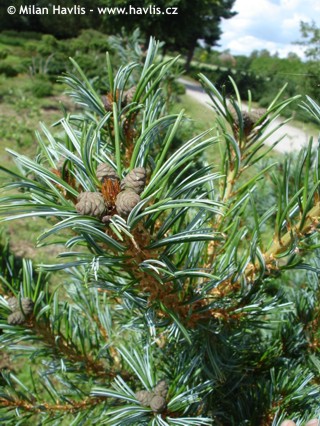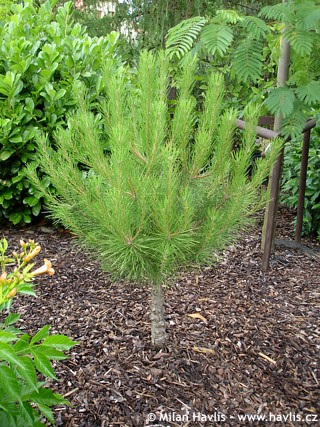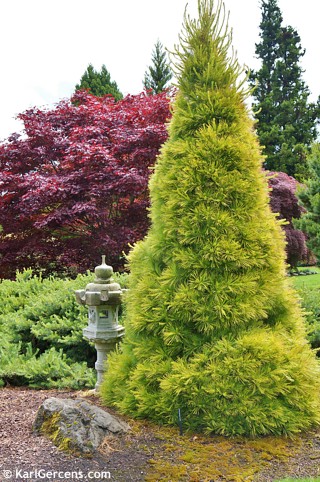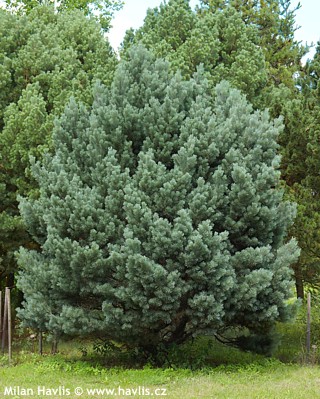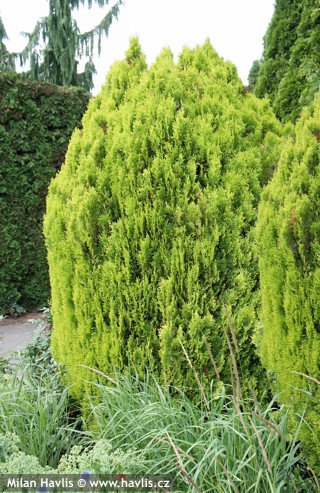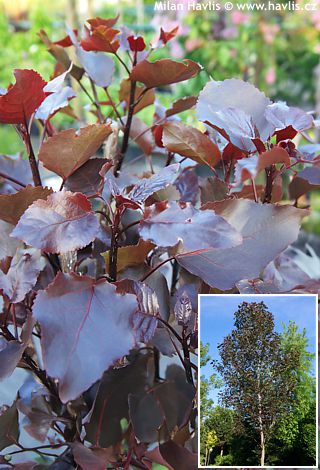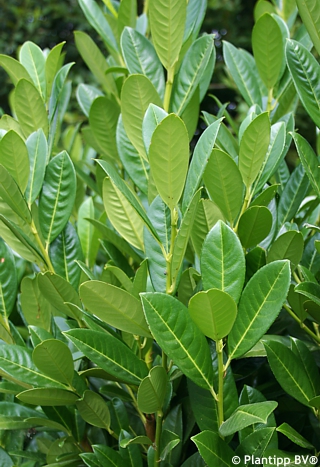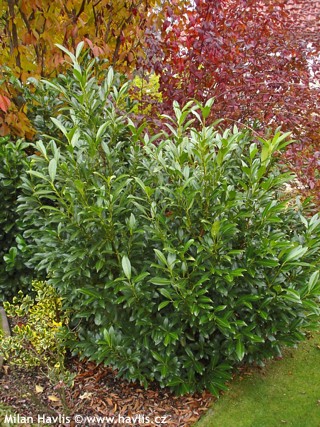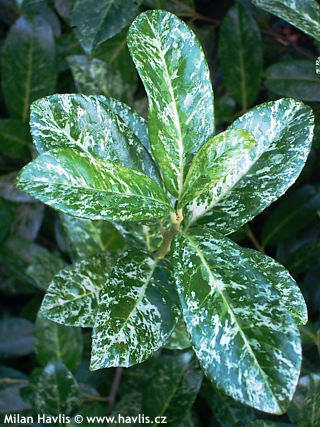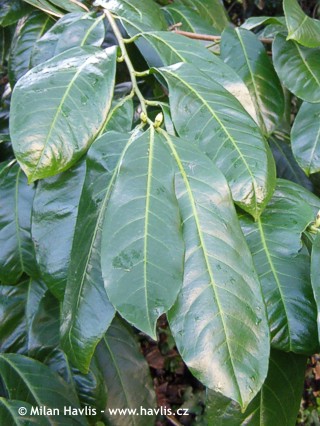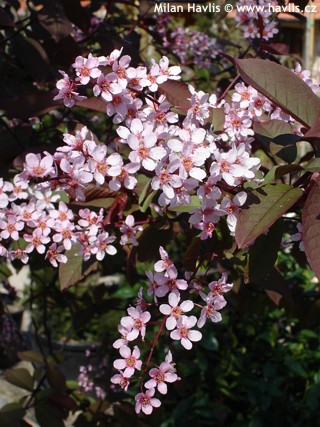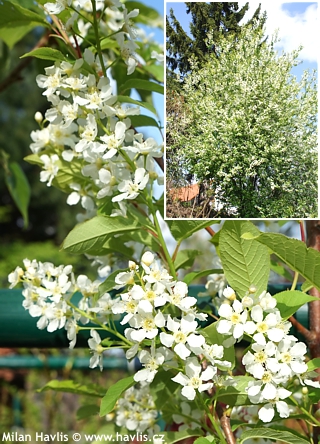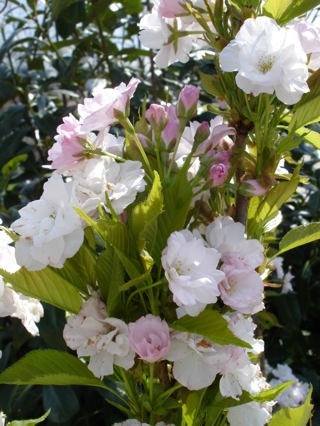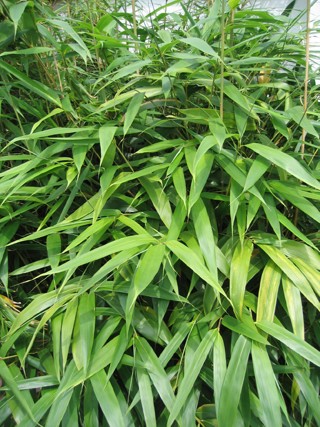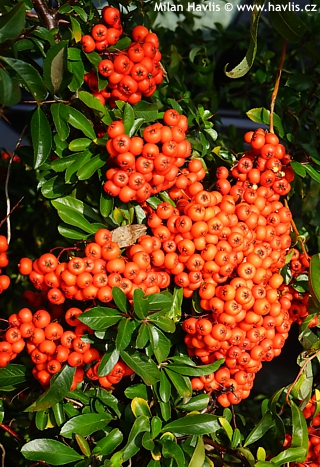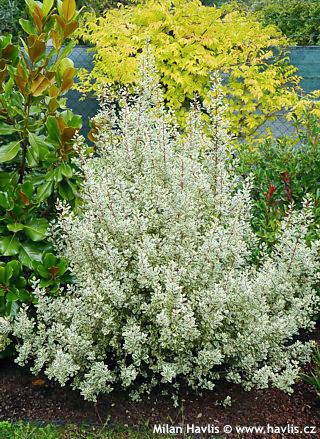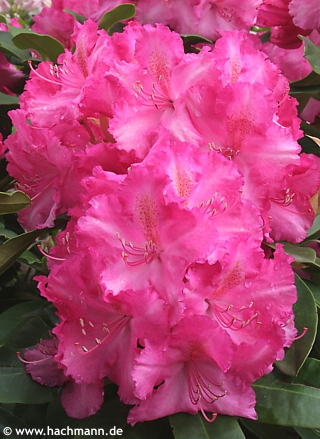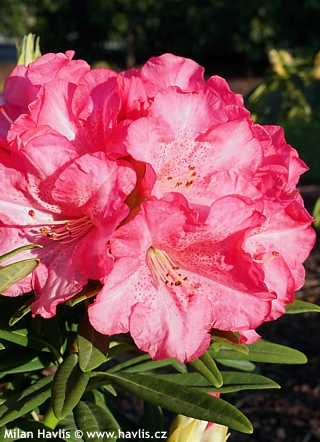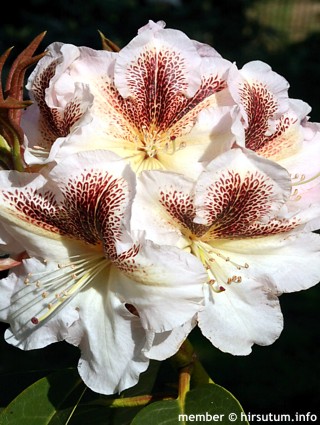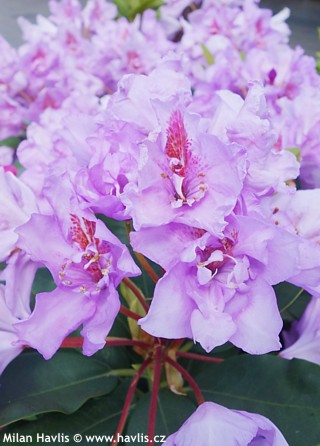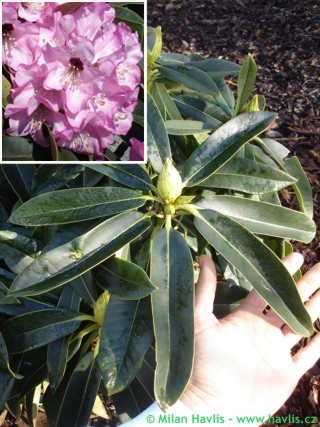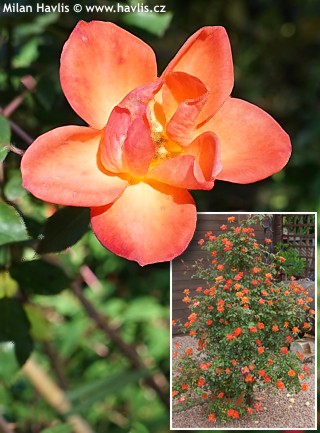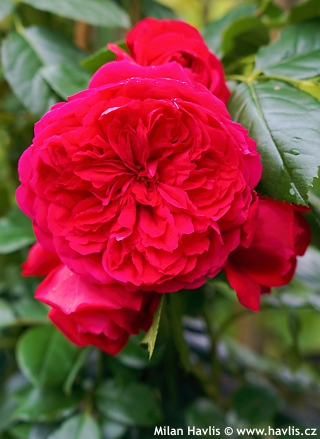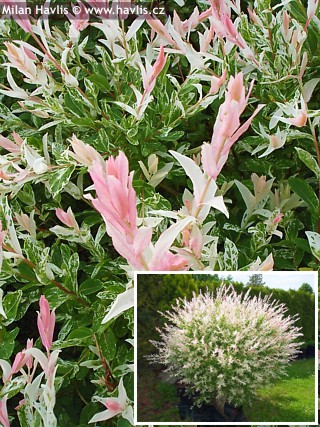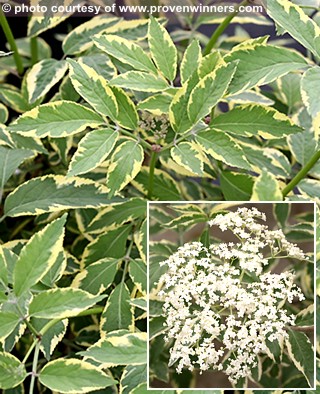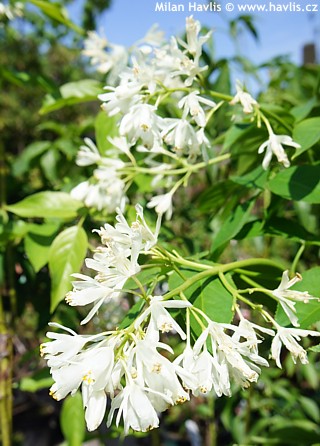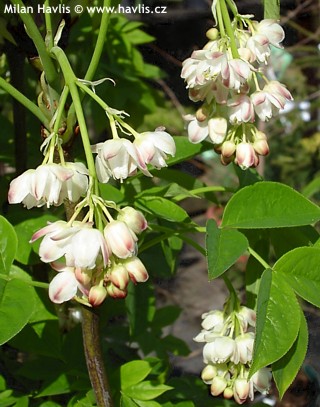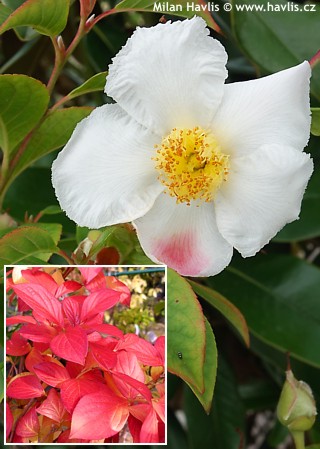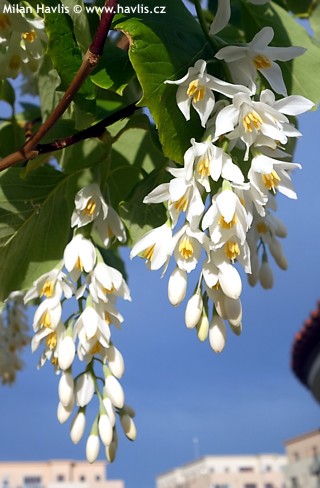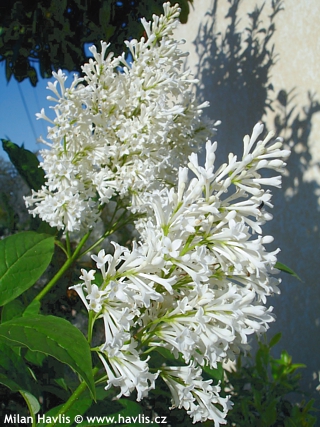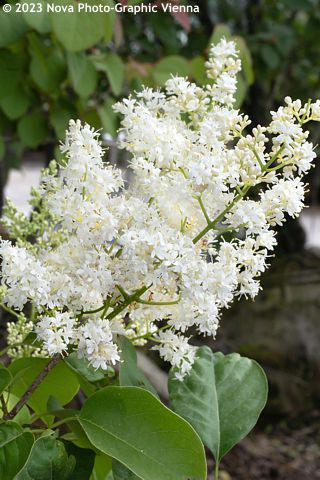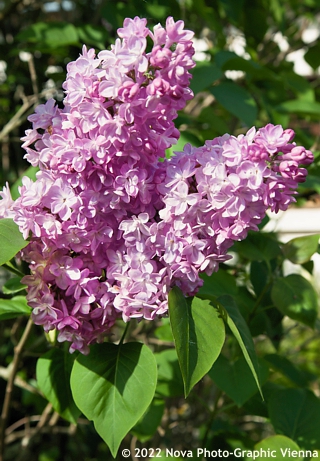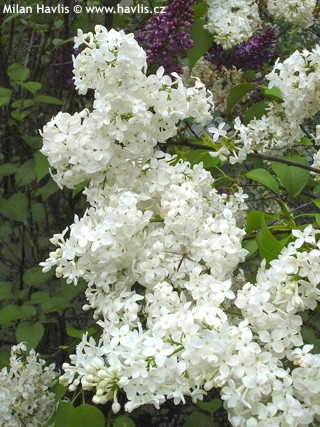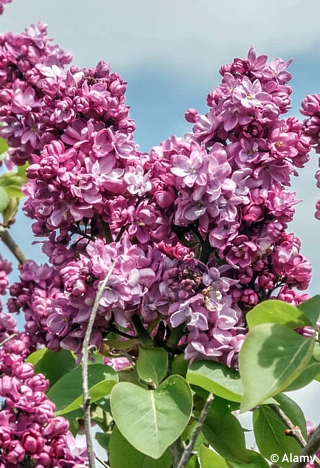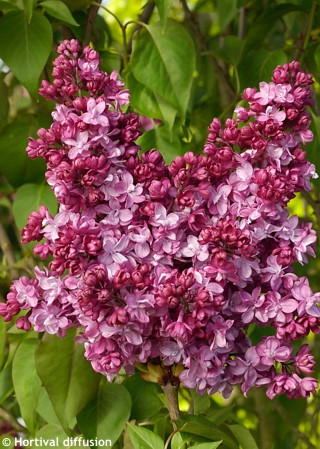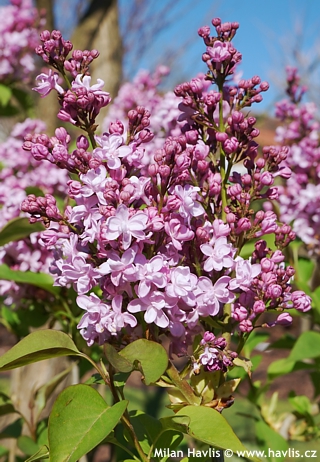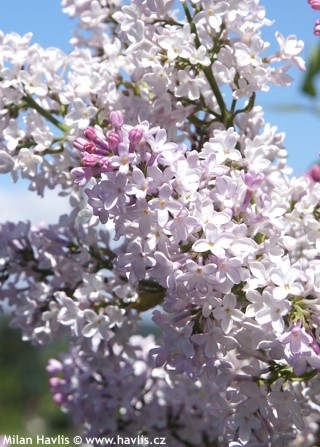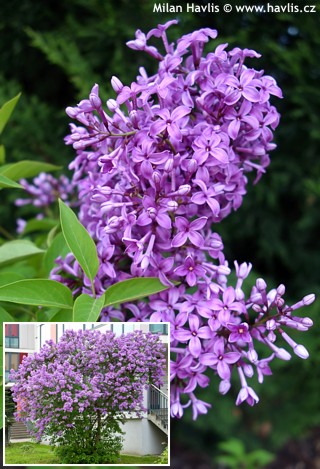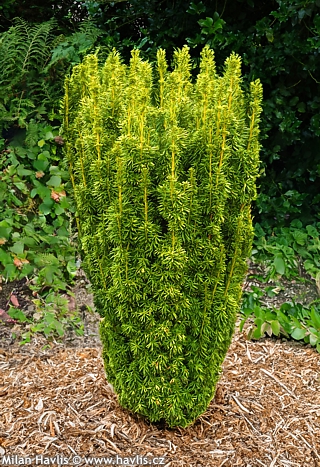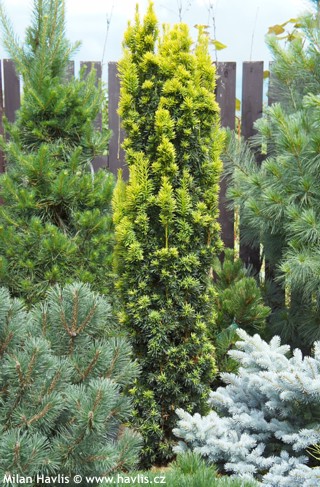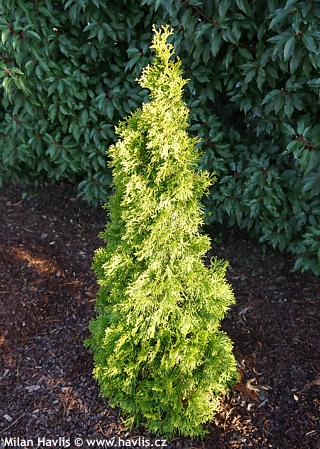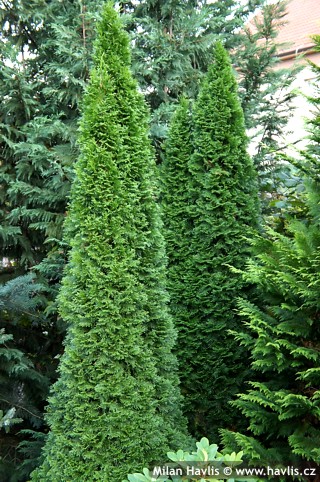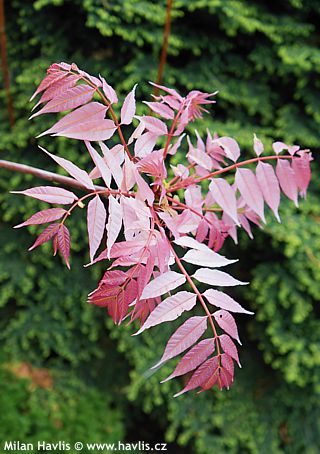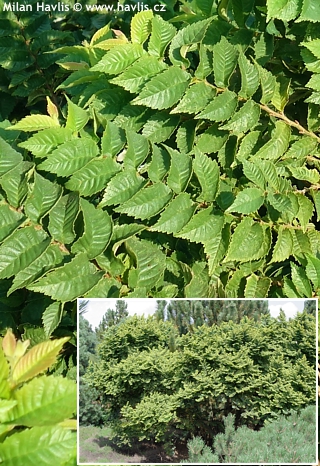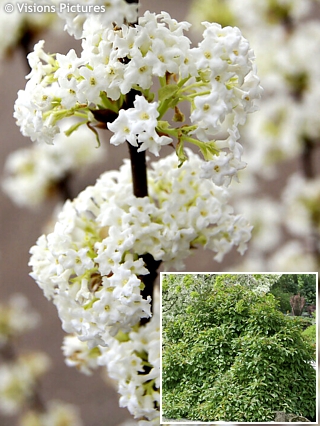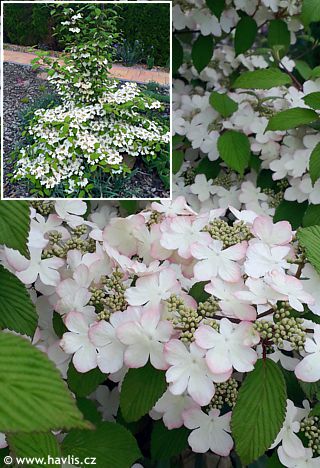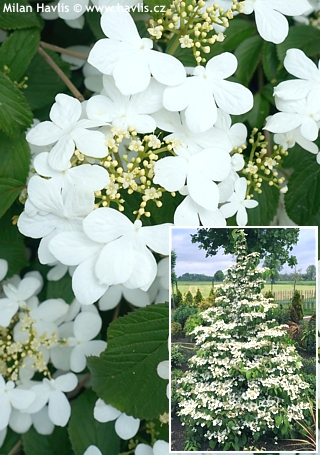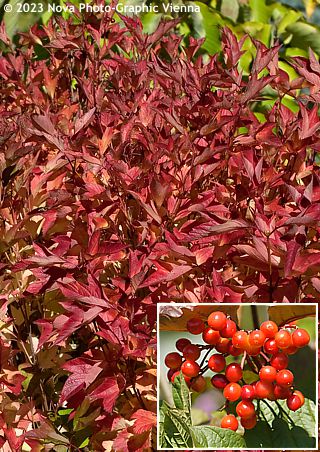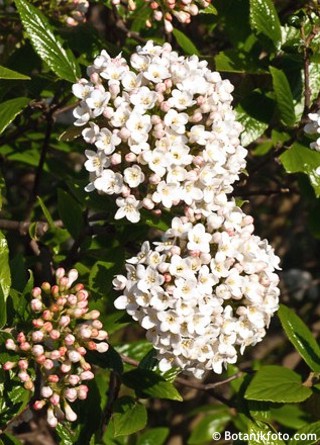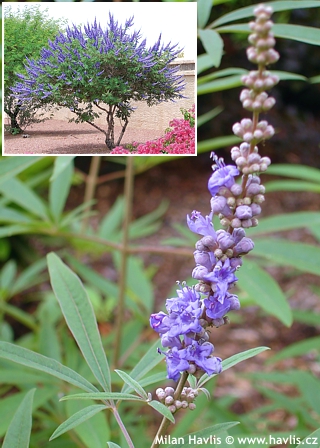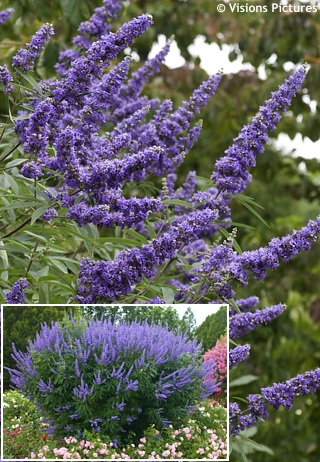CURRENTLY IN STOCK:
NORTH WIND® is a hybrid Korean maple from the American Jack Frost® series, bred at Iseli Nurseries in Oregon, and this variety is considered their flagship. It is characterized by the soft red colour of its new leaves which turn green before summer, and their autumn change when they turn f ...

3 - 6m

3 - 4m

full sun

4 (down to -34°C)

for zone 5+6

for zone 7
Vitifolium is a long-time favourite of a Japanese maple variety, proved to thrive in almost any garden, and characterized by large, 8-15 cm wide, palmately rounded leaves, which are divided into 9 to 12 pointed lobes with serrated margins. The number of lobes distinguishes this species from all othe ...

3 - 5m

2 - 4m

full sun

5 (down to -29°C)

for zone 5+6

for zone 7
Montpellier maple is a typical Mediterranean tree commonly found in dry, coastal or mountainous landscapes of Portugal, France, and Italy. It makes small, three-lobed, leathery but deciduous leaves, which are medium green in summer, and turn yellow, amber orange or scarlet red in autumn. Its flowers ...

4 - 6m

4 - 6m

full sun

5 (down to -29°C)

for zone 5+6

for zone 7
Shapes and colours are usually the key features of Japanese maples. But there are other maples, too, that can offer other than green colour plus various leaf shapes. And on top of that they grow much faster.
This is ash-leaved maple, also called box elder. Flamingo is so far the best-selling variet ...

3 - 7m

2 - 4m

full sun

2 (down to -45°C)

for zone 5+6

for zone 7
The species of Japanese maple is a green-leaved tree or rather a large shrub. End even though among landscapers and general green-finger-public the red-leaved versions tend to be more popular I suppose that this is the most beautiful and elegant tree of our climate. With its naturally green leaves i ...

3 - 8m

3 - 6m

full to partial sun

5 (down to -29°C)

for zone 5+6

for zone 7
Atropurpureum is a famous and commonly used variety with deeply lobed, red-purple leaves that turn bright red and orange in autumn. They have 5 tips. It forms a multi-stemmed shrub with widely spread branches. It grows slowly and is suitable as a specimen in any garden, not just a Japanese style gar ...

3 - 6m

3 - 4m

full to partial sun

5 (down to -29°C)

for zone 5+6

for zone 7
Bi-hoo is a new Japanese maple variety found by maple enthusiast, Mr.Masayoshi, in Japan in 1993. It was introduced and licensed in Europe by Maillot Nurseries in France in 2004. It is valued predominantly for its stunning colour in autumn and winter when the stronger branches and stems gain golden ...

2 - 3m

1,5 - 2m

full to partial sun

5b (down to -27°C)

for zone 5+6

for zone 7
Bloodgood is an extremely commercially successful variety with deep burgundy leaves. They have 7 lobes and hold the colour reliably. The leaves turn bright scarlet red in the autumn. The bark is blackish-red.
It forms a small tree or a large shrub with compact, rounded crown with predominantly upr ...

3 - 6m

2 - 3m

full to partial sun

5b (down to -27°C)

for zone 5+6

for zone 7
Fireglow is a red-leaved Japanese maple variety from Italy. It is similar to Bloodgood with less vigorous growth and brighter red colour, and Atropurupureum with more upright habit and richer leaf colour. Leaves are palmate, 5-lobed, deciduous, glowing crimson red when they emerge and shiny burgundy ...

2 - 4m

2 - 4m

full sun

5 (down to -29°C)

for zone 5+6

for zone 7
Katsura is a Japanese maple that is highly decorative especially in spring, when new leaves emerge, and in autumn, when they change again. They are typically palmate, rather small, 5-lobed, chartreuse yellow-green with coppery margins in early spring, rich green in summer, and glowing golden-yellow ...

1,5 - 3m

1,5 - 3m

full to partial sun

5 (down to -29°C)

for zone 5+6

for zone 7
The variety name of Osakazuki Japanese maple seems to refer to the third largest city in Japan, Osaka, which is renowned for its extensive vineyards that replaced cotton fields. There could be at least two reasons for choosing it – either in reference to its bright carmine red autumn leaves wh ...

3 - 7m

3 - 5m

full to partial sun

5 (down to -29°C)

for zone 5+6

for zone 7
Red Emperor is another red-leaved Japanese maple, this time from the USA, where it was introduced in 1976 by Dick Wolff from Red Maple Nursery in Pennsylvania. He was an enthusiastic lover of the vibrant shades of red and maroon leaves on Japanese maples, and he was especially proud of his Red Emper ...

4 - 6m

2 - 4m

full to partial sun

5 (down to -29°C)

for zone 5+6

for zone 7
Sango-kaku is a Japanese maple that has so many colours that we are lost for words. Its main attraction is the colour of bark which is orangey-red in summer and bright coral red in winter. The palmate leaves have 5 lobes and emerge orangey-yellow with salmon pink shades, changing to light green or y ...

2 - 4m

1 - 2,5m

semi-shade / partial sun

5 (down to -29°C)

for zone 5+6

for zone 7
Crimson Sentry is most certainly a key feature of many mid-sized and small gardens. Its yearly growths are short so it will easily fit even in a front yard.
It is an eye-catching variety of Norway maple owing to the foliage. The leaves are bright purple-burgundy when young, and deep crimson red th ...

3 - 6m

2 - 3m

full to partial sun

4 (down to -34°C)

for zone 5+6

for zone 7
Even among a hundred trees you will notice Red Flamingo hybrid snake-bark maple first. Such a colourful small tree must have been brought directly from Mars where red is constantly in vogue. It is a stunning variety making a breathtaking display wherever you put it. Its key features are the leaves a ...

2 - 4m

1,5 - 3m

full to partial sun

7 (down to -23°C)

for zone 5+6

for zone 7
Evi's Pride (also spelled Evey's Pride) is a purple-leaved form of silk tree which boasts with better hardiness and richer flowering as opposed to Summer Chocolate®. Its flowers are rich pink, hairy spheres with nearly white centres, 3-5 cm large and with a sweet fragrance. Fern-like, compound ...

VII - VIII

3 - 5m

3 - 6m

full sun

7 (down to -23°C)

for zone 5+6

for zone 7
RAINBOW PILLAR® is a unique variety of shedblow serviceberry with upright, columnar growth that is suitable for small gardens and hedges. In April it produces numerous star-shaped, white, scented flowers that are followed by small, spherical berries. These are ready to be picked when their red ...

IV - IV

2 - 5m

1 - 2m

full sun

4 (down to -34°C)

for zone 5+6

for zone 7
Juneberry is a large shrub cultivated mostly for its delicious and healthy fruit. It is a large deciduous shrub or a small tree.
Flowers are star-shaped, white and scented and appear in mid spring. Oval leaves are up to 8 cm long, emerge bronze and mature to green colour, turning scarlet red or dee ...

IV - V

2 - 6m

2 - 5m

full sun

4 (down to -34°C)

for zone 5+6

for zone 7
Strawberry tree is another of my favourite evergreen plant, formerly classified as tender in C.E. continental climate, but we began a long-running trial where we test a group of Mediterranean plants for their hardiness. It started when we noticed that many macchia plants have to struggle with advers ...

X - V

2 - 4m

2 - 4m

full to partial sun

6b (down to -21°C)

for zone 5+6

for zone 7
Atlantic is a French variety of strawberry tree selected and introduced by the Pepinieres Minier in 1993. It boasts a neat and well-behaved habit, dense branching, and improved hardiness. Its evergreen leaves are narrowly obovate, 5-7 cm long, finely serrated at margins, they emerge bronze red and r ...

V

2 - 3m

1 - 2m

full sun

7 (down to -23°C)

for zone 5+6

for zone 7
Compacta is a strawberry tree selection found many years ago as a seedling of the species. It boasts a neat and well-behaved habit, dense branching, and improved hardiness. Its evergreen leaves are narrowly obovate, 5-7 cm long, finely serrated at margins, they emerge bronze red and remain soft gree ...

IX - V

1,5 - 3m

1 - 2m

full to partial sun

7 (down to -23°C)

for zone 5+6

for zone 7
Rubra is a common name for all forms of strawberry tree with red flowers. Only those plants which also boast other distinct features were selected and registered as individual varieties. It makes evergreen, narrowly oval to obovate, 6-10 cm long, leathery leaves with serrated margins, more conspicuo ...

X - V

2 - 4m

2 - 4m

full to partial sun

6b (down to -21°C)

for zone 5+6

for zone 7
BERRIES & CREAM butterfly bush produces 15-20 cm long, slim panicles composed of small, funnel-shaped, fragrant flowers with orange throat. They are a bit naughty when it comes to colour – some are white, some are magenta purple, some are bi-coloured as if you mix a bowl of forest fruit with f ...

VII - IX

1,8 - 2,3m

1 - 1,5m

full sun

5b (down to -27°C)

for zone 5+6

for zone 7
Although this incense cedar is one of the most sought after conifers of the south, it seems to perform much better in Czech climate thanks to cold and wet winters. It needs a lot of sun in summer though to keep its varigated leaves golden. Though, if the sun is not as hot as in the Mediterranean, fo ...

5 - 10m

full to partial sun

5 (down to -29°C)

for zone 5+6

for zone 7
Aphrodite is a beautiful, large-flowered sweetshrub hybrid between c.chinensis and c.occidentalis. The flowers are often compared to magnolias - both in shape and size. They are 7-9 cm across, rich crimson to burgundy red, and appear with the first hot days of May, and continue blooming until late J ...

V - VIII

3 - 4m

2 - 3m

full to partial sun

7 (down to -23°C)

for zone 5+6

for zone 7
Black Lace is an older and proved variety of hardy camellia, in fact one of the best reds available. Its is a hybrid of c.reticulata and c.williamsii and has so far withstood -20°C. Its fully double, dahlia-like flowers are rich red, and bloom from early April for 6 to 8 weeks if the plant has enoug ...

IV - V

1,5 - 3m

1,5 - 2,5m

semi-shade to shade

7 (down to -23°C)

for zone 5+6

for zone 7
Pink Icicle is a showy, large-flowered hybrid camellia bred by dr. Ackermann from the United States National Arboretum. Its semi-double, soft pink flowers are 11 cm across, and open in April for 6-8 weeks. Leaves are evergreen, obovate, gently serrated at margins, deep green, and glossy. It grows fa ...

IV - V

1,8 - 2,5m

1,3 - 1,8m

semi-shade to shade

6b (down to -21°C)

for zone 5+6

for zone 7
Alba Simplex is a spring flowering hardy camellia whose origin, despite the availability of multiple historical sources, is rather uncertain. One source claims that it comes from China but does not support it with any further details. Another source says it comes from Germany, registered in 1816, an ...

III - IV

2 - 3m

1,5 - 2m

semi-shade to shade

7 (down to -23°C)

for zone 5+6

for zone 7
Kimberley is another old Japanese camellia variety from early 20th century, and awarded AGM by RHS in 1934. It produces beautiful, cup-shaped, rich scarlet red blossoms with a crown of yellow stamens. Flowering begins in April and continues for 6-8 weeks. Leaves are evergreen, narrowly obovate, gent ...

IV - V

2,5 - 3,5m

1,3 - 1,5m

semi-shade to shade

6b (down to -21°C)

for zone 5+6

for zone 7
Monumentalis is a unique version of hornbeam with strictly conical shape and very slow growth rate. Leaves are bright green and cover the whole of the plant. Even after they fall the tree remains very attractive with its regularly growing branches making a bonsai appearance. No pruning or trimming r ...

1 - 3m

1 - 1,5m

full to partial sun

4 (down to -34°C)

for zone 5+6

for zone 7
If you like cedars or perhaps if you are a collector or just an enthusiast don’t miss this one. It is a beautiful example of a form that is rarely seen in private gardens or arboretums.
Fastigiata is an attractive form of Atlas cedar with strictly narrow, columnar habit. Its evergreen, short ...

4 - 8m

1 - 2m

full sun

7 (down to -23°C)

for zone 5+6

for zone 7
Himalayan cedar is the most graceful of all cedars. Bushes Electra is a slower growing variety bred by Richard Bush in Canby, USA, at the turn of the century. It bears showy, 2-3 cm long, needles of silvery blue colour on insolated parts of the plant, and blue-green color inside the bush. The side b ...

4 - 7m

2 - 3m

full sun

5b (down to -27°C)

for zone 5+6

for zone 7
Pendula Himalayan cedar is one of the most peculiar yet highly desired varieties among cedars. Each piece is unique and often quite bizarre, making it a striking specimen in any garden. And if you're an enthusiastic "pruner," you'll definitely have fun here! It is an evergreen conifer with 3–4 ...

2 - 3m

2 - 3m

full to partial sun

5b (down to -27°C)

for zone 5+6

for zone 7
Katsura tree is native to China and Japan, and thanks to its versatility it has found many fans among both professionals and general gardening public. It is a deciduous shrub or very rarely a tree (uneasy to train it into a tree with one central leader). Rotfuchs means Red fox and it is a special va ...

3 - 6m

1 - 2m

full sun

4 (down to -34°C)

for zone 5+6

for zone 7
RISING SUN™ is an American variety of Eastern redbud found by Ray and Cindy Jackson for their Jackson Nursery in Belvidere, Tennessee, as a chance seedling. It boasts large, 10-14 cm long and wide, broadly heart-shaped leaves which emerge bright golden or orange while older leaves are bright y ...

IV - V

2 - 4m

2 - 4m

full to partial sun

5 (down to -29°C)

for zone 5+6

for zone 7
This giant dogwood has another name which, in my opinion, characterizes the plant much better = wedding cake tree. Looking at the habit of the more commonly grown cultivar Variegata one knows exactly what it means. This beauty can easily become a show-stopping specimen in a garden of literally any s ...

IV - V

3 - 5m

2 - 3m

full sun

5 (down to -29°C)

for zone 5+6

for zone 7
Cherokee Daybreak® has 4 large, creamy white bracts around a tiny flower head. Leaves are mid green with yellowish-white varigation that turns pink towards the end of summer. Autumn leaves show multiple of colours with prevailing purple shades.
This shrub does not like stress of any kind. Find ...

IV - V

2 - 4m

full to partial sun

5 (down to -29°C)

for zone 5+6

for zone 7
Big Apple is a Japanese dogwood variety from the USA where it was discovered and selected by Polly Hill in the 1960s. The seeds were obtained from M.M. Brubaker of Pennsylvania and as the plants grew she noticed one that was different from the species. She named it Big Apple and while most contempor ...

VI - VII

3 - 5m

2 - 3m

full sun

5 (down to -29°C)

for zone 5+6

for zone 7
This Japanese dogwood has both large leaves and flowers. It flowers in June when the shrub is fully in leaf. The flowers are 6-8 cm wide, creamy white flower composed around small flower heads. They are followed by edible, bright pink fruit that looks like litchi. Pointed leaves are deciduous, ovate ...

V - VI

2 - 3m

2 - 3m

full to partial sun

5 (down to -29°C)

for zone 5+6

for zone 7
European hazelnut is a well-known shrub of European woodlands which is popular mainly for its fruit - nuts. It is a suckering, thicket-forming shrub with numerous upright stems. As it is a dense and large shrub it is commonly used as a screening plant. It will also make a wild hedge which should be ...

II - III

2 - 4m

2 - 4m

full to partial sun

4 (down to -34°C)

for zone 5+6

for zone 7
Hazel is a well-known shrub of European woodlands which is popular mainly for its nuts.
It is a suckering, thicket-forming shrub with numerous upright stems. As it is a dense and large shrub it is used as a screening plant. It will also make a wild hedge which should be controlled if required compa ...

II - III

2 - 4m

full to partial sun

4 (down to -34°C)

for zone 5+6

for zone 7
Contorta is a contorted version of our European hazelnut. It was found as a spontaneous mutation of a branch in a hedge in Tortworth, England, in the middle of 1800’s by a Victorian gardener Canon Henry Nicholson Ellacombe. Enthusiastically and willingly he cut off a twig brought it to his fri ...

II - III

2 - 3m

2 - 3m

full to partial sun

4 (down to -34°C)

for zone 5+6

for zone 7
Filbert is a hazelnut species from S.E. Europe and S.W. Asia and exhibits a vigorously growing many-stemmed shrub with deciduous leaves. Purpurea is an old variety with deep maroon to near black leaves. They are 5-12 cm long, 4-10 cm wide, and during summer the colour of maturing leaves changes to d ...

II - III

3 - 6m

3 - 6m

full sun

4 (down to -34°C)

for zone 5+6

for zone 7
Smoke tree might have a slight problem these days when smoking outside becomes prohibited ... just joking, the alleged smoke is what flowering of this shrub looks like. It blooms from
June to July and from a distance the clusters do look like purple smoke. The leaves of Royal Purple are deep burgund ...

VI - VII

2 - 5m

full to partial sun

5 (down to -29°C)

for zone 5+6

for zone 7
Splendens hawthorn is undoubtedly one of the most beautiful trees of northern hemisphere not only among hawthorns. It is valued for its lush, glossy foliage and a profusion of red berries. Leaves are deciduous, broadly elliptic, serrated at margins, dark green in spring and summer, and take on vibra ...

V - VI

4 - 7m

3 - 4m

full to partial sun

4 (down to -34°C)

for zone 5+6

for zone 7
Sekkan is a gorgeous evergreen conifer not only for Japanese gardens. It forms a fat, cone-shaped shrub or small tree with bright, sulphur-yellow or creamy-yellow new growths. They remain yellow throughout the year until next spring when they turn deep green and are replaced by new foliage that is a ...

3 - 8m

2 - 3m

full to partial sun

5b (down to -27°C)

for zone 5+6

for zone 7
Gold Rider is still quite new in the Leyland cypress family. It produces flattened sprays of bright yellow-green, scale-like leaves. The branches are not pendent, not erect. Something in between and that makes it stand apart from chamaecyparis. The big advantage of Leyland cypress is the fact that i ...

2 - 10m

2 - 4m

full to partial sun

5b (down to -27°C)

for zone 5+6

for zone 7
...

2 - 10m

2 - 3m

full sun

5b (down to -27°C)

for zone 5+6

for zone 7
Smooth cypress is an extraordinary conifer whose steel-blue needles will leave no doubt that this one is really something.
The species of this cypress comes from SW of the USA, while Fastigiata variety was selected in Italy. It has distinctly silvery-blue to glaucous colour of thread-like needles a ...

5 - 11m

1 - 3m

full sun

7 (down to -23°C)

for zone 5+6

for zone 7
Smooth cypress comes from SW of the USA and is probably the only true cypress that can stand winters down to zone 6. Fastigiata varieties are of columnar habit and are a sought after plant for both exotic types of gardens as well as typical Central-European landscapes where it will create a perfect ...

5 - 9m

1 - 3m

full sun

6b (down to -21°C)

for zone 5+6

for zone 7
Garda is a selected form of Tuscan cypress found in the Italian Lake Garda region. It naturally forms slender, evergreen columns, whose dense branches are covered with dark green, scale-like needles that do not lose their colour even in winter. The branches are shorter, firmly attached to the trunk, ...

6 - 12m

1 - 2m

full sun

8 (down to -18°C)

for zone 5+6

for zone 7
Sonoma dove tree is a sensation that has been a subject of excited debates and positive comments on horticultural forums for some time now. It is a variety that arose from grafts taken from Sonoma Heritage Tree No.20 at Sonoma Horticultural Nursery. This tree was about 60 years old at the turn of th ...

V - VI

6 - 8m

2 - 4m

full to partial sun

7 (down to -23°C)

for zone 5+6

for zone 7
Decaisnea is a very attractive and rare small tree from China. It is cultivated for its beautiful, exotic looking foliage, and coloured seed pods. It produces multiple of thin, upright trunks which bear leaves usually at the tops, just like aralias.
The deciduous leaves are elegant, light to mid gr ...

VI - VI

2 - 5m

1 - 3m

full to partial sun

7 (down to -23°C)

for zone 5+6

for zone 7
Gilt Edge is a beautiful variety of this evergreen silverthorn. It has ovate, up to 10 cm long, leathery but thin leaves that are deep green in the middle and bright yellow at margins. Newly emerging leaves and twigs are silvery-beige. Apart from the foliage this plant is also interesting for its al ...

IX - X

1,8 - 3m

1 - 2m

full to partial sun

6b (down to -21°C)

for zone 5+6

for zone 7
Limelight is my personal favourite among evergreen silverthorns. It has ovate, up to 10 cm long, leathery but thin leaves that are bright yellow in the middle and deep green at margins. The area between the centres and margins is light, soft green so the overall effect is 3-coloured. Newly emerging ...

2 - 3m

1 - 2m

full to partial sun

7 (down to -23°C)

for zone 5+6

for zone 7
Viveleg silverthorn is a bushy, upright growing, evergreen shrub with irregularly variegated leaves. They are leathery, oval to ovate, partially undulated, and glossy. The centres are dark green, the margins are rich yellow, and the borderline between these two colours is light green but is not pres ...

IX - X

2 - 3m

1 - 2m

full to partial sun

7 (down to -23°C)

for zone 5+6

for zone 7
Pagode is a red-vein variety producing cute, little, bell-shaped, creamy flowers. Compared to the species they are slightly bigger and have redder margins and prominent veins. They appear from mid to late spring, underneath the umbrella of leaves. Deadheading spent flowers should increase the number ...

V - VI

1,5 - 2,5m

1 - 1,5m

full sun

4 (down to -34°C)

for zone 5+6

for zone 7
PRETTYCOAT is a unique variety of red-vein producing cute, little, bell-shaped, creamy flowers which almost lack pink margins. They show prominent maroon veins which meet at the very bottom of the bells and hang underneath the umbrella of leaves. Flowering begins in mid spring and deadheading of spe ...

V - VI

1 - 2m

1 - 1,5m

full sun

4 (down to -34°C)

for zone 5+6

for zone 7
AZURA is undoubtedly the first reliably hardy cider gum variety of European origin. It has typically steel blue-green, rounded, highly aromatic, evergreen foliage along silvery blue stems. It grows moderately to fast and its ultimate height is expected to reach about 4-5m without pruning but it can ...

2 - 4m

1,5 - 2m

full to partial sun

7 (down to -23°C)

for zone 5+6

for zone 7
MIDNIGHT FEATHER is a unique variety of European beech from the Netherlands with attractive foliage. Its deciduous leaves are deep maroon during the season and brighter burgundy red in autumn. They are glossy and conspicuously incised or notched at margins like many Japanese maple varieties. The wil ...

3 - 6m

2 - 3m

full to partial sun

for zone 5+6

for zone 7
Silver bell is a gorgeous shrub whose other name is probably even more accurate: snowdrop tree. Its origin is SE USA and it is still quite rare in Europe although it is easy to grow and hardy.
Silver bell is cultivated mostly for its snow-white bell-shaped flowers produced in masses in late April a ...

IV - V

4 - 7m

3 - 4m

full sun

5 (down to -29°C)

for zone 5+6

for zone 7
Barmstedt Gold Vilín is unique in its flower colour. It is not sulphur yellow like many other yellow flowering varieties. This one is truly golden yellow with a hint of light orange. The flowers are fringe-like and very fragrant, their perfume is strongly fruity with a little bit of spice. They come ...

I - III

2 - 3m

2 - 3m

full sun

5 (down to -29°C)

for zone 5+6

for zone 7
Chinese helwingia, var. chinensis, was first described by Batalin in 1893. It is a hardy species found in North Burma, West and Central China (Yunnan, Szechuan, Kansu, Kweichou, Hupeh). For me it is the most attractive one as it produces reliably evergreen leaves. They are 5-6 cm long, narrowly lanc ...

1,5 - 3m

1 - 2m

semi-shade to shade

7 (down to -23°C)

for zone 5+6

for zone 7
Seven son flower is a fascinating shrub that was first found in China by Ernest H.Wilson more than a hundred years ago, in 1907. Still, it took almost 80 years before this plant was cultivated commercially.
Seven son flower is a large shrub or a small tree with 3 predominant features. Leaves, inflo ...

VIII - X

3 - 5m

2 - 3m

full to partial sun

5b (down to -27°C)

for zone 5+6

for zone 7
Resi is a Dutch variety of hybrid hibiscus (h. syriacus x h. paramutabilis) bred by Piere Theunissen and introduced by the nursery Piet Vergeldt Boomkwekerijen in 2008. In the US it is sold under the brand name FULL BLAST™. European Patent No. 33825 was granted in 2013 (expired in 2021). It be ...

VII - IX

3 - 5m

2 - 3m

full sun

5 (down to -29°C)

for zone 5+6

for zone 7
“Hamabo” will no doubt attract your attention thanks to its rare, pink-red veins on pale pink or almost white flower petals, each of which has its own deep red blotch in the centre. The shrub is always erect and slightly rounded with age.
It has very decorative leaves that are unique. T ...

VII - IX

2 - 3m

full sun

5 (down to -29°C)

for zone 5+6

for zone 7
Speciosus is an elegant, semi-double flowering variety of Rose-of-Sharon. Its flowers are medium-sized, snow white with burgundy red eye, and are composed of two rows of large petals and a set of dwarf, odd-shaped petals in the centre which surprisingly do not spoil the flower’s purity and ele ...

VII - IX

1,5 - 3m

1 - 1,5m

full sun

5 (down to -29°C)

for zone 5+6

for zone 7
The columnar-growing rRose-of-Sharon originated from unnamed seedlings at the Italian nursery Gandini, where the owner showed them to Maria and Adrienne van Aart of the Dutch nursery Van Aart Boomkwekerijen in 2013. They agreed to take some plants back to Holland for further examination and propagat ...

VII - IX

2 - 3m

0,5 - 1m

full sun

5 (down to -29°C)

for zone 5+6

for zone 7
FLOWER TOWER WHITE is an upright and slender growing variety of rose-of-Sharon with large, single flowers with a few toussled sepals in the centre which lacks maroon eye so the flowera are overall clean and snow-white. Their diameter is 8-10 cm and they come out from mid-July until September if the ...

VII - IX

2 - 3m

0,5 - 1m

full sun

5 (down to -29°C)

for zone 5+6

for zone 7
FLOWER TOWER RUBY is an upright and slender growing variety of rose-of-Sharon with large, single to semi-full flowers. Just take a chance to see how many flowers will be single and how many will bear a few dwarf sepals in the centre, you never know at the beginning. They are bright magenta purple wi ...

VII - IX

2 - 3m

0,5 - 1m

full sun

5 (down to -29°C)

for zone 5+6

for zone 7
FRENCH CABARET® RED is a rich burgundy red Rose-of-Sharon variety from the FRENCH CABARET® series bred by French nursery Minier and introduced in 2015. Its flowers are about half the size compared to those of the Chiffon® series but they are reliable fully double and their rich red do ...

VII - IX

1,5 - 3m

1 - 1,5m

full sun

5 (down to -29°C)

for zone 5+6

for zone 7
FRENCH CABARET® PURPLE is a deep purple pink Rose-of-Sharon variety from the FRENCH CABARET® series bred by French nursery Minier and introduced in 2015. Its flowers are about half the size compared to those of the Chiffon® series but they are reliable fully double. They come out reli ...

VII - IX

1,5 - 3m

1 - 1,5m

full sun

5 (down to -29°C)

for zone 5+6

for zone 7
ERUPTION® is a Rose-of-Sharon variety with large, up to 10 cm wide flowers. They are semi-double i.e. producing 5 large petals and several dwarf sepals in the centre whose size and quantity increases with age. They are glowing purple pink in colour and decorated with a conspicuous maroon eye an ...

VII - IX

1,5 - 3m

1 - 1,3m

full sun

5 (down to -29°C)

for zone 5+6

for zone 7
ULTRAMARINE® is a striking Rose-of-Sharon variety from the breeders of Minier Nursery in France. Its large flowers are 10 cm across, deep violet blue with a typical burgundy red eye and veins in the centre. Blooming begins in early July and continues until sunny and warm days of September. Deci ...

VII - IX

2 - 3m

1 - 1,5m

full sun

5 (down to -29°C)

for zone 5+6

for zone 7
STARBURST CHIFFON® is a masterpiece among the CHIFFON® series of Rose-of-Sharon hybridized by English botanist Dr.Roderick Woods. It was found in 2010 and bears eye-catching flowers of snow white colour with prominent, star-like, vibrant purple red rays coming from the central eye. There a ...

VII - IX

1,5 - 3m

1 - 1,5m

full sun

5 (down to -29°C)

for zone 5+6

for zone 7
Drooping Solo is a Lawson cypress variety discovered by a Dutch conifer lover and horticulturist Wiel Linssen from Baexem. It was a seedling mutation of Imbricata Pendula, a similar variety of much taller but narrower habit. Drooping Solo forms dense shrubs of a broadly pyramidal shape with drooping ...

2 - 3m

1,5 - 2m

full to partial sun

5 (down to -29°C)

for zone 5+6

for zone 7
Cypress trees trees and shrubs are very popular for their variable shapes, leaf types and colours. Ivonne variety (or sometimes spelled Yvonne) has almost flat, soft needles of bright greeny-yellow colour from spring to summer, changing to golden-yellow in winter. It grows medium fast into a columna ...

3 - 6m

full to partial sun

5 (down to -29°C)

for zone 5+6

for zone 7
Cypress trees and shrubs are very popular for their variable shapes, leaf types and colours. Variety Columnaris has blue needles and compact shape. It does not grow wider than 1m which makes it ideal for hedges that are only trimmed at the top. Mature plants can reach 6-8m in many decades, they are ...

3 - 6m

1 - 1m

full to partial sun

5 (down to -29°C)

for zone 5+6

for zone 7
Burgundy is a beautiful variety of desert willow of untraceable origin, possibly a selection of Rio Salado with slightly paler flowers. Burgundy desert willow makes deep maroon, velvety flowers with white and yellow stripes in the throat. They are slightly fragrant and formed in narrow, terminal, up ...

VI - IX

2 - 5m

2 - 4m

full sun

7 (down to -23°C)

for zone 5+6

for zone 7
Pink Dawn is a name that fits this beauty perfectly. The orchid-like flowers are soft pink as a new dawn promising a lovely day. They have yellow throats with purple-pink veins and frilled margins. They are lightly scented with a sweet perfume that attracts butterflies. They keep coming out for as l ...

VI - IX

3 - 5m

2 - 4m

full sun

5b (down to -27°C)

for zone 5+6

for zone 7
The orchid-like flowers are pale to bright pink with a yellow throat and frilled margins. Flowers have a lovely, sweet scent. Summer Bells® is a chitalpa variety repeating flowering. It starts in early summer and last for 2-3 weeks, and then again in second half of August for further 2 weeks. U ...

VI - VIII

3 - 5m

2 - 4m

full sun

5b (down to -27°C)

for zone 5+6

for zone 7
Mary Nell is a hybrid holly from the USA, bred by Joe McDaniels in Tom Dodd Nursery in Alabama in 1962. It is a cross between large-leaved holly ilex latifolia and hybrid holly Red Delight which is a cross between ilex cornuta and ilex pernyi. Joseph C. McDaniels (1912-1982) was a renowned horticult ...

3 - 4m

1,5 - 2m

full to partial sun

7 (down to -23°C)

for zone 5+6

for zone 7
The species of common holly is one of the tallest evergreen plants available in zone 6. It has 5-7 cm long, dark green, alternate leaves, very glossy, and with sharp thorns along the edges. Tiny flowers appear at the end of spring and are followed by vivid red berries in the autumn, so typical for h ...

2 - 4m

1 - 3m

full to partial sun

5b (down to -27°C)

for zone 5+6

for zone 7
Ingramii
is a male English holly variety whose origin I did not manage to find. There are notes about its existence yet before 2000 but it appears to be commercially attractive only from about 2015 or so. It makes heavily toothed, mid-sized leaves or deep green colour with rich silver-white marblin ...

1 - 1,8m

1 - 1,8m

full to partial sun

5b (down to -27°C)

for zone 5+6

for zone 7
Anicet Delcambre is a Chinese holly often sold under its alternative English name Needlepoint. Its leaves almost completely lack sharp spines, they are entire with only one tip. They emerge soft green and remain such for a long time until they mature in late summer to dark green. They are very gloss ...

2 - 3m

1,5 - 2,5m

full sun to shade

6b (down to -21°C)

for zone 5+6

for zone 7
Tarajo (pronounced tarayo) is a large-leaved holly from southern Japan and southeastern China. It is considered a rarity and a collector's gem among evergreen shrubs everywhere outside its native region. No wonder, it was love at first sight for me, too. “Tarayo” means “many leaves ...

2 - 6m

2 - 4m

full to partial sun

7 (down to -23°C)

for zone 5+6

for zone 7
Belgica Aurea is a variegated version of Highclere holly a sport of Belgica variety, found and introduced by a Dutch nursery Koster & Son in 1908. Originally it was erroneously named ilex perdao aurea. Once Highclere hybrid hollies spread out it was corrected to i. x altaclerensis given a name Silve ...

3 - 5m

1,5 - 3m

full to partial sun

7 (down to -23°C)

for zone 5+6

for zone 7
Lawsoniana is my favourite. It is a female, variegated version of male plant Hendersonii which is just green. The leaves of Lawsoniana are deep green at the margins, grading through light green towards bright yellow centres. They are curled which gives the plant an extraordinary appearance. Being a ...

1,5 - 4m

1 - 2,5m

full to partial sun

7 (down to -23°C)

for zone 5+6

for zone 7
Little Stranger is a rare, compact growing blue holly variety from Germany. It is an upright, slow growing shrub with evergreen foliage. Leaves are very dark green, narrowly lance-shaped, almost spineless or just gently serrated at margins, and very glossy. As a male variety it has no fruit but is a ...

2 - 3m

1 - 1,5m

full to partial sun

5 (down to -29°C)

for zone 5+6

for zone 7
Heckenfee® is a new variety of blue holly from Germany, bred by Hans Hachmann and patented only in 2000. It is a female variety of its male form Heckenstar. This means that this cross produces berries. Outside Europe it is distributed under trade name Castle Spire™.
Heckenfee® is a ...

2 - 3m

1 - 1,5m

full sun to shade

5 (down to -29°C)

for zone 5+6

for zone 7
HECKENBLAU® ('Hedge Blue') is another Hecken- variety of so-called blue holly, again from Germany. It is an upright, moderately growing shrub with evergreen foliage. Leaves are dark green, broadly elliptic to almost rounded, gently serrated at margins but not prickly, and very glossy. Young lea ...

2 - 3,5m

1 - 1,5m

full to partial sun

5 (down to -29°C)

for zone 5+6

for zone 7
Hibernica is an old juniper variety first introduced in 1838, and still in popular demand, especially for its habit and reliability. Hibernica juniper is an evergreen, columnar shrub of dense habit. It has short, prickly, rich green needles with bluish hues. The branches grow strictly upwards and do ...

3 - 5m

0,5 - 1,5m

full to partial sun

4 (down to -34°C)

for zone 5+6

for zone 7
Coral Sun® is a fascinating new variety of golden-rain tree. It was found by Henny Kolster as a natural mutation among many seedlings in his Dutch nursery in Boskoop in 1993. For three years he had been grafting it onto the koelreuteria paniculata species rootstock and all new plants proved to ...

3 - 7m

2 - 5m

full sun

5 (down to -29°C)

for zone 5+6

for zone 7
Tuscarora is another successful cold-hardy lagestremia hybrid variety from the US National Arboretum. It has bright coral pink to scarlet red flowers composed in upright panicles and appear, according to the quality of the summer, from August to September or October. The leaves are deciduous, glossy ...

VIII - IX

2 - 5m

2 - 4m

full sun

7 (down to -23°C)

for zone 5+6

for zone 7
Fantasy is a fast-growing Japanese crepe myrtle variety. It makes white flowers arranged in short, upright panicles. They are not fragrant and appear, according to the quality of summer, from August to September in C.E. climate. The leaves are deciduous, glossy, tinted mahogany red as they emerge an ...

VIII - IX

3 - 6m

3 - 4m

full sun

7 (down to -23°C)

for zone 5+6

for zone 7
Benoit is an Indian crepe myrtle variety with rich mauve purple flowers and attractive colouring of new leaves. The flowers are arranged in upright panicles, non-scented, and appear, according to the quality of summer, from August to September in C.E. climate. The leaves are deciduous, glossy, brigh ...

VIII - X

2 - 5m

2 - 4m

full sun

7 (down to -23°C)

for zone 5+6

for zone 7
Powhatan is an Indian crepe myrtle variety (not a hybrid) developed at the US National Arboretum. It is a compact, moderately fast-growing shrub or small tree with a dense, almost impenetrable canopy with slightly arching branches on older specimens. The flowers are lilac mauve to pale lavender viol ...

VIII - IX

2 - 5m

2 - 4m

full sun

7 (down to -23°C)

for zone 5+6

for zone 7
RHAPSODY IN BLUE is an attractive crape myrtle variety from the Play It Again® series introduced in 2022. The series comprises of varieties with double flowering on the same panicle and in a few cases dark foliage as a bonus. RHAPSODY IN BLUE bears deep purple flowers with mauve hues against a ...

VIII - IX

2 - 3m

1,5 - 2m

full sun

7 (down to -23°C)

for zone 5+6

for zone 7
GREEN SCREEN privet is a reliably evergreen shrub with medium-sized, evergreen, ovate leaves of an attractive colour. In spring, it emerges with a striking mahogany-red color, which fades as the leaf matures, and the leaf turns olive green. However, before it turns completely green, its matte unders ...

VIII - IX

2 - 5m

1 - 2m

full to partial sun

8 (down to -18°C)

for zone 5+6

for zone 7
Oriental sweetgum is a beautiful, slow growing shrub or a small tree from SW Asia. It bears attractive, deeply cut leaves that are fresh green from spring until late summer, and turning rich yellow in neutral soil or orange and red in highly acidic soil in autumn. Each lobe is decorated with a pair ...

2 - 4m

1,5 - 2,5m

full sun

5b (down to -27°C)

for zone 5+6

for zone 7
Naree sweet gum was found as a spontaneous mutation of the species in Australia and did not reach Europe until after 2000 – it was first introduced by the Junker’s Nursery from Milverton, United Kingdom, in 2002. It belongs among a few unique varieties with yellow leaves. These are decid ...

6 - 10m

3 - 6m

full sun

5 (down to -29°C)

for zone 5+6

for zone 7
We are happy to introduce one of the most beautiful and very rare variety of sweetgum called Rotundiloba. The Latin name says it all: with rounded lobes. Its leaves show distinctly rounded lobes on 3 segments of a 5-lobed star-shaped leaves. They are deciduous, deep green, glossy, turning various sh ...

6 - 12m

4 - 7m

full sun

5b (down to -27°C)

for zone 5+6

for zone 7
Stella is an attractive sweet gum selection, similar to Stared variety, yet a little broader in habit. Its leaves are beautiful, 15-20 cm large, deciduous, star-shaped, deeply lobed, green in summer and rich scarlet red and deep burgundy red in autumn for almost 2 months. An extra feature is the lea ...

6 - 12m

2 - 4m

full sun

5 (down to -29°C)

for zone 5+6

for zone 7
Athene is a large-flowered magnolia hybrid, a cross between magnolia „Mark Jury“ and magnolia x soulangeana „Lennei Alba“. The flowers have almost white petals with deep red or purple red shades at the bottom. They are very fragrant and reach 25-30 cm across when fully opened ...

IV - IV

3 - 4m

3 - 4m

full to partial sun

7 (down to -23°C)

for zone 5+6

for zone 7
Black Beauty magnolia is another brooklynensis hybrid from the Brooklyn Botanic Gardens, USA, which, surprisingly, does not bear yellow flowers. It is a cross of m.acuminata (cucumber magnolia with yellow flowers) and m.liliiflora (lily magnolia with rosy red flowers). It produces 10-20 cm tall, ere ...

IV

3 - 6m

2 - 3m

full to partial sun

5 (down to -29°C)

for zone 5+6

for zone 7
Are you a magnolia lover who thinks he has seen them all? Well, have another look at this almost blue magnolia. Of course it is slightly exaggerated, there are just blue hues in the bud, yet they are stunning.
Blue Opal magnolia is a selection from magnolia acuminata (so-called cucumber magnolia) ...

V - V

3 - 6m

2 - 3m

full to partial sun

5 (down to -29°C)

for zone 5+6

for zone 7
Another unique jewel among magnolias is this yellow flowering hybrid. It is a cross between m.denudata and m.acuminata (cucumber magnolia). It was raised by Phil Savage in Michigan, USA, in 1988 and patented three years later.
Medium-sized flowers are unusual and truly gorgeous. The colour is clea ...

IV - V

3 - 5m

3 - 5m

full to partial sun

5 (down to -29°C)

for zone 5+6

for zone 7
Cleopatra is another magnolia success by a renowned magnolia breeder Vance Hooper from New Zealand. It is a cross between Sweet Simplicity and Black Tulip varieties. The result is a rich purple red, large flower, almost 20 cm across with a lovely fragrance. In Central European climate it grows moder ...

IV - V

3 - 4m

2 - 3m

full to partial sun

7 (down to -23°C)

for zone 5+6

for zone 7
Columnar Pink is an admirable magnolia variety selected by famous English gardener Maurice Foster. His 15-acre large garden is located near Sevenoaks in Kent, U.K., a place about 500 meters above sea level which is sometimes called Kentish Alps since the rest of this south-eastern English county is ...

IV - V

3 - 4m

1 - 2m

full to partial sun

5 (down to -29°C)

for zone 5+6

for zone 7
Coral Lake is a chameleon magnolia changing colours during flowering. It is a cross between Legend (m. acuminata x m. acuminata ssp. subcordata, 1985) and Butterflies (m. acuminata x m. denudata ‚Sawada’s Cream‘, 1988). The most interesting fact about it breeding is that neither of ...

IV - V

3 - 5m

3 - 4m

full sun

4 (down to -34°C)

for zone 5+6

for zone 7
Daybreak magnolia has a unique shade of pink. The flower buds are slim and tall, rich pink but not garish. They show small, flame-like triangles of green colour at the bottom of their calyxes. The buds take quite some time looking precious for many days before they open wide into fascinating, soft p ...

IV - V

3 - 5m

1,5 - 2m

full to partial sun

5 (down to -29°C)

for zone 5+6

for zone 7
Felix magnolia, also called Felix Jury, is a recent introduction by Mark Jury, and a gorgeous hybrid named after his late father who fortunately lived to see its first flowers, but not its worldwide success a few years later. It was made in 1984 as a cross between extremely large-flowered Atlas and ...

IV - V

2 - 3,5m

1,5 - 2m

full to partial sun

5b (down to -27°C)

for zone 5+6

for zone 7
Genie is a sensational new magnolia from New Zealand. After 15 years of breeding there is eventually a plant that holds its deep red-purple colour well and offers prolonged flowering period. The hybridizing process was truly awesome, if you are interested in how this jewel came to life follow its hi ...

V - VI

1 - 3m

1 - 3m

full to partial sun

5 (down to -29°C)

for zone 5+6

for zone 7
Among deciduous magnolias there are varieties that bloom later than most of the Asian ones. This selection named Charles Coates originated in England in Kew, famous for its Kew Gardens, by crossing m.sieboldii and m.tripetala.It makes leaves first, and only at the end of spring it shows a magnificen ...

V - VI

3 - 5m

1,5 - 2,5m

full to partial sun

5b (down to -27°C)

for zone 5+6

for zone 7
Judith D. Zuk (1951-2007) was an American horticulturist and conservationist, a graduate of the prestigious Rutgers University, where many beautiful plants are bred, several of which have reached us, too. From 1990 to 2005, she served as president of the Brooklyn Botanic Garden, and during her tenur ...

IV - V

4 - 7m

1,5 - 2,5m

full to partial sun

5 (down to -29°C)

for zone 5+6

for zone 7
Livingstone magnolia is a cross between m. sprengeri ‘Diva’ and m. ‘Vulcan’. Sprenger’s magnolia is often used in hybridization for flower size and fragrance, and Vulcan was surely chosen for the colour. The result is splendid. A large flower of a vibrant purple red col ...

IV - V

4 - 6m

1,5 - 3m

full to partial sun

5b (down to -27°C)

for zone 5+6

for zone 7
Manchu Fan is a white flowering rare magnolia from New Zealand. It bears medium-sized, goblet-shaped flowers that are almost pure white with a very light pink smudge at the bottom. The petals look like fragile china and do not open up completely keeping the elegant goblet shape. The flowers open in ...

IV - V

3 - 6m

2 - 4m

full sun

5 (down to -29°C)

for zone 5+6

for zone 7
Maxine Merrill is a magnolia cross between m.acuminata ssp. subcordata ‚Miss Honeybee‘ and m. x loebneri ‚Merrill‘. It was bred by one of the greatest magnolia breeders Phil Savage from the USA. It produces medium-sized, cup-shaped flowers with 6 sturdy petals of soft banana ...

IV - V

4 - 5m

2 - 3m

full to partial sun

5 (down to -29°C)

for zone 5+6

for zone 7
Norman Gould is a compact growing Japanese magnolia hybrid. It makes 10 cm large, snow-white, goblet-shaped, fragrant flowers with 8-9 petals. They come out already from late March if the weather is nice. Deciduous leaves are 10-15 cm long, broadly ovate, mid green, and puckered. The plant forms com ...

III - IV

3 - 5m

2 - 3m

full sun

4 (down to -34°C)

for zone 5+6

for zone 7
Olivia magnolia was developed by August Kehr as a hybrid between the varieties Miss Honeybee and Gold Crown, and in 2003, two years after his death, it was selected and named by Koen Camelbeke and Philippe de Spoelberch from the Belgian Arboretum Wespelaar. It bears medium-sized flowers with a span ...

IV - V

3 - 5m

2 - 3m

full to partial sun

5 (down to -29°C)

for zone 5+6

for zone 7
Pink Charm is a pink-flowered and highly attractive magnolia variety that, along with Rose Marie, emerged from the crossing of Pink Surprise and Daybreak. It was bred and introduced by Dennis Ledvina in 2013. The flowers are bright pink on the outside, pale pink to almost white on the inside, and ha ...

IV - V

3 - 6m

2 - 3m

full to partial sun

5 (down to -29°C)

for zone 5+6

for zone 7
Purple Star magnolia is a modern variety from 2015 from the renowned Belgian breeder Phillippe de Spoleberch, whose perhaps the greatest success, with which he gained fame around the world, is Daphne magnolia, so far considered the best deep yellow available. Purple Star is a cross between m. cylind ...

IV - V

3 - 6m

2 - 3m

full to partial sun

7 (down to -23°C)

for zone 5+6

for zone 7
Shirazz (two zeds) is a lush magnolia variety from New Zealand. It is a cross between magnolia denudata and magnolia Vulcan. The result is a profusion of vibrant claret red flowers with paler interior. They are fragrant and come out along strictly upright branches like closed tulips, opening wide a ...

IV - IV

3 - 5m

1,5 - 2m

full to partial sun

5 (down to -29°C)

for zone 5+6

for zone 7
Another jewel among magnolias came from New Zealand, again, and was raised by Mark Jury. Its name is Black Tulip® and has been sought after thanks to its very deep purple colour of flowers. They are rich purple in colour, not too large – only about 10-15 cm across, goblet-shaped making a ...

V - V

3 - 5m

1 - 2m

full to partial sun

5 (down to -29°C)

for zone 5+6

for zone 7
Red As magnolia (sometimes referred to as Red As Red) by Ian Baldick is a hybrid between the varieties Pickard’s Ruby and Vulcan and has been on the market since 2004. It produces stunning, chalice-shaped flowers of a deep purple-red colour especially on the outside, and a tone paler inside, a ...

IV - V

3 - 4m

2 - 3m

full to partial sun

7 (down to -23°C)

for zone 5+6

for zone 7
Golden Gift is a magnolia crossing between m. acuminata ‘Miss Honeybee’ and (m. acuminata x m. denudate) which makes it obvious that thanks to a lot of genes of cucumber magnolia (m. acuminata) the flowers should be yellow. And they are! They are 6-petalled, mid-sized, tulip-shaped, soft ...

IV - V

3 - 4m

2 - 3m

full to partial sun

5 (down to -29°C)

for zone 5+6

for zone 7
ALTA® is a gorgeous southern magnolia of dense habit and narrowly columnar, very elegant shape that looks like a candle flame. From the first hot days of summer large – 20-24 cm across, creamy white, strongly sweet-scented flowers are produced singly and continuously for 2 months or a lit ...

VII - VIII

3 - 6m

1 - 2m

full sun

7 (down to -23°C)

for zone 5+6

for zone 7
Ferruginea is a southern magnolia variety with large, 24-26 cm across, creamy white, lotus-like flowers whose fragrance attracts not only bees and other insects, but also most perfume producers and every passer-by, especially in late afternoon and early evening when it releases its rich, sweet and c ...

VI - IX

4 - 8m

3 - 5m

full sun

7 (down to -23°C)

for zone 5+6

for zone 7
Francois Treyve evergreen magnolia is more compact than the species. It bears deep green, glossy, broadly ovate or almost rounded leaves with cinnamon-brown leathery undersides that protect them from drying winds and cold. Flowers appear from the first hot and sunny days of summer. They are beautifu ...

VII - VIII

3 - 6m

2 - 3m

full sun

7 (down to -23°C)

for zone 5+6

for zone 7
Little Gem is an evergreen magnolia which is smaller in every aspect but offers more of everything. The glossy, leathery leaves are numerous, making the plant very dense. They are deep green with distinct rusty underneath. When crushed they release a fine resin perfume.
The amount of creamy white, ...

VI - X

2 - 4m

1,5 - 2,5m

full sun

6b (down to -21°C)

for zone 5+6

for zone 7
Evergreen magnolias are the queens of flowering trees. We choose the most beautiful and at the same time the hardiest varieties available. MarylandMarylandwhich offers something unique – different leaf colour as it is a cross between magnolia grandiflora and magnolia virginiana. Thanks to its ...

VI - VIII

3 - 8m

2 - 4m

full to partial sun

5 (down to -29°C)

for zone 5+6

for zone 7
Bracken’s Brown Beauty, commonly shortened to BBB, is one of the hardiest and reliable southern magnolias. It was selected as a chance seedling by Ray Bracken in his nursery in Easley in South Carolina, USA, in 1968. Further 15 years of vegetative propagation confirmed stable behaviour so in 1 ...

VI - IX

4 - 8m

3 - 5m

full sun

5b (down to -27°C)

for zone 5+6

for zone 7
Evergreen (bull bay) magnolia is the queen of flowering trees and a typical plant of our nursery. We choose the most beautiful and at the same time hardiest varieties. Nannetensis® is a French variety that gained popularity at the turn of the millennium, probably thanks to internet that spread ...

VI - IX

3 - 8m

3 - 5m

full to partial sun

7 (down to -23°C)

for zone 5+6

for zone 7
Goliath is bushier than the species. As you can tell by its name, something is going to be extraordinary here. True: the flowers are extremely large, often up to 30 cm wide, strongly fragrant and appear on the plant usually from June, often from late May if the end of spring is hot, and continue blo ...

V - IX

3 - 8m

3 - 4m

full sun

7 (down to -23°C)

for zone 5+6

for zone 7
This is one of the latest varieties of spring magnolias opening its flowers in May, thus avoiding late frosts that may damage flower petals or entire buds. Nigra’s petals are dark burgundy-purple on the outside and very light purple or nearly white on the inside. The goblet-shaped flowers are ...

V - V

2,5 - 3,5m

1 - 2m

full to partial sun

5 (down to -29°C)

for zone 5+6

for zone 7
With the new millennium, large-flowered magnolias seem to have become a new fashion for broad public and collectibles for magnolia enthusiasts. The number of new cultivars increases every year. EMPEROR is an impressive one from New Zealand based breeder Vance Hooper. It is a cross between Felix Jury ...

IV - V

3 - 5m

1,5 - 2,5m

full to partial sun

7 (down to -23°C)

for zone 5+6

for zone 7
Discovering magnolia STARBURST was a thrill. Not only has it gorgeous flowers, but it also has something very practical for small gardens – narrower, almost fastigiate habit. Its fragrant flowers are 15-20 cm across, purple red on the outside and much paler inside with pink stars airbrushed on ...

IV - V

2 - 4m

1 - 2m

full to partial sun

7 (down to -23°C)

for zone 5+6

for zone 7
Umbrella magnolia is a unique plant of its species. It is quite unusual though easy to grow. Its main feature are exotic-looking, large leaves that can grow 30-45 cm long. Their colour is mid-green flashed with bronze from spring to early summer. They are soft and slightly hairy beneath, crowded at ...

V - VI

6 - 10m

full to partial sun

5 (down to -29°C)

for zone 5+6

for zone 7
Bloomfield is a sensational new variety of an already fantastic umbrella magnolia. Though quite unique this plants is so easy to grow and needs no or very little care. This variety produces even larger leaves than the species, they can be up to 60 cm long. They are deciduous, mid-green flashed with ...

V - VI

6 - 10m

3 - 6m

full to partial sun

5 (down to -29°C)

for zone 5+6

for zone 7
Sweet bay is a unique magnolia species that was first described by Carl Linnaeus, founder of modern taxonomy, already in 1753. Magnolia virginiana, that was the Latin name it received, was the very first magnolia species ever listed under this name. Interestingly, the plant had already been sent fro ...

VII - VIII

3 - 6m

2 - 3m

full to partial sun

5 (down to -29°C)

for zone 5+6

for zone 7
Hattie Carthan magnolia was bred by Doris Stone from the Brooklyn Botanic Garden by cross-pollinating several unnamed m. x brooklynensis hybrids (m.acuminata x magnolia x liliiflora) and ‘Evamaria’ variety. The result was a stunning magnolia with firm flowers of elongated tepals. They ar ...

IV - V

4 - 7m

1,5 - 3m

full to partial sun

5 (down to -29°C)

for zone 5+6

for zone 7
Woodsman is more than a lumberjack. In a broader sense, he's also someone who takes care of the forest and its trees, not seeing them as a commodity. He loves and appreciates them. People connected with occupations such as woodsman or lumberjack are often described in a manly manner which nowadays ...

V

2 - 4m

1,5 - 2,5m

full to partial sun

5 (down to -29°C)

for zone 5+6

for zone 7
“Yellow Bird” magnolia is a cross between magnolia acuminata and magnolia brooklynensis “Evamaria” from 1967. Yet that year it was suggested the best yellow cultivar so far. Well, a lot of time has passed and these days there are a few more girls to ask that honour that we co ...

V - V

3 - 6m

full to partial sun

5 (down to -29°C)

for zone 5+6

for zone 7
If you like strong and sweet perfume of magnolia flowers do not miss out on Mag’s Pirouette. It is a seedling of Ballerina variety and was found by Tetsuo Magaki in Japan. It is as slender and beautiful as a ballet dancer and produces snow white, semi-double to double flowers. Their petals are ...

IV

3 - 4m

1,5 - 2m

full to partial sun

5 (down to -29°C)

for zone 5+6

for zone 7
Proctor magnolia is a hybrid of two Japanese magnolia species – m. stellata and m. salicifolia. It is distinguished by early flowering and profusion of star-shaped, white, fragrant flowers, larger than on m. stellata, with less petals but of firmer appearance. Slavin’s Snowy is a selecti ...

III - IV

6 - 8m

3 - 4m

full to partial sun

5 (down to -29°C)

for zone 5+6

for zone 7
It was in 1826 when the very first bloom of this famous saucer magnolia came into the world. It was bred by French botanist Etienne Soulange-Bodin who 6 years before that success made a cross between m.denudata and m.liliflora. It blooms on bare branches with beautifully scented, goblet- or saucer ...

IV - V

4 - 8m

semi-shade / partial sun

5 (down to -29°C)

for zone 5+6

for zone 7
If you are a magnolia lover who still has some space in the garden which is a rare combination, have a look at this immense beauty in white named Alba Superba. It is a reliable and hardy variety of saucer magnolia. If the weather is nice, from mid April (in zone 6) begins to open its profusion of me ...

IV - V

4 - 6m

3 - 4m

full to partial sun

5 (down to -29°C)

for zone 5+6

for zone 7
Based on the successful crossing of saucer magnolia a new variety was bred at the end of the 19th centutry. Its name is Rustica Rubra or just Rubra and comes from the nursery town Boskoop in the Netherlands.
The beautifully scented flowers are goblet- to saucer-shaped, bright purplish red outsid ...

IV - V

4 - 8m

3 - 5m

semi-shade / partial sun

5 (down to -29°C)

for zone 5+6

for zone 7
Thompson magnolia boasts large, creamy white, very fragrant flowers which come out from June until July on a fully leafed out plant. The flowers are up to 15 cm across and the fragrance is deep and sweet. Deciduous leaves are broadly ovate to obovate, 15-25 cm long, fresh green above and glaucous be ...

VI - VII

3 - 5m

2 - 3m

full sun

7 (down to -23°C)

for zone 5+6

for zone 7
First time introduced in 1954, this grape holly has been commercially spread at the turn of the century. Its dramatic foliage makes it as successful in continental climates as palm trees in the coastal areas. The leaves are holly-like but gigantic, arranged in spectacular rosettes. These are very co ...

XII - III

1,5 - 3m

1 - 2m

semi-shade to shade

8 (down to -18°C)

for zone 5+6

for zone 7
Profusion crab apple is a hybrid, sometimes classified as malus x moerlandsii. It comes from the Netherlands.
Its main feature are dark purple-pink flowers that come out from mid to end spring in profusion. They are followed by small, spherical fruit of purplish-black colour and look like wild che ...

IV - V

2 - 5m

2 - 5m

full to partial sun

4 (down to -34°C)

for zone 5+6

for zone 7
Coccinella® is a relatively new variety of crab apple. It is protected as a registered trademark and its features speak for itself. The flowers are pale to rich purple, with tints of red rather than pink as on ornamental cherries. Moreover, this selection has burgundy leaves and dark red branch ...

IV - IV

3 - 5m

full sun

4 (down to -34°C)

for zone 5+6

for zone 7
Malus Perpetu® is another crab apple. This variety offers snow-white flowers, very similar to those you can see on apple trees. They open from pink buds and their number is very high every year. Deciduous leaves are green, ovate, mid-sized. The best attraction is the fruit – many tiny app ...

IV - V

3 - 5m

2 - 3m

full to partial sun

4 (down to -34°C)

for zone 5+6

for zone 7
AMBER GLOW™ is the result of the breeding work of William A. Head, an American breeder from Seneca, S.C., who aimed to develop a variety of dawn redwood with golden leaves that could withstand the hot summer sun without scorching, even if it didn't have roots in constant moisture. He succeeded ...

3 - 7m

2 - 4m

full sun

4 (down to -34°C)

for zone 5+6

for zone 7
Turkey olive comes from Asia Minor where it was first found in the region of Lazistan (Turkey and partly Georgia) at the Black Sea coast. It is a warm and humid subtropical climate without winter frosts, but with enough precipitation during autumn and winter, i.e., large-leaved evergreen trees thriv ...

IV - V

2 - 4m

2 - 3m

full to partial sun

6b (down to -21°C)

for zone 5+6

for zone 7
The species of sweet olive is an evergreen shrub from Asia where it occupies a wide area from the western Himalayas to Indochina, and among the large-leaved sweet olive species it stands out with one important feature – it has perfectly smooth (entire) leaf margins without a single prickle. On ...

X - XI

3 - 4m

2 - 3m

full to partial sun

8 (down to -18°C)

for zone 5+6

for zone 7
Aurantiacus, sometimes also called simply rubra, is a valued selected form of sweet olive which offers perhaps the strongest scented flowers. They are small, rich orange and their perfume also resembles orange zest and tangerines. It blooms profusely from the very end of the growing season, usually ...

X

3 - 4m

1,5 - 2,5m

full to partial sun

8 (down to -18°C)

for zone 5+6

for zone 7
Holly osmanthus or false holly is a taxon of evergreen shrubs and small trees native to East Asia, southern Japan, and Taiwan. The species bears evergreen, leathery, dark green, highly glossy, and thorny leaves, which resemble hollies, but something seems to be wrong for the more experienced eye: ho ...

X - XI

2 - 6m

1,5 - 3m

full to partial sun

7 (down to -23°C)

for zone 5+6

for zone 7
Gulftide is an American variety of holly osmanthuswhich originated in Gulf Stream Nursery in Virginia, possibly in 1980’s. It is easily distinguished by heavily serrated / spiny leaves and more uniform, dense growth. Its evergreen leaves are 5-8 cm long, deep green, and glossy. In spring they ...

IX - X

2 - 4m

1,5 - 2,5m

full to partial sun

5b (down to -27°C)

for zone 5+6

for zone 7
San Jose is a Fortune's osmanthus variety developed by an influential American breeder Walter Bosworth Clarke in his nursery in San Jose, California, and introduced in 1941. It is a mid-sized shrub or a small multistemmed tree with leathery, deep green, and glossy leaves with serrated rather than sp ...

X - XI

2 - 4m

1,5 - 2m

full to partial sun

7 (down to -23°C)

for zone 5+6

for zone 7
Fortune's osmanthus is a cross between o.heterophyllus (small, very spiny leaves) and o.fragrans (large, entire leaves). It was first brought from Japan to Europe to Holland Philipp Franz von Siebold in 1856. Over the years its name has developed from osmanthus aquifolium to o.aquifolium var.latifo ...

X - XI

1,5 - 3m

1,5 - 2,5m

full to partial sun

6b (down to -21°C)

for zone 5+6

for zone 7
You can tell by the name where this medium sized tree comes from: former Persia (current Iran). Rather unusual tree maintains branches from the ground. It has moderate growth rate and does excellently in our climate. It can grow to 3-6 m. Attractive beech-like leaves are 7-13 cm long, bright grass g ...

5 - 12m

4 - 6m

full to partial sun

4 (down to -34°C)

for zone 5+6

for zone 7
Narrow-leaved mock privet is another typical plant of so-called macchia vegetation found in dry and hot, rocky slopes of South Europe, i.e. plants which cope extremely well with long-lasting drought and are usually unattacked by wild animals. This mock privet has narrowly elliptic to lance-shaped, 4 ...

1,5 - 3m

1,5 - 3m

full sun

7 (down to -23°C)

for zone 5+6

for zone 7
Green Up is a narrow-leaved mock privet selection introduced after 2020. It exhibits slower, narrower, and more uniform growth compared to the species. Its evergreen leaves are narrowly elliptic to lance-shaped, 3-4 cm long, leathery, and partially glossy. They are entire – non-spiny. In mid o ...

1,5 - 2,5m

1 - 2m

full to partial sun

7 (down to -23°C)

for zone 5+6

for zone 7
Media mock privet bears evergreen, opposite, 3-4 cm long, broadly elliptic, very dark green, leathery, and glossy leaves. In mid or late spring appear profusion if tiny, insignificant, creamy white flowers followed by small, blue-black, spherical fruit which recalls tiny balls of black pepper when f ...

3 - 4m

2 - 4m

full sun

7 (down to -23°C)

for zone 5+6

for zone 7
David's photinia / Chinese stranvaeasia is an evergreen shrub whose close relative is a garden hybrid photinia Red Robin. It comes from China and Vietnam and has better cold resistance and narrower leaves. They are deep green and glossy but emerge dark burgundy red in the spring. Before autumn some ...

V - VI

1,5 - 4m

1,5 - 3m

full sun

5b (down to -27°C)

for zone 5+6

for zone 7
DYNAMO RED is an Australian variety of Japanese photinia from the town of Kulnurra, where it was selected by its breeder John Robb in 2001. One parent was the hardy variety Red Robin and the other was a male plant of p. glabra, so botanically the result should only be referred to as hybrid photinia ...

V - VI

2 - 4m

1,5 - 2,5m

full to partial sun

8 (down to -18°C)

for zone 5+6

for zone 7
Taiwanese photinia is renowned for notably narrower leaves as opposed to Chinese photinia. Those are deep green, narrowly lance-shaped, and glossy. They emerge coppery red in spring, and in autumn many of older leaves turn scarlet red or light maroon, some plants may gain these shades all over.
It ...

VI

1,5 - 4m

1,5 - 4m

full to partial sun

7 (down to -23°C)

for zone 5+6

for zone 7
Camilvy is one of the new selections of Fraser´s photinia. It has darker red young leaves compared to Red Robinwhose leaves are more or less coppery red. They are large and glossy and turn very dark green in summer. They are evergreen and have wavy margins. In mid spring medium-sized panicles of cre ...

IV - V

2 - 4m

1 - 2m

full to partial sun

7 (down to -23°C)

for zone 5+6

for zone 7
Red Robin is a New Zealand selection of Fraser's photinia which is considered the first and also possibly the most successful Fraser's photinia variety of 20th century. After 20 years from its introduction it received the Award of Garden Merit (AGM) by the English Royal Horticultural Society (RHS) f ...

V

2 - 4m

1 - 2m

full to partial sun

7 (down to -23°C)

for zone 5+6

for zone 7
This photinia was given a nice name Cassini, but is marketed as PINK MARBLE®. That name tells the truth, though. PINK MARBLE® is an evergreen shrub producing dark green leaves that emerge rich red with white margins, maturing to deep green with silvery-white veins just like marble, gaining ...

1,5 - 3m

1 - 2m

full to partial sun

7 (down to -23°C)

for zone 5+6

for zone 7
Carré Rouge is a French selection of Fraser's photinia from Red Robin variety. It originated in Nantes and produces smaller leaves of intensely red colour when young, maturing to deep green, yet keeping the top leaves crimson or wine red. New leaves with red colour emerge at least twice a year: in e ...

IV

1,5 - 3m

1 - 1,5m

full to partial sun

7 (down to -23°C)

for zone 5+6

for zone 7
LOUISE is a Scottish selection of Fraser’s photinia. It was found as a naturally occurring mutation of one branch on Red Robin photinia by Louise McWhinnie from McLaren’s Nurseries in 2008. Since there’s already one variegated photinia called PINK MARBLE® let’s describe ...

V - VI

2 - 4m

1,5 - 2,5m

full to partial sun

7 (down to -23°C)

for zone 5+6

for zone 7
Acrocona is a beauty among Norway spruces. It is a smaller variety with picturesque cones at the tips of the branches. They are small, rich raspberry red and appear from May. Later they turn brown as they mature.
Needles are medium short, deep green, and prickly. The habit is somewhat narrowly con ...

V - VI

3 - 5m

3 - 4m

full sun

3 (down to -40°C)

for zone 5+6

for zone 7
Brewer spruce is an evergreen conifer native to the Siskiyou Mountains of southwestern Oregon and northern California where it is a rare plant owing to its sparse occurrence. It has a beautiful shape. The stem and inner branches are firm and upright whereas new branches are soft and pendulous which ...

8 - 15m

3 - 5m

full sun

7 (down to -23°C)

for zone 5+6

for zone 7
Compacta Glauca is an arolla pine variety of reduced size. It was selected by C.Frets & Son nursery in Boskoop, the Netherlands, around 1930, in a field of older variety called Glauca which had been known since 1860's. It exhibits much denser and congested growth, and produces about 10 cm long needl ...

3 - 5m

1 - 1,5m

full sun

4 (down to -34°C)

for zone 5+6

for zone 7
Rocky Mountains white pine is a North American pine species whose origin ranges through the Rocky Mountains of Alberta in Canada down to Colorado, USA. It has distinctively flexible young twigs and soft, blue-green to silvery-blue needles. Female cones are yellow-brown, 8-15 cm long, and are borne a ...

5 - 9m

1 - 2,5m

full sun

4 (down to -34°C)

for zone 5+6

for zone 7
Malinki, however Slavic the name sounds, is a Danish variety of Bosnian pine. It originated in Tånum Planteskole and was introduced to market by Werner Wüstermeyer’s Nursery in Recklinghausen, Germany, in mid-1990’s. It is a dwarf selection making a neat, elegantly pyramidal trees w ...

2 - 3m

1 - 1,5m

full sun

5b (down to -27°C)

for zone 5+6

for zone 7
Pine trees are superb trees which grow in a wide climate scale - from cold northern countries to hot coastal sites. They are probably most beautiful in their natural environment.
Satellit is a narrowly columnar variety of Bosnian pine. Thanks to slow growth and limited size it is suitable for smal ...

3 - 6m

1 - 1,5m

full sun

5 (down to -29°C)

for zone 5+6

for zone 7
Ammerland is a very decorative, medium-sized western pine. These pines come from western parts of North America but this variety was bred in German Jeddeloh.
Its needles are borne in whorls of 5. They are mostly erect, stiff, blue-green, long. The shape of this pine is rather conical, looking bett ...

3 - 5m

full sun

5 (down to -29°C)

for zone 5+6

for zone 7
Oregon Green is a very beautiful addition to the family of small to mid-sized pine trees. It was found as a seedling by Morris Van Meter in his nursery in Boring, Oregon, USA, in early 1990's. It is easily distinguished by its stiff habit with erect branches where needles are borne in such density a ...

4 - 6m

3 - 4m

full sun

4 (down to -34°C)

for zone 5+6

for zone 7
Moseri is a dwarf variety of Scots Pine from Moser Nursery in Versailles, France, from 1900. It has long, slightly twisted needles of soft green colour in summer and rich golden yellow in winter. It grows very slowly (8-12 cm per year) and naturally forms dense, broadly pyramidal shrubs with rounded ...

2 - 3m

1,5 - 2,5m

full sun

3 (down to -40°C)

for zone 5+6

for zone 7
This ornamental cherry plum is popular in demand for its deep burgundy leaves, almost no maintenance at all and no special soil requirements.
Deciduous leaves are ovate to elliptic, of deep burgundy red colour. Such shade is perfect to break an overall green landscape with or to be used in front o ...

IV - IV

3 - 7m

2 - 4m

full sun

3 (down to -40°C)

for zone 5+6

for zone 7
Novita is a new sensation among cherry laurels. Eventually there is a hardy variety which has benefits of the formerly more tender ones: it grows fast and big, has large leaves of a nice colour, and is surprisingly hardy for a large-leaved cherry laurel. It is a selection of Rotundifolia variety hen ...

V - V

2 - 5m

1 - 3m

full sun to shade

5b (down to -27°C)

for zone 5+6

for zone 7
Rotundifolia is one of the most popular cherry laurels in Great Britain, Belenux, and southern Europe. It has mid green to dark green, widely ovate leaves as opposed to most cherry laurels whose leaves are more narrow and elongated and usually very dark. It makes a neat, compact habit because new sh ...

IV - V

2 - 4m

1 - 2m

full to partial sun

6b (down to -21°C)

for zone 5+6

for zone 7
BONAPARTE® is a German cherry laurel variety from Baumschule Straver in Emmerich, west Germany on German-Dutch border. EU plant patent No. 60081 was granted in 2022. It bears beautiful coppery orange-red new leaves when they emerge in spring before they mature to deep green. They are evergreen, ...

IV

1,5 - 3m

1 - 2m

full to partial sun

7 (down to -23°C)

for zone 5+6

for zone 7
GENOLIA® is an excellent addition to the family of hedging cherry laurels. It comes from Switzerland, and was bred by Pepiniéres de Genolier in 2002. It forms a handsome, columnar, evergreen shrub which requires no pruning to look recent great. Leathery leaves are mid to dark green, narrowly o ...

IV - V

2 - 3m

0,5 - 1m

full sun to shade

for zone 5+6

for zone 7
ELLY® is a German introduction of slender growing cherry laurel from Adrian Straver. It forms a dense, columnar, evergreen shrub which requires no pruning to look great. Leathery leaves are mid to dark green, narrowly ovate, and glossy. Its naturally upright habit makes it ideal for a hedge, ho ...

IV - V

2 - 4m

0,5 - 0,8m

full sun to shade

7 (down to -23°C)

for zone 5+6

for zone 7
We are specialists in evergreen plants and offer the widest possible range of hardy, quality plants.
Angustifolia is a very elegant variety of Portugal laurel. Irrespective of its origin it belongs to the hardiest evergreen plants for our climate and performs better than some large-leaved cherry la ...

V - VI

2 - 6m

2 - 3m

full to partial sun

7 (down to -23°C)

for zone 5+6

for zone 7
Brenelia is an elegant novelty variety of Portugal laurel from early 21st century. In appearance and use it is similar to Angustifolia variety but has larger leaves with undulated margins. The stalks and new stems are rich burgundy red not only in winter but most of the growing season. It grows mode ...

V - VI

3 - 6m

2 - 4m

full to partial sun

7 (down to -23°C)

for zone 5+6

for zone 7
Holm oak is a natural species, not a hybrid in spite of two specific names in its Latin title. Around 2000 Tranquillo Matteini discovered a single seedling of different characteristics in his nursery in Pistoia, Italy. After a few years of growing and testing it turned into a beautiful tree with lar ...

4 - 12m

4 - 8m

full sun

7 (down to -23°C)

for zone 5+6

for zone 7
Holm oakis a natural species, not a hybrid despite two specific names in its Latin title. Integrifolia is one of its few selections first described in 1836. Its evergreen, leathery leaves are spineless with less conspicuous notches or serration at margins, often with none whatsoever. They are 3-6 cm ...

4 - 10m

3 - 6m

full sun

7 (down to -23°C)

for zone 5+6

for zone 7
It is always so nice to learn about a new plant that represents a smaller version of a large species just because many of us want to enjoy its features without having to fear that it will take up the whole of our garden. GREEN PILLAR® is one of them. It is a narrowly columnar variety of pin oak ...

7 - 15m

1 - 3m

full sun

4 (down to -34°C)

for zone 5+6

for zone 7
Armenian oak is one of my most favourite oaks. It produces very large, attractive leaves and the plant itself resembles sea-side flora. Its deciduous leaves can be up to 25 cm long, exceptionally even larger, broadly elliptic to obovate, mid green, soft and hairy when young, changing to smooth and g ...

V - VI

2 - 5m

2 - 4m

full sun

5 (down to -29°C)

for zone 5+6

for zone 7
Pseudoturneri is a later variety of Turners oak. Its leaves are very similar to common oak, mid green, shallowly lobed and partly glossy. Compared to its hybrid parent it is a little smaller, hardier, and holds its leaves more reliably over the winter. Still, some leaves may fall down at the end of ...

3 - 6m

2 - 4m

full sun

7 (down to -23°C)

for zone 5+6

for zone 7
Cunningham's White is probably the best known white flowering rhododendron hybrid. The upper petal is decorated with multicoloured flare – grading from yellow, green, and brown to deep red. Prolific, year-to-year bloomer.
For richer flowering and growth dead-head where possible. Rhododendrons ...

IV - V

1,5 - 3m

1,5 - 3m

full to partial sun

7 (down to -23°C)

for zone 5+6

for zone 7
Large-flowered rhododendron hybrid Karl Naue was bred by Hans Hachmann in 1994, and 11 years later his son Holger introduced it to the market. He named it to honour the 71st birthday of the head of the German nursery Dittersdorf Baumschulen, which Karl Naue founded in 1960 and where he devoted much ...

V - VI

1,5 - 2,5m

1 - 1,5m

full to partial sun

5b (down to -27°C)

for zone 5+6

for zone 7
Red Jack is a huge rhodo variety from the Netherlands from 1975. It produces large, widely funnel-shaped, brilliant red flowers with slightly frilled margins and gentle dotting in the throat from about mid May. Evergreen leaves are ovate, leathery, dull green, and matte. It can grow almost 3m tall a ...

V - VI

2 - 3m

2 - 2,5m

full sun to shade

5b (down to -27°C)

for zone 5+6

for zone 7
Perennial Blue is a fast-growing rambling rose from 2003 bred by Bernard F. Mehring in his company Eurosa in England, and now is offered by Rosen Tantau. It is a cross between Super Excelsa and Veilchenblau. It makes rich clusters composed of small, 3-4 cm across, semi-double flowers of a unique col ...

VI - IX

2,5 - 3m

0,5 - 1m

full sun

5b (down to -27°C)

for zone 5+6

for zone 7
Golden Sunshine willow makes very elegant, narrowly lance-shaped, deciduous leaves which emerge bright yellow green, mature golden yellow in summer, and turn chartreuse in late summer and autumn. They are 7-10 cm long and withstand summer heat and direct sunshine without sunburn. Catkins are produce ...

2 - 4m

2 - 4m

full to partial sun

5b (down to -27°C)

for zone 5+6

for zone 7
Thundercloud is another dark-leaved variety of European elder. It is a sport of Guincho Purple from 1997 producing attractive purple red, almost purple black, deciduous leaves, and numerous flowers on young plants. They are formed in flattened panicles, open from rich purple pink buds to soft cotton ...

V - VI

2 - 3m

2 - 2,5m

full to partial sun

4 (down to -34°C)

for zone 5+6

for zone 7
Black Lace is a variety of European elder that has lace-like, deep burgundy leaves that look like those of dissectum Japanese maples. Flowers are striking pink panicles that appear in May. Its vigorous growth helps this shrub soon make a dense cover of leaves that are vivid purple in the spring, dee ...

V - VI

2 - 3m

1,5 - 2,5m

full to partial sun

4 (down to -34°C)

for zone 5+6

for zone 7
CHERRY LACE is a European elder variety which originated from the seedlings of the highly successful BLACK LACE variety from 2001. It was discovered by John and Maria Jones at their Hyfryd Plants nursery in Wales, in the midwest of Great Britain, in 2014. It differs from its predecessor by having pi ...

V - VI

1,5 - 2m

1,5 - 2m

full to partial sun

4 (down to -34°C)

for zone 5+6

for zone 7
GOLDEN TOWER is a slender growing variety of European elder, a sister variety of BLACK TOWER, but this time with golden foliage. Its deciduous leaves emerge bright lime green and reach a vivid yellow green or almost golden yellow shade in full sun. They are deeply incised and perfectly soften the st ...

V - VI

1 - 3m

0,5 - 1m

full to partial sun

5 (down to -29°C)

for zone 5+6

for zone 7
Japanese umbrella pine is an exquisite-looking conifer with dark green needles. They are glossy, 5-12 cm long and grow in whorls of 15-20. They are borne at the shoot-tips like the spokes of an umbrella, hence it name.
In Japan it grows some 10m tall, however, in our climate you can count on 2-4m, ...

1,5 - 4m

1 - 2m

full to partial sun

5b (down to -27°C)

for zone 5+6

for zone 7
Winter Gold Japanese pagoda tree is a novelty brought by the new millennium. It produces vibrant shades of lemon yellow new leaves, and is decorated with rich golden yellow colour or twigs and branches in winter.
The pinnate leaves are deciduous, individual leaflets are small, elliptic, and emerge ...

2 - 4m

2 - 4m

full to partial sun

5b (down to -27°C)

for zone 5+6

for zone 7
It is our utmost pleasure to offer this summer-blooming beauty: false camellia. It comes from moist woodlands of North America and eastern Asia (Japan, China, Vietnam, Nepal). It belongs to the same genus theaceae like camellia and tea.
Its main attraction are the flowers. They are 6-7 cm wide, pu ...

VI - VIII

4 - 6m

1 - 3m

full to partial sun

5 (down to -29°C)

for zone 5+6

for zone 7
We like offering less usual plants which are beautiful and fully hardy at the same time (we are in zone 6).
This Japanese snowbell is one of them. It is a graceful, spreading, deciduous tree with almost horizontal branches that form nearly a flat canopy when mature. Its main attraction are undoubt ...

VI - VI

3 - 5m

2 - 4m

full to partial sun

5 (down to -29°C)

for zone 5+6

for zone 7
Pink Chimes is a rare variety of Japanese snowbell with pink, bell-shaped flowers that hang on short stalks underneath the leaved branches. Leaves are glossy, ovate to elliptic, mid to dark green, turning yellow or red in autumn. It can be pruned at the end of winter.
Grow it as a specimen shrub or ...

VI - VI

3 - 5m

2 - 4m

full to partial sun

5 (down to -29°C)

for zone 5+6

for zone 7
Hungarian lilac has its origin in Rumania and obviously Hungary. It prefers cooler climates to perform well. Its sweet scented flowers are formed in upright panicles that are not as clustered as on common lilac. Their colour is pink. The individual flowers are longer and tubular and look somewhat re ...

VI - VI

1,5 - 3,5m

1,5 - 3,5m

full to partial sun

5 (down to -29°C)

for zone 5+6

for zone 7
Andenken an Ludwig Späth (syn. Souvenir de Luis Spaeth) is a sought-after lilac variety mainly for its deep purple violet. The inflorescence is longer and narrower than on other commonly known varieties, made up of short, tubular and widely open flowers. Lilac flowers are very fragrant and open in e ...

V - V

2 - 4m

2 - 3m

full to partial sun

3 (down to -40°C)

for zone 5+6

for zone 7
Charles Joly and Michel Buchner are probably the most common lilac varieties in the Czech Republic. The flower colour of Charles Joly is rich lilac-pink. The inflorescence is composed of single, very fragrant flowers that resemble mezereon flowers forming a dense, erect panicle. Lilac flowers are ve ...

V - V

2 - 4m

2 - 3m

full to partial sun

3 (down to -40°C)

for zone 5+6

for zone 7
Katherine Havemeyer lilac is another unique double-flowering variety producing much darker coloured buds than opened flowers. Its panicles can be erect or slightly pendent, they are shorter than those on other common lilacs, composed of dark lilac-violet buds which open into soft lilac pink, sweetly ...

IV - V

2,5 - 3,5m

2 - 3m

full to partial sun

3 (down to -40°C)

for zone 5+6

for zone 7
Michel Buchner and with Charles Joly are probably the most common lilac varieties in the Czech Republic. The flower colour of Michel Buchner is a bit difficult to describe – something between lilac pink, light violet, and mauve. Individual flowers are double and form a dense, erect panicle. Li ...

V - V

2 - 4m

2 - 3m

full to partial sun

3 (down to -40°C)

for zone 5+6

for zone 7
President Lincoln is a common lilac variety with pale lavender violet flowers composed in about 25 cm long panicles with an intensely sweet perfume. They open from the first half of May for 2-3 weeks. Pruning is not needed but can be done immediately after flowering. Deadheading is recommended for y ...

V

3 - 4m

2 - 3m

full to partial sun

3 (down to -40°C)

for zone 5+6

for zone 7
Sarah Sands lilac is a true eye-catcher with its vivid purple red flowers. They are composed in 20-25 cm long, erect panicles with an intensely sweet perfume. They open from the first half of May for 2-3 weeks. Pruning is not needed but can be done immediately after flowering. Deadheading is recomme ...

V

3 - 4m

3 - 4m

full to partial sun

3 (down to -40°C)

for zone 5+6

for zone 7
Sensation is a variety with a perfect name. Its individual flowers are deep purple to violet with rich, white margins = an eye-catcher even for those who consider lilacs far too usual. They are strongly fragrant.
Stiff leaves are heart-shaped, upto 10 cm long, mid to dark green. Lilacs are popular ...

V - VI

2,5 - 4m

full sun

3 (down to -40°C)

for zone 5+6

for zone 7
Tamarisk (salt cedar) is a beautiful plant with tiny leaves and profusion of flowers. There are several types (species) which differ mainly in their flowering period. This one is called 4-stamen tamarisk and belongs to the spring flowering species and Rubra is a variety with very rich pink flowers f ...

V - VI

2 - 3m

1 - 2m

full sun

5 (down to -29°C)

for zone 5+6

for zone 7
Irish yew is a popular evergreen conifer. They are very practical due to many varieties available offering various shapes and sizes. Another advantage is that they grow well in both full sun and in deep shade.
Fastigiata has strictly upright, narrow habit. It grows very slowly which makes it suitab ...

3 - 7m

1 - 2m

full sun to shade

5 (down to -29°C)

for zone 5+6

for zone 7
Fastigiata Robusta is a slender growing variety of columnar yew that originated probably in Italy in 1950. It is similar to its parent variety Fastigiata but much slimmer, like a model who prefers not to eat to stay slim forever. The needles are dark green, glossy, longer than on the species, and e ...

3 - 6m

0,4 - 1m

full sun to shade

5b (down to -27°C)

for zone 5+6

for zone 7
Wheeltree is an extraordinary evergreen piece from the East (Japan, Korea, Taiwan). Its uniqueness is emphasized by the fact that it is the one and only species of its genus. Moreover, it is a very old species, imprint of its leaf was found in a 49 million years old fossil found in Washington state, ...

VI

1 - 4m

1,5 - 3m

full to partial sun

5b (down to -27°C)

for zone 5+6

for zone 7
This elm is a slender shrub - a cross between ulmus minor and ulmus glabra from Germany, yet from 1875. It has been a popular small tree or rather a shrub ever since. Its size is suitable for gardens with restricted space as it seldom grows more than 1,5m wide and can be 3-5m tall.
The leaves are v ...

3 - 5m

1 - 3m

full to partial sun

5 (down to -29°C)

for zone 5+6

for zone 7
Wayfaring tree is our domestic species of viburnum. Its natural habitat is all over Europe, especially its sunny and dry rolling land where it commonly used to grow especially along dirt tracks and pathways. It is found as far as in North Africa and Southeast Asia. It is a very hardy and vigorously ...

V - VI

3 - 5m

3 - 5m

full to partial sun

2 (down to -45°C)

for zone 5+6

for zone 7
Want a fast grower to fill up an unattractive or empty space in the garden? Go for this one, leatherleaf viburnum will do the job fairly quickly. It has very showy leathery leaves with deep structure of veins. We suggest to control the size and shape by pruning/trimming in late spring to reach a des ...

V - VI

2 - 3m

2 - 4m

full to partial sun

5 (down to -29°C)

for zone 5+6

for zone 7
Charles Lamont is a Bodnant viburnum producing numerous sweetly scented flowers in warm periods of winter, and most profusely from March till April. The flowers are narrowly tubular, pink flushed to almost white, opening from pink buds, borne in terminal and axillary clusters on bare wood. Their int ...

XII - IV

2 - 3,5m

1 - 2m

full to partial sun

5b (down to -27°C)

for zone 5+6

for zone 7
Hybrid leatherleaf viburnum rose spontaneously from seedlings of viburnum lantana which was pollinated by viburnum rhytidophyllum grown nearby. Only a few varieties have been named and Holland is perhaps the most common. It was introduced in 1925 and has slightly thinner and larger leaves with less ...

V - VI

2 - 3m

3 - 4m

full to partial sun

5 (down to -29°C)

for zone 5+6

for zone 7
Latifolia is a large-leaved version of chaste tree. Botanically not a variety, just a selection of the species, still, I can see that it is the most sought-after chaste tree today. It is easily distinguished by both larger leaves and inflorescence that contains more individual flowers owing to which ...

VIII - IX

2 - 4m

2 - 3m

full sun

5b (down to -27°C)

for zone 5+6

for zone 7
MOULIN ROUGE® weigela, overseas sold as FRENCH LACE®, is an attractive mutation of Bristol Ruby variety, found by Andre Briant in 1999. It bears ovate, deciduous leaves that are green in the centre and yellow at margins. Funnel-shaped flowers are bright purple red and appear from end sprin ...

V - VI

1,5 - 2,5m

1,5 - 2,5m

full to partial sun

5 (down to -29°C)

for zone 5+6

for zone 7












